














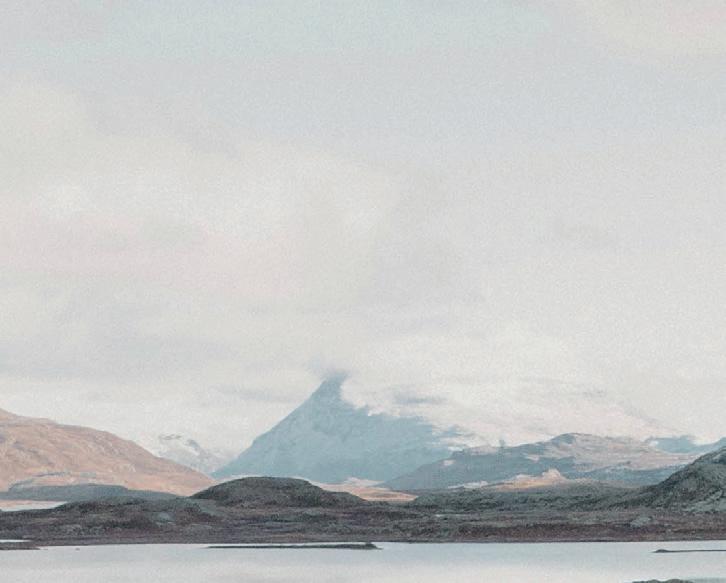
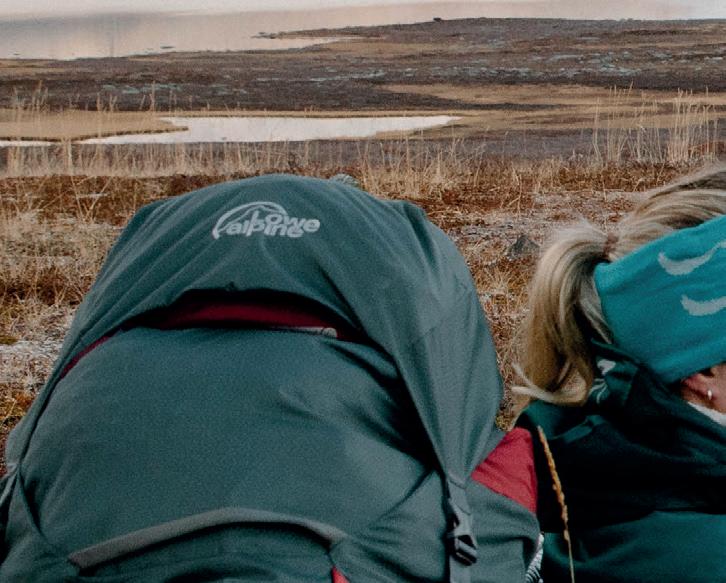
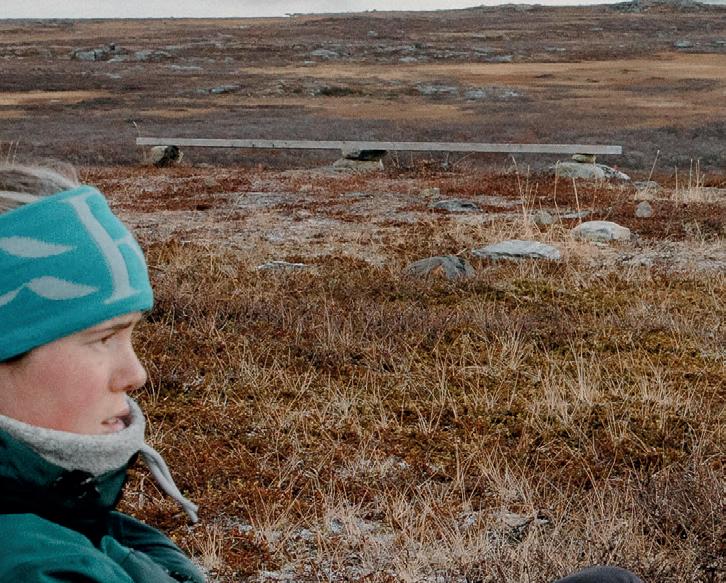


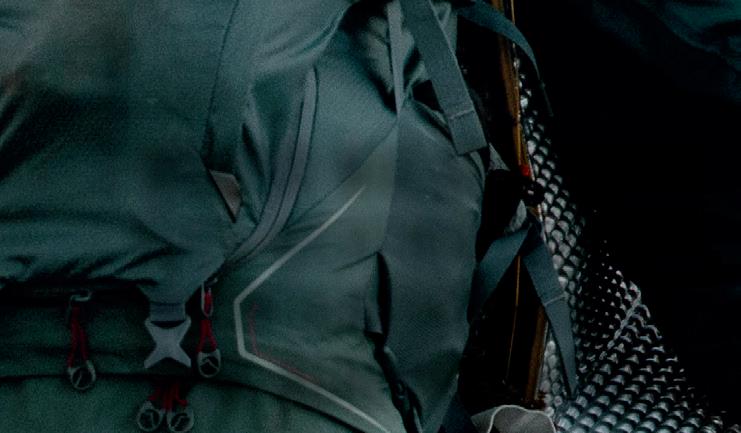
WINTER WALKING BOOTS
COLD WEATHER CLOTHING
MOUNTAINEERING GEAR
TRAIL RUNNING SHOES
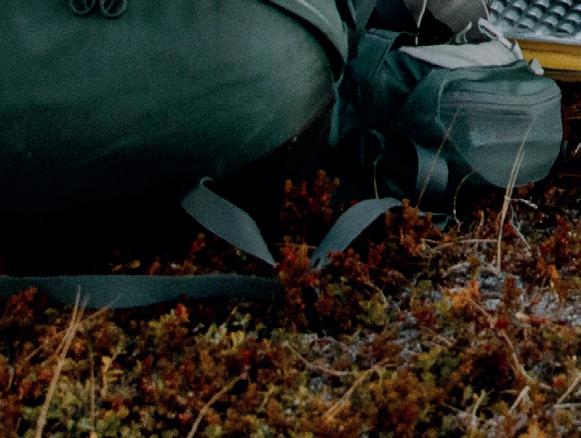


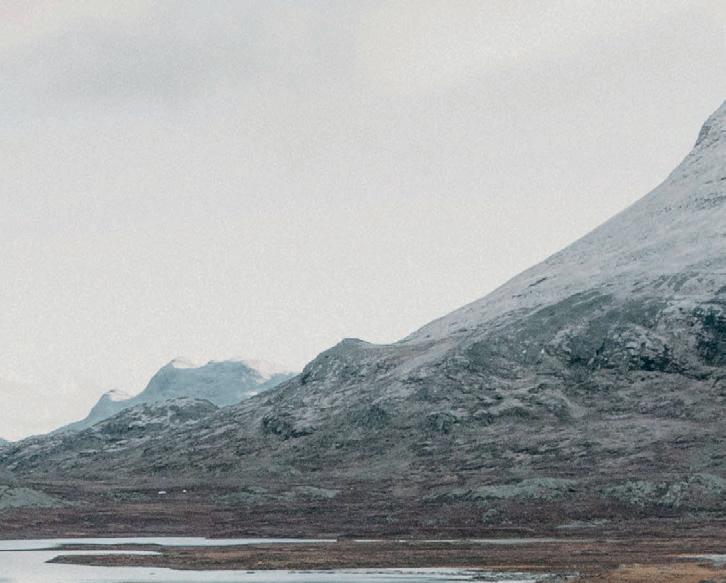
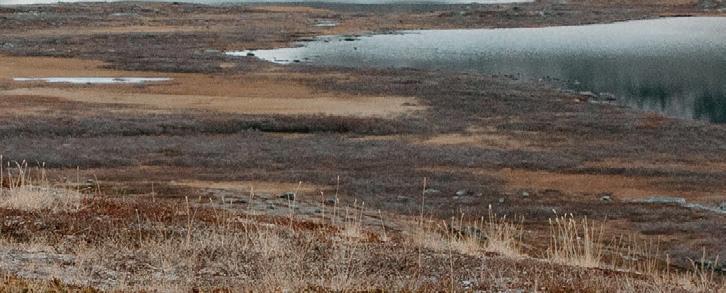
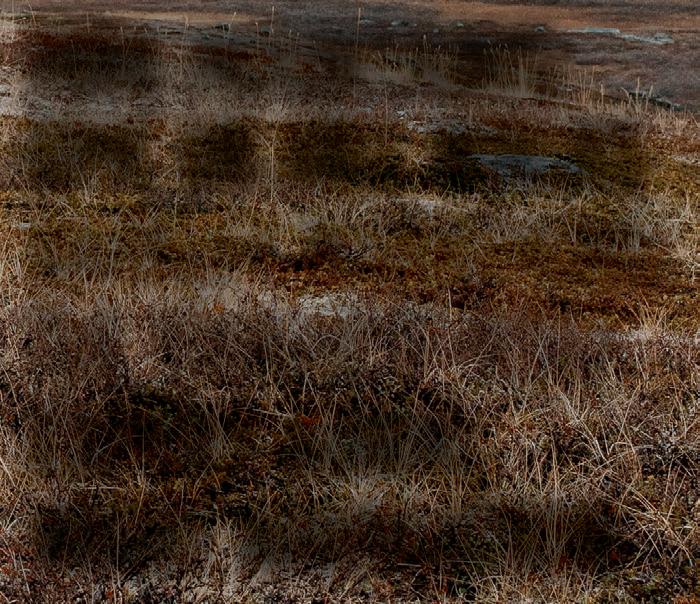
MINI MOUNTAINS: EPIC UK HILL WALKS BARKLEY MARATHONS: THE TOUGHEST TEST? EXPERT GUIDE: NIGHT NAVIGATION




BUILT TO BREATHE MOUNTAIN AIR
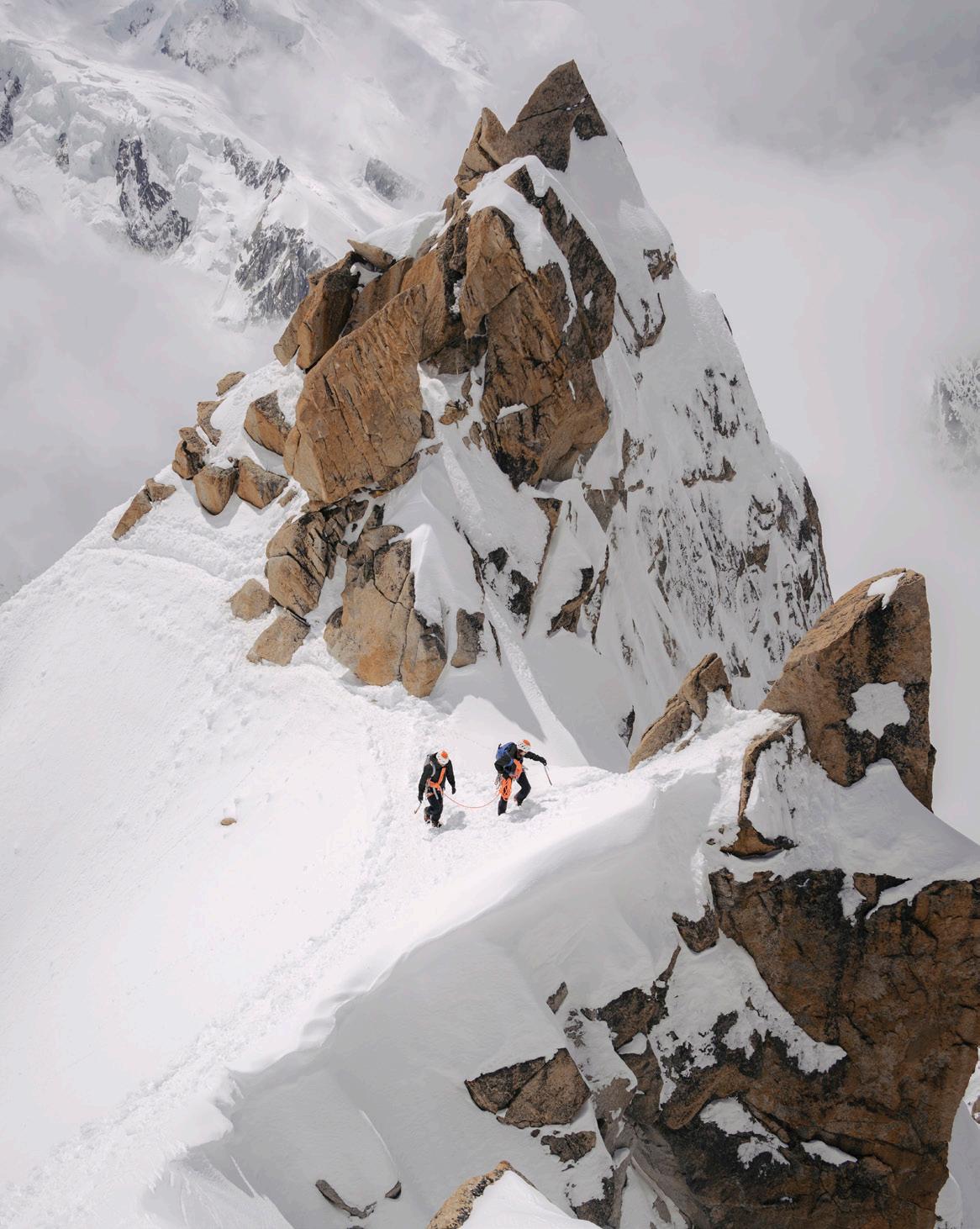
Welcome to our Autumn/Winter edition of Explore. In this issue, we focus on those who go beyond. They step out of their comfort zones, defy the status quo, and challenge the stereotypes. We take inspiration from those selflessly helping others, overcoming adversity, and changing lives.
To kick things off, we spotlight the brilliant work of Climbers Against Cancer. I met founder John Ellison in 2014, and his positivity and courage still resonate with me today.
Continuing with the valuable charity work, we join our Events Coordinator, Charlie, who volunteers for Severn Area Rescue Association, to learn more about their vital work. On page 10, we get to know Morag Skelton, a deaf Mountaineering and Climbing Instructor based in the Scottish Highlands. We discuss her passion for climbing and making the outdoors more accessible for the deaf community.
Alongside these incredible stories, we have our usual events roundup and top gear picks. Having the correct kit is crucial in winter, and these favourites give the performance you need in the cold and wet. As always, our full ranges are available online, and our shops are ready with personalised fitting services and top advice.
ellis-brigham.com
04. DIARY: WHAT’S ON
All the essential events for your winter calendar.
06. SPOTLIGHT: CAC
The emotional foundation story behind Climbers Against Cancer.
08. TECH TALK: FIELD TESTING
How mountain guides helped to create Rab’s new hardshells.
10. NO LIMITS
Morag Skelton on her life as a deaf climbing instructor.
16. MOUNTAINEERING JACKETS
Alpine armour for adventures above the treeline.
18. SEARCH AND RESCUE
All the highs and lows of being a search and rescue volunteer.
Proud to support

23. MINI MOUNTAINS
Eight hills that pack a punch –especially in winter.
30. MOUNTAIN FOOTWEAR
Top-quality footwear for all types of winter conditions.
32. BUYING GUIDE
All you need to know when choosing a pair of crampons.
34. CRAMPONS
C1, C2 and C3 sets for adventures on ice and snow.
36. SERENITY TO SURVIVAL
Anna Blackwell recalls an Arctic battle against the elements.
44. HIKING CLOTHING
Shells and insulation to help you conquer the cold.

For more inspirational content and ideas follow us on our social channels. We’d love to hear about your adventures – share them with us using the tag #ellisbrigham
46. BACKPACKS

Six packs that are perfect for supporting winter loads.
48. BARKLEY MARATHONS
David Miller was there to capture the infamous event last spring.
54. TRAIL RUNNING SHOES
Stride out with confidence this winter – whatever the conditions.
56. WINTER RUNNING GEAR
As the saying goes, there’s no such thing as bad weather...
58. NIGHT NAV SKILLS
Expert advice from Glenmore Lodge’s navigation pro.
61. HEAD TORCHES
Excellent options from the brands we rate.


62. WINTER LAYERS
Our favourite fleeces and softshells this season.
64. ACCESSORIES
The must-have items that will see you through the seasons.
66. STAFF ADVENTURES
David Davies on his road trip around the Land of Fire and Ice.

GORE-TEX Talk
Covent Garden
13 November
Join us for an inspirational talk with mountaineer, Tamara Lunger, and blind rock climber, Jesse Dufton, as they reflect on a quest to overcome their own adversities and personal tragedies while climbing the iconic Gausta Falls in Telemark County, Norway.

GORE-TEX Gear Tour
Covent Garden
14 November
Damaged your shell or bib pants recently? Here’s your chance to get your much-loved GORE-TEX gear restored free of charge so you can wear it for longer. Repairs include zip slider replacement, hole patching, hot tape sealing, cuff replacement and more.

Henry’s Avalanche Talk
Stores nationwide
October to November
With winter starting, it’s a great time to learn or refresh the skills needed to be a safe and confident skier on the mountain. Henry’s talks deliver both essential and in-depth information on how to make decisions and reduce avalanche risks.

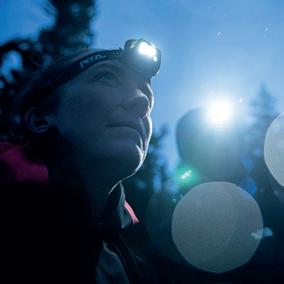
Knowledge Nights: Night Navigation Plas y Brenin, Eryri National Park (Snowdonia)
November
Take on the night with confidence. Join us on the hill with the experts from Plas y Brenin National Outdoor Centre to learn the fundamental skills that will help you feel more prepared and safer when navigating the mountains at night.
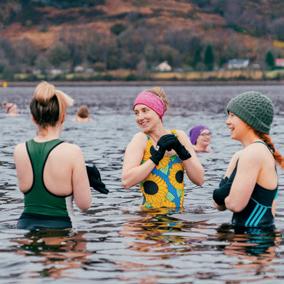
Fort William Mountain Festival
Fort William 13-16 February
Proud supporters of the festival, it’s one of our highlights of the year. The jam-packed programme includes compelling films, inspiring talks, workshops and guided outdoor activities, all set within the shadow of Ben Nevis at the Outdoor Capital of the UK.

Kendal Mountain Festival
Friday 22 November
We’ve teamed up with The North Face once again to take over the Brewery Arts Centre in Kendal to present an intimate evening of films and interviews. Expect compelling stories, open dialogue and audacious exploration. Last year’s evening was sold out so keep an eye out for the ticket release announcement.
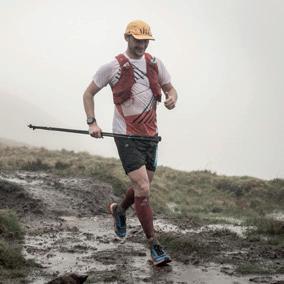
Knowledge Nights: How to Run
100 miles, with Charlie Gay
Bristol: 27 March
Manchester: 15 April
Covent Garden: 23 April
Our resident ultramarathon runner and events manager, Charlie, will take you through everything you need to know to confidently tackle your first 100mile ultra challenge.




Outside In: Outdoor Adventure Talks and Films
Manchester 17 October, 15 November 5 December, 16 January
We’ve partnered with Outside In to bring a monthly fix of inspiring talks and films. From cold water swimming in the UK to 8,000mile bike rides in the Andes, the series brings adventure back to our roots in Manchester.
For more information, up-to-date listings and to book your place go to ellis-brigham.com/events
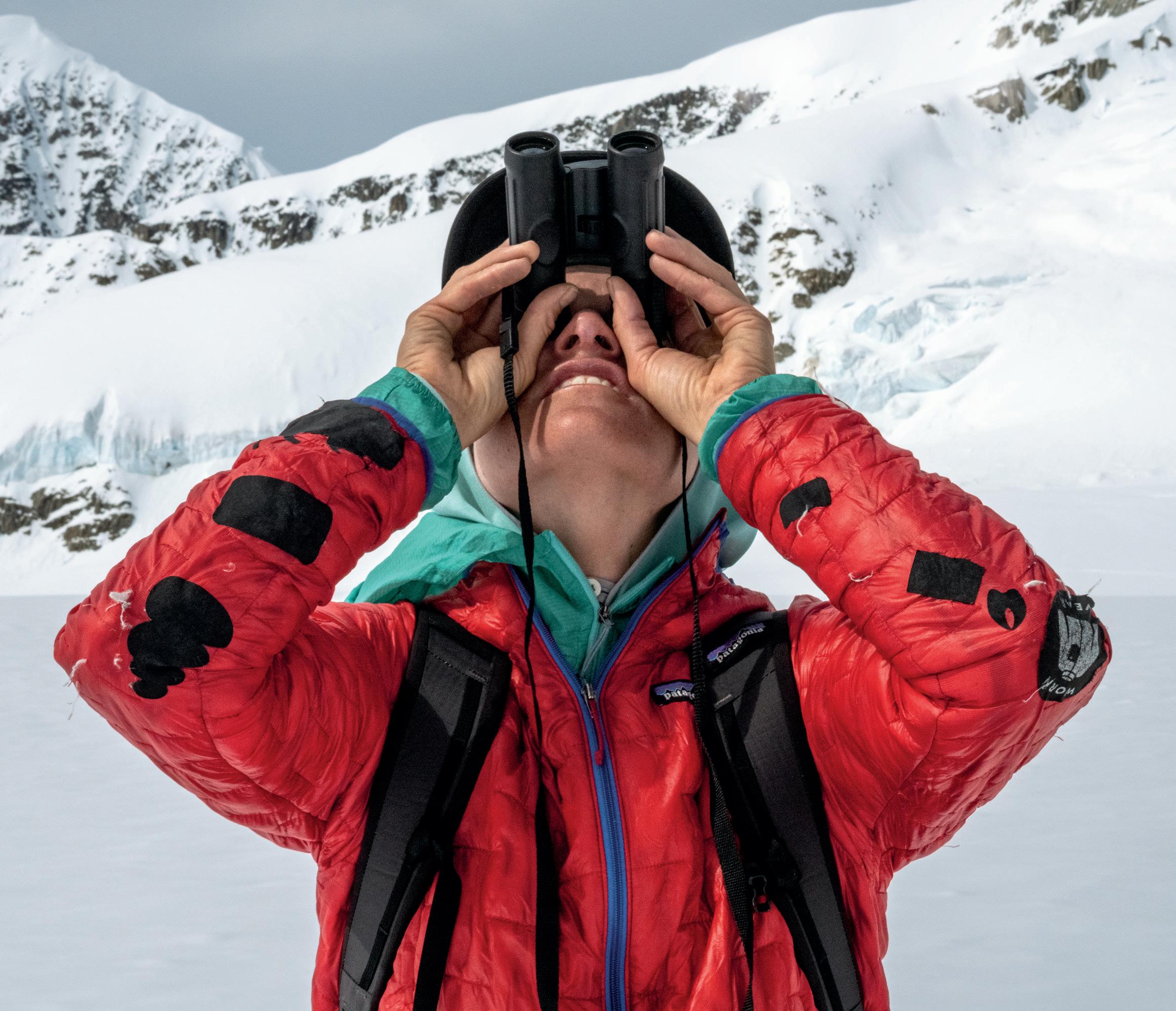
Built for years, not seasons.
We make quality gear for lifetimes of doing what you love. And for a future all of us can love, Patagonia profits go to protecting and restoring this wild and wonderful planet.
John Ellison’s cancer diagnosis sparked more than just a personal battle. It ignited a global movement within the climbing community.
When John Ellison banged his shin, he didn’t think much of it. As a climber, he was used to aches and scrapes. But as time went on, his shin wouldn’t heal. He’d also started passing urine more regularly but explained it away with increased exercise and greater intake of fluids. He eventually decided to visit the doctor and it was at this point in 2011 that John, passionate climber and climbing coach, father and husband, received the news he had cancer.
“The way he dealt with his cancer diagnosis was by being very open and talking about it to everyone,” says Helan Alexander, the sole employee of the charity that John founded, Climbers Against Cancer (CAC). “While this openness threw some people initially, they soon found themselves chatting to him about it.”
Since its foundation in 2012, CAC have been encouraging people to feel comfortable about discussing the disease. While the charity are sticklers for ensuring all funds raised go directly to research – or “the people in white coats with Petri dishes,” as John put it – they have also become adept at putting real people’s stories at the centre of their work. The website hosts a page of personal essays where anyone can post about their own experience. The idea of ‘strength in numbers’ and how the climbing community could raise awareness and support people around the globe living with cancer was the catalyst John needed for CAC’s creation.
“As a climber himself, John was very aware of the amazing community around the sport. He received so much support from his climbing friends, hence the charity’s name. The first batch of t-shirts were sold to these very friends. From there, CAC became the climbers’ charity and the only official charity of the International Federation of Sport Climbing.”
“As John used to say, ‘In life, we’re all climbers’”

CAC started out selling colourful t-shirts to raise funds for cancer research facilities around the world. John rallied his community and used the power of social media to spread his message, successfully donating thousands of pounds to vital research. Sadly, John lost his battle with cancer in 2015, but his mission to unite climbers against the disease and make a real difference continues.
Today, CAC sell merchandise online and at climbing events and donate huge grants to cancer research around the world, mainly thanks to funds from its supporters who invent weird and wonderful, vertically inspired challenges to raise money for the charity, whether they’re climbing the height of Everest indoors or as many routes on a crag as possible in 24 hours. “As such a small and friendly charity, I think people identify with us. We are not some big, faceless corporation. We reach out to people. Direct communication does make a difference,” says Helan.
So far in 2024, CAC have donated £7,568 to Prostate
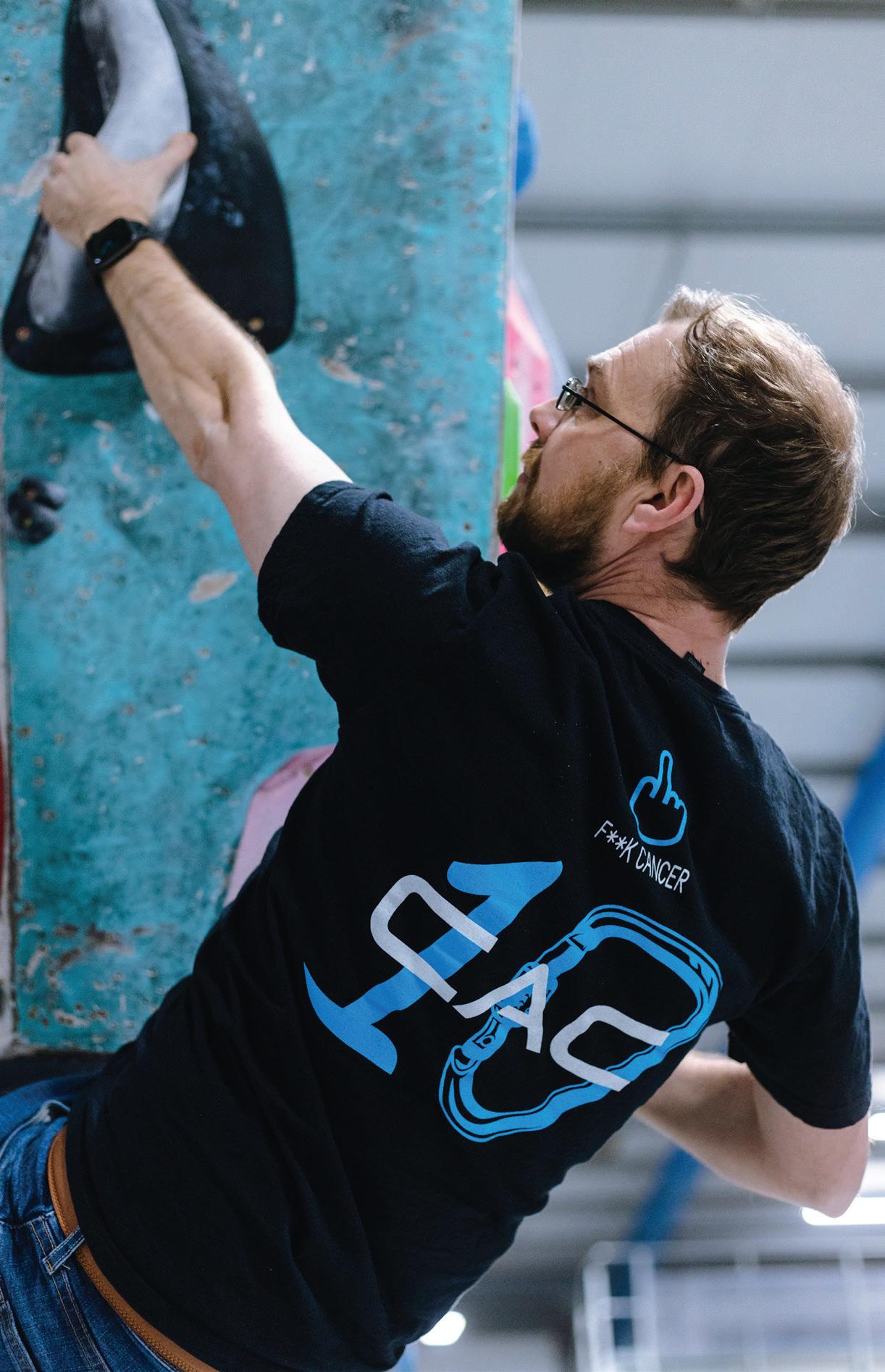
Cancer UK and £6,747 to Breast Cancer UK. They have also donated £10,000 split between two projects in Alberta, Canada, £10,000 to Nepal for a scheme around cancer research in children, and £10,000 to a French project that takes cancer sufferers climbing outdoors. Further grants will be going out to melanoma and bowel cancer research in the UK, and CAC are always open to new requests for funding.
When John founded the charity he was determined that all funds raised would go directly to cancer research and not into the running of CAC. He was adamant that the running costs associated with large charities would never apply to CAC. He brought sponsors on board with the view that the money they gave each year would cover the costs of operations and every penny made from fundraising or sales of CAC merchandise would go directly to cancer research. Ellis Brigham (EB) have been one of those sponsors since 2015.
“I went to a talk and John was speaking as part of it,” says Mark Brigham, Director at EB. “I don’t think he would
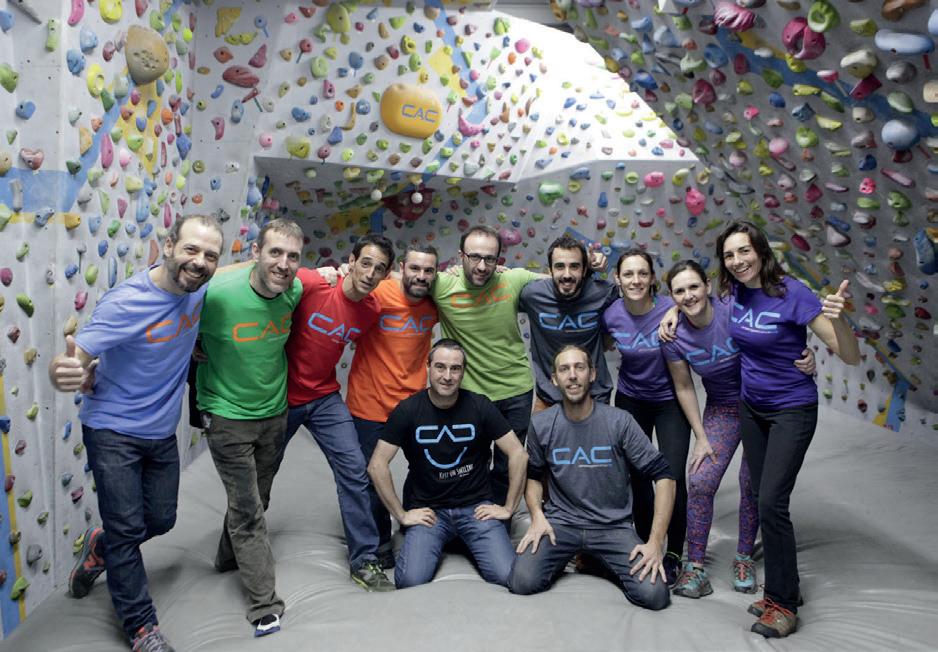

mind me saying that although small in size, he was great in stature, and he left a lasting impression.” Overwhelmed by John’s perspective and impressed by how he galvanised his community, Ellis Brigham agreed to become a sponsor. Donating to the charity each year, they use any opportunity possible to help raise the growing profile of CAC, including by stocking the charity’s t-shirts.
Moving forward, CAC will be relocated from its Lancashire base to Kendal, and the charity have recently expanded their remit to include funding initiatives which work with people who are living with a cancer diagnosis. John Ellison’s legacy continues to inspire climbers and non-climbers alike, proving that with determination and a united, open community, we can make great strides forward. As John used to say, “In life, we are all climbers.”
Find out more about Climbers Against Cancer, their fundraising initiatives, and community stories at climbersagainstcancer.org where you can get involved too.
How the next generation of mountain gear that appears in Ellis Brigham was forged through real life experiences in harsh Highland winters.
On-the-hill testing has always formed a vital part of the process when it comes to selecting gear for our autumn and winter ranges and perhaps one of the strongest examples of this has been our partnership with Rab and the highly experienced mountain guides at Glenmore Lodge. It’s a collaboration that, over the last few years, has helped to shape tried and tested gear that’s fully proven in the mountains.
Rab’s design approach stems from the original vision of founder, Rab Carrington, who wanted to make gear that was “nothing fancy or over-engineered – just honest, hard-working pieces that you’d rather repair than replace.” This is why, to this day, Rab’s process for developing new apparel is focused on durability and long-lasting performance, designing products for life, most notably through expert tests in real-world environments. The brand sums this up with a simple mantra: “Test, Trial, Test – Repeat…”
Since 2019, Rab’s testing partner has been the Scottish National Outdoor Training Centre at Glenmore Lodge. Here, a team of instructors put Rab products through their paces and provide invaluable design feedback. This allows Rab to finetune fit, features and fabrics and achieve the perfect balance of durability, comfort, and protection.
A large proportion of this testing is undertaken high up on the Cairngorm Plateau, a place where heavy snowfall, thick ice, and treacherous cornices are common. Fierce winds can exceed 100 km/h, creating whiteout conditions that make navigation extremely challenging, turning
the landscape into a harsh, unforgiving environment. And Glenmore Lodge’s expert instructors are out in these conditions right throughout winter, guiding students and gaining valuable real-world product experience and feedback for Rab.
“THE
“During winter, our instructors are exposed on a daily basis to the harshest conditions you’ll find anywhere in the UK,” says Glenmore Lodge Chief Instructor, Heather Morning. “Our Rab gear also needs to cope with the ‘human factor’. Instructors undertake some serious technical and physical challenges in the winter, and teaching winter mountaineering and climbing can mean repeated abrasion from ice and snow, rock, equipment, and repetitive actions like demonstrating ice axe self-arrests”.
One of the most recent results of Rab and Glenmore Lodge’s testing process is the newly updated Latok collection of hardshells.
Robust and fit for purpose, the jackets in the series have all been fine-tuned to allow the user to rely on their kit without worrying about getting wet and cold. The fit across the collection has been ergonomically designed to offer full freedom of movement, while other features have been developed in response to professional needs.
As such, the Latok series of shells are a core element of this year’s winter collection at Ellis Brigham – a buying decision that was directly influenced by their proven realworld use. Mark Brigham, Director of Ellis Brigham, explains: “When our staff along with Glenmore instructors wear clothing day in, day out in Scotland it means that the durability and performance are tested to the limit – usually way beyond the average person’s use of a garment. This gives us confidence that these items will withstand prolonged use in extreme environments."
So, those repeated ‘test, trial, test’ processes are an incredibly important performance indicator. Mark confirms: “The information fed back by Glenmore plus our own first-hand experience of how a piece of clothing performs, guides our gear selection. Just as our customers put trust in us when recommending gear, we put our trust in this process to inform our decisions. After all, there are few other environments where you can get 3-to-4 seasons in one day like Scotland – which makes it a great testing ground.”
You can read about the new Latok shell on page 16 or go to ellis-brigham.com/rab for plenty more from the range.
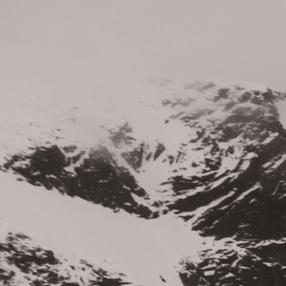
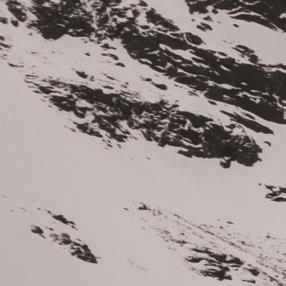

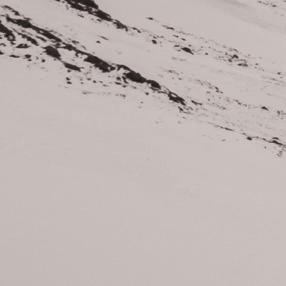








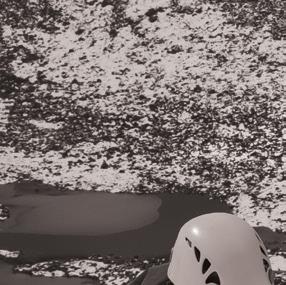
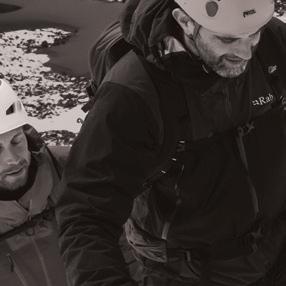
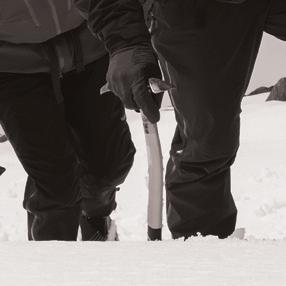


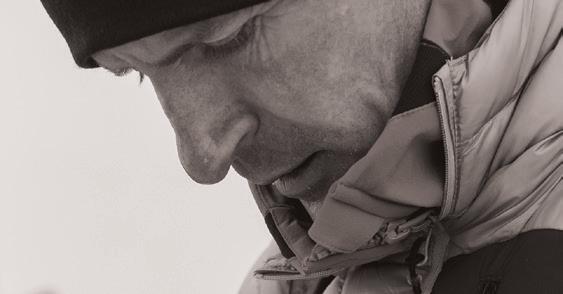
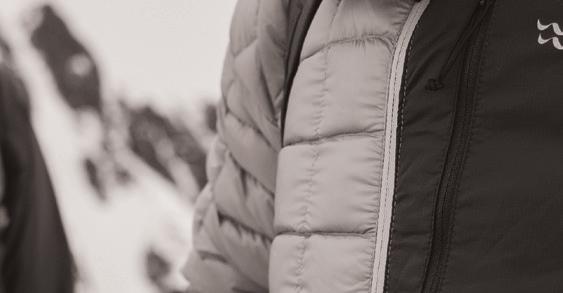
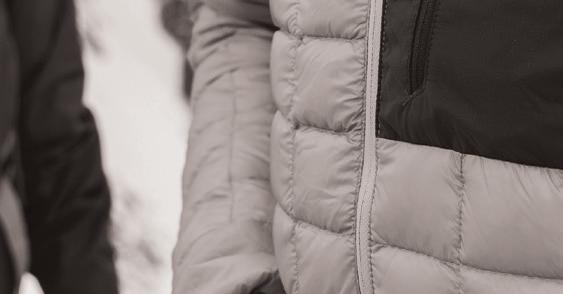

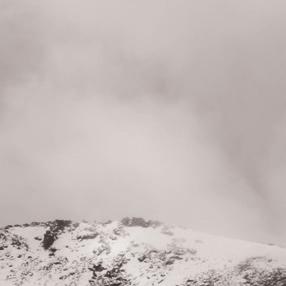











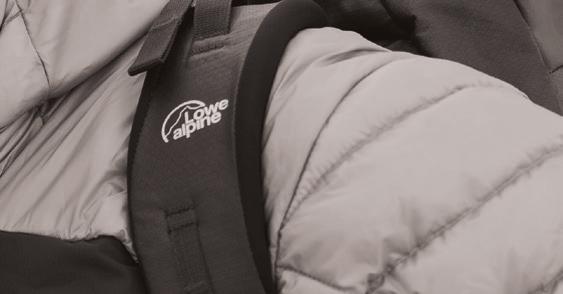


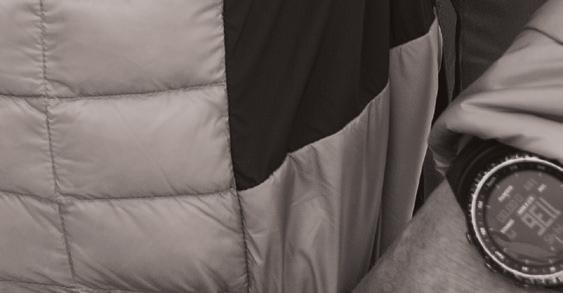

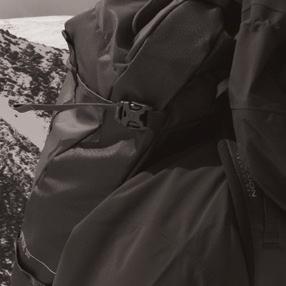



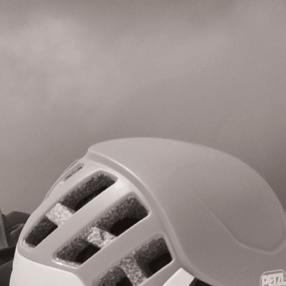

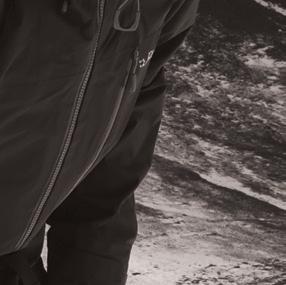

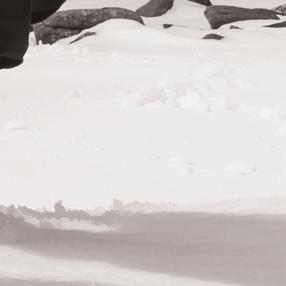










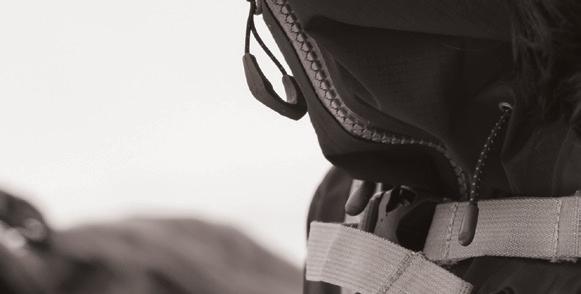



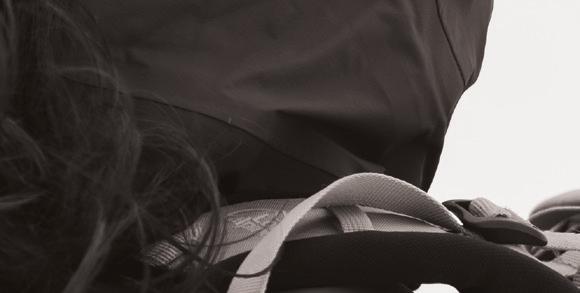



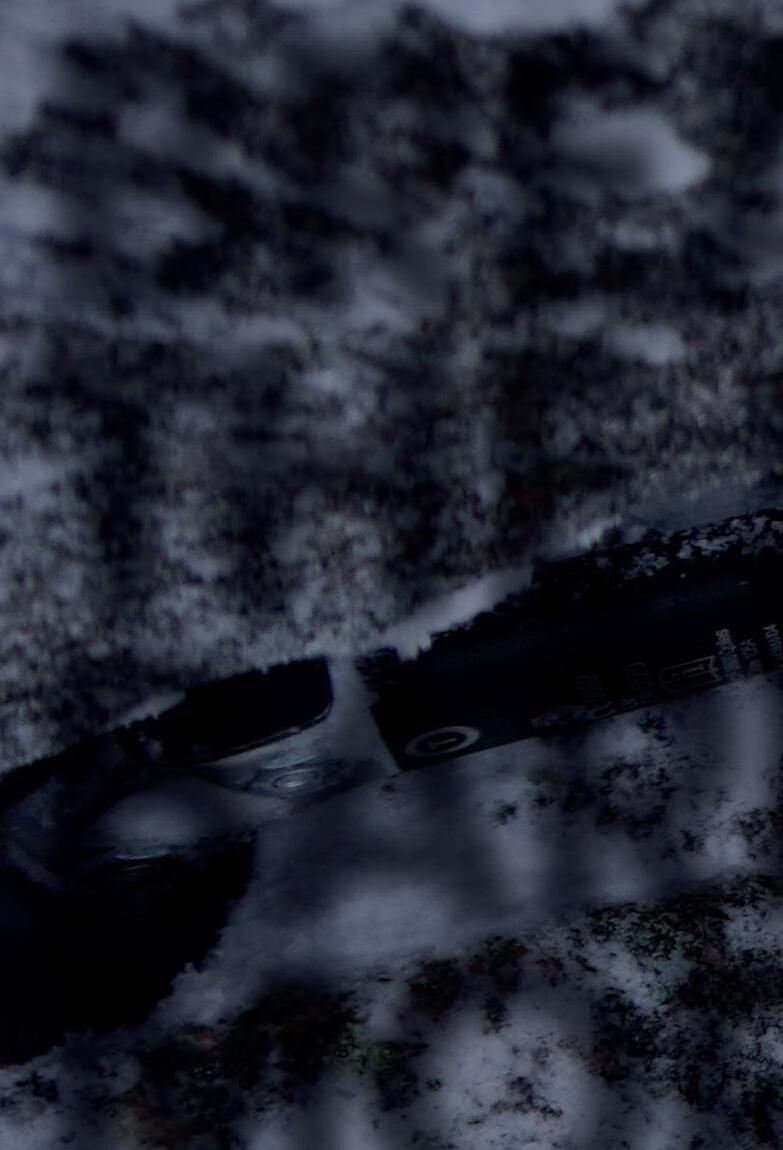


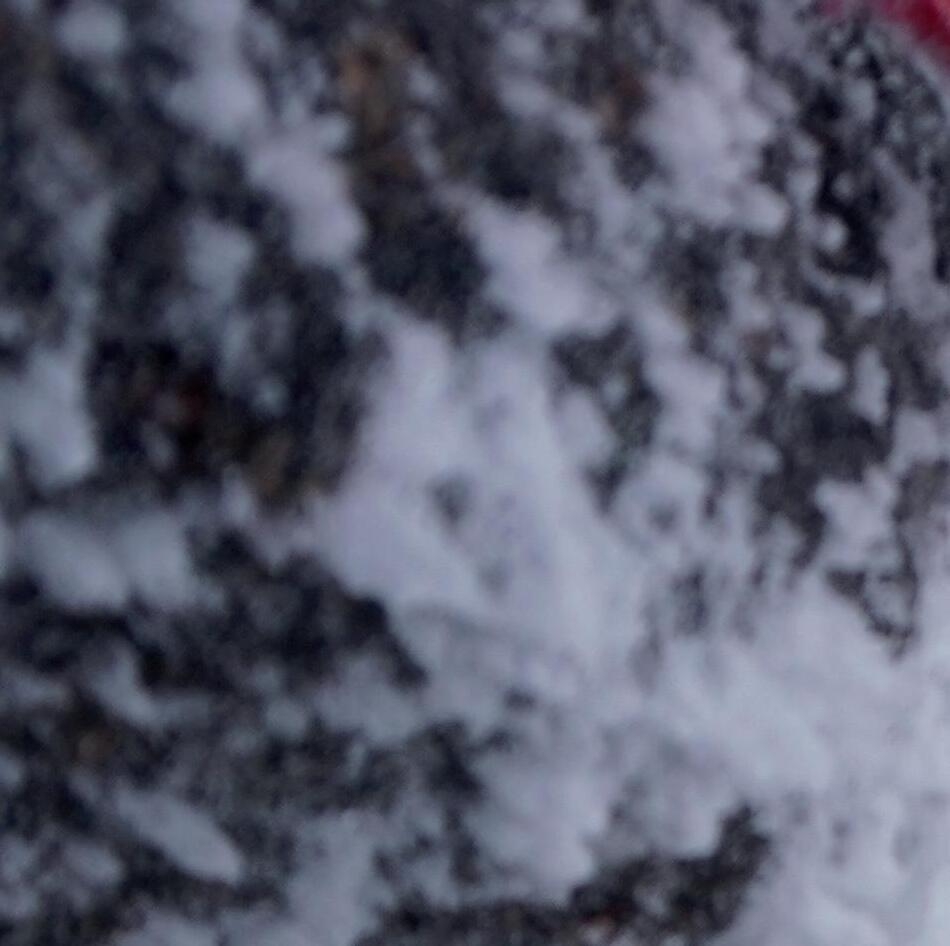
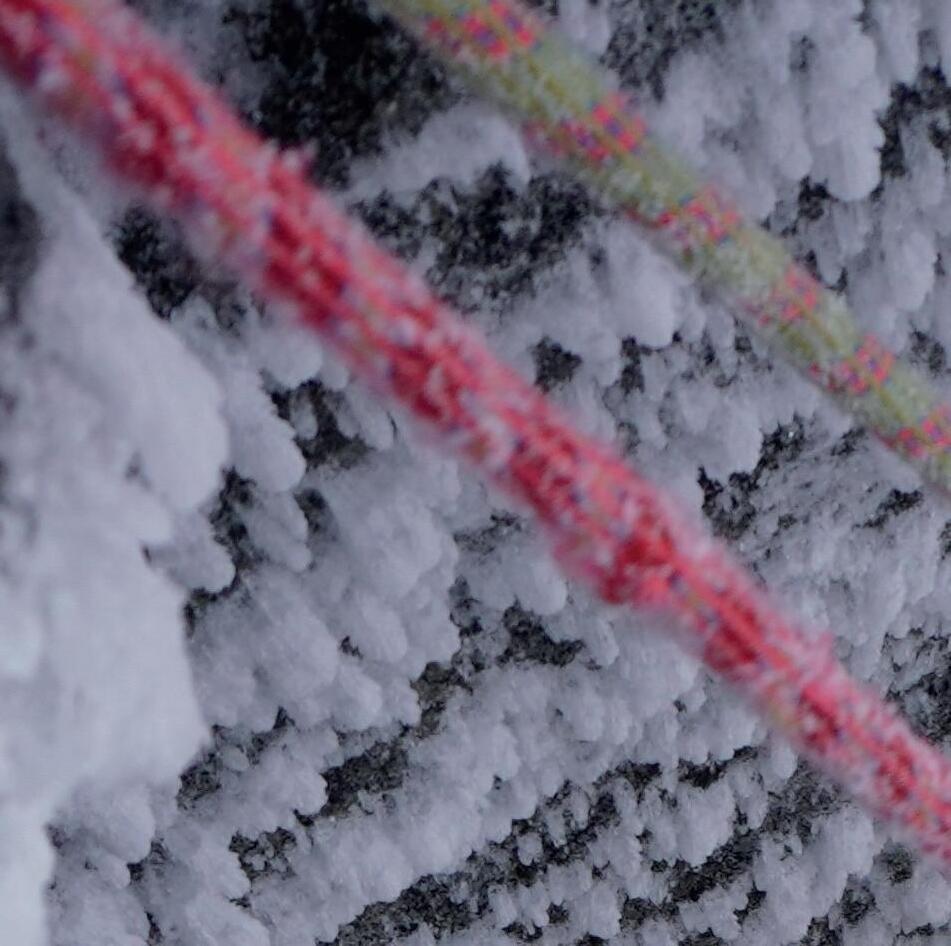


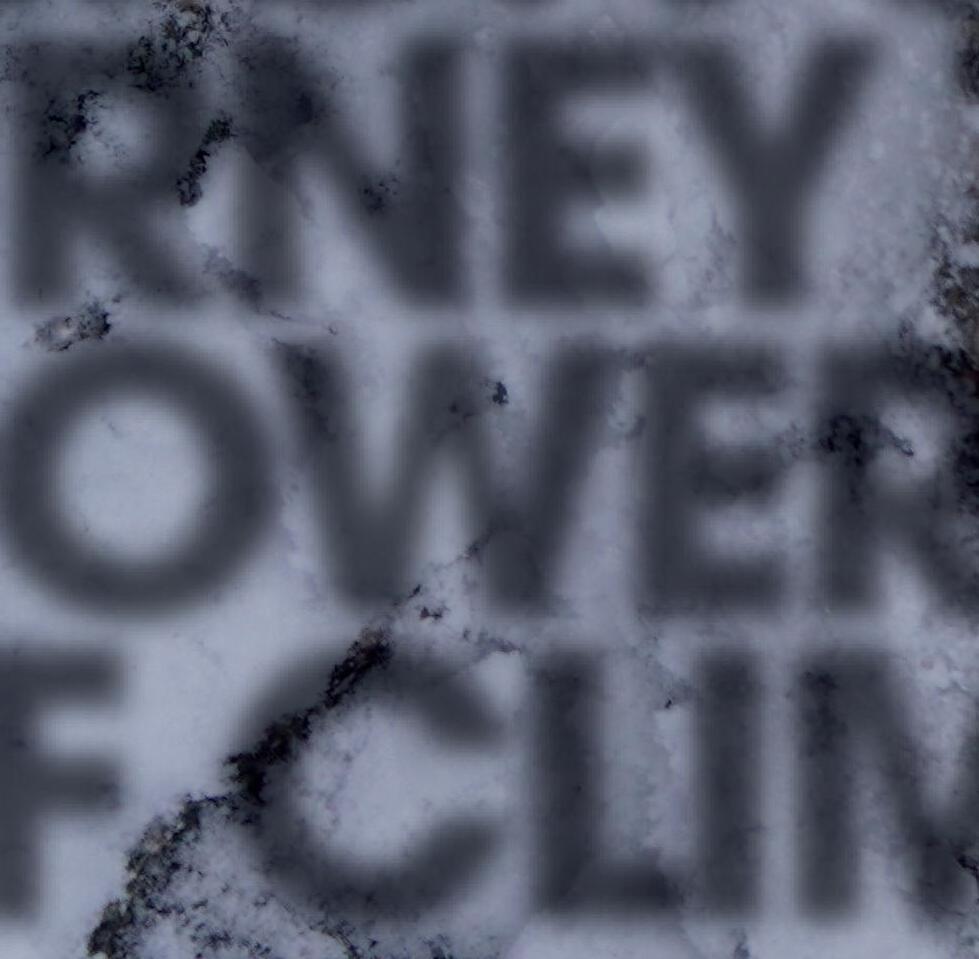
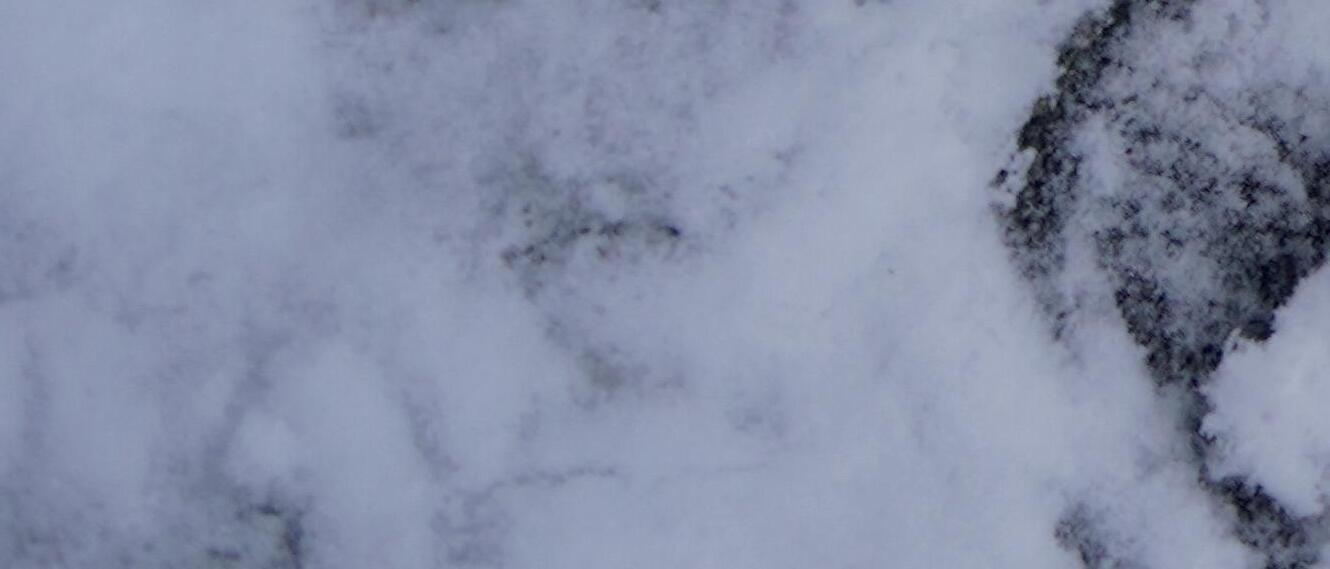

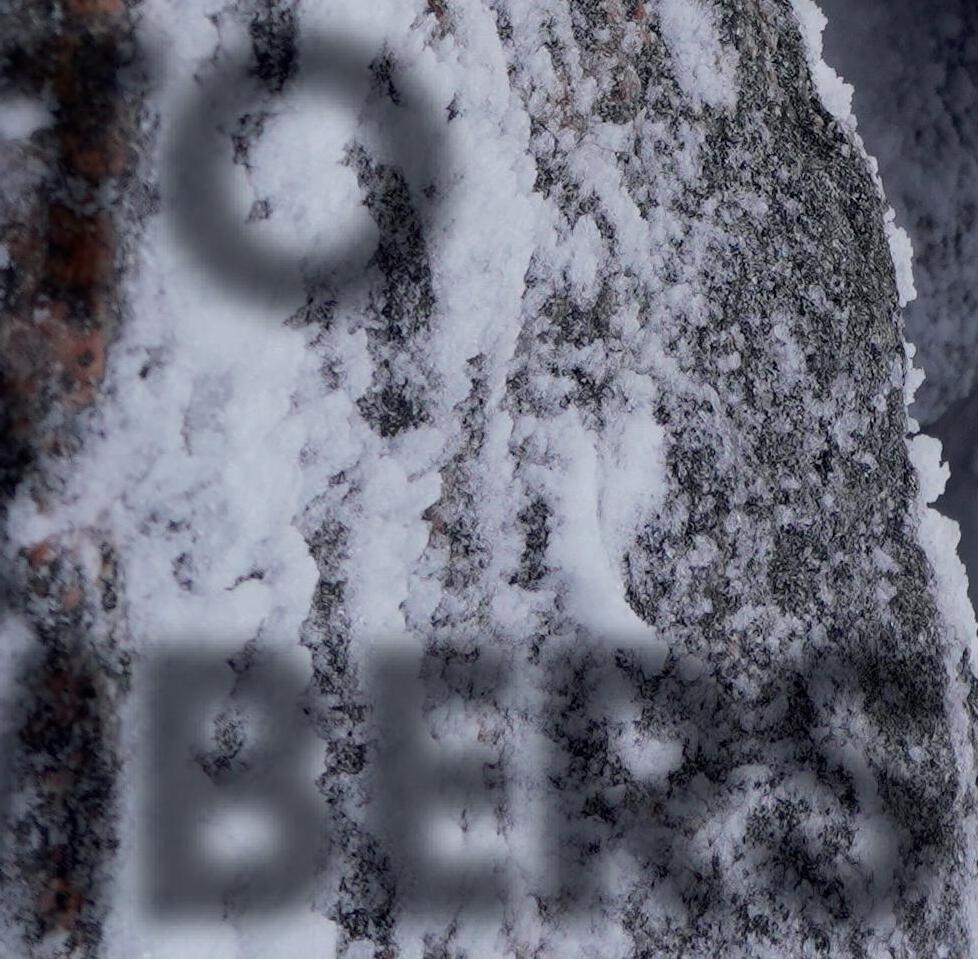

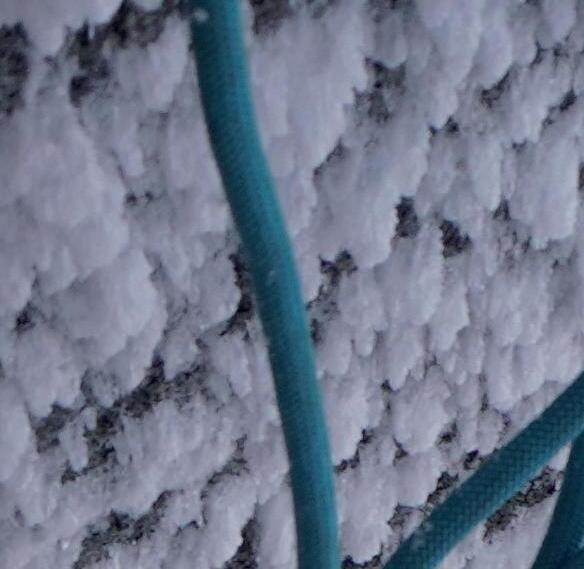
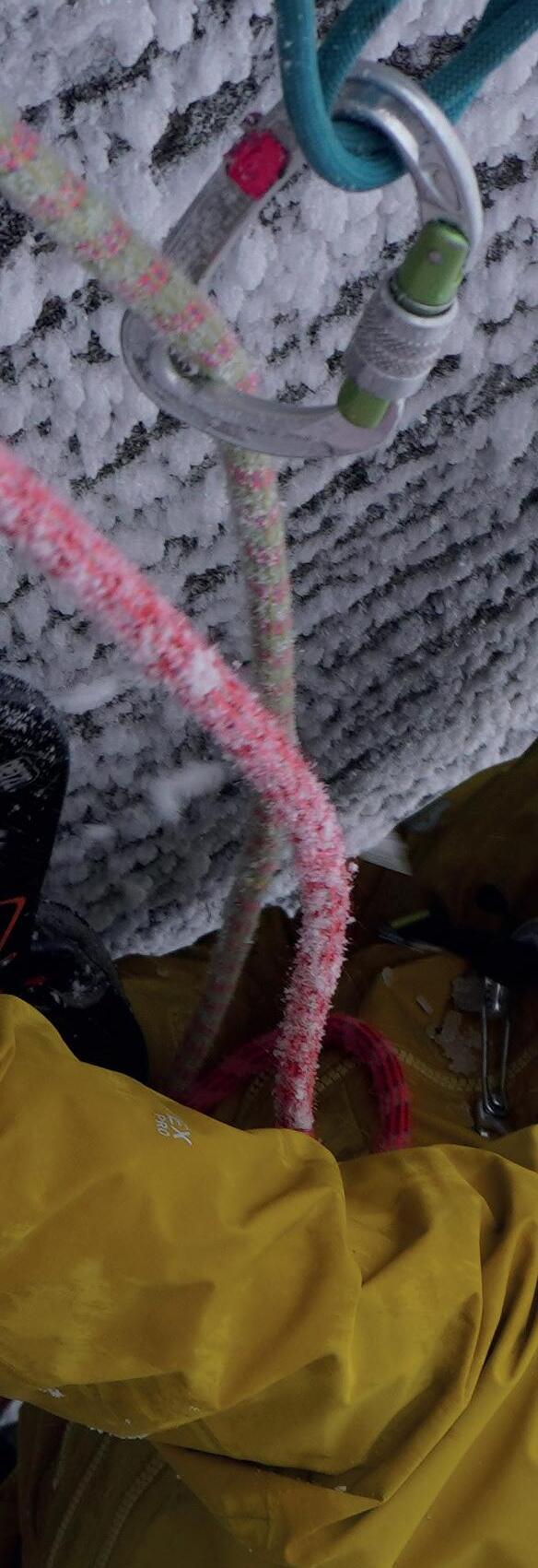


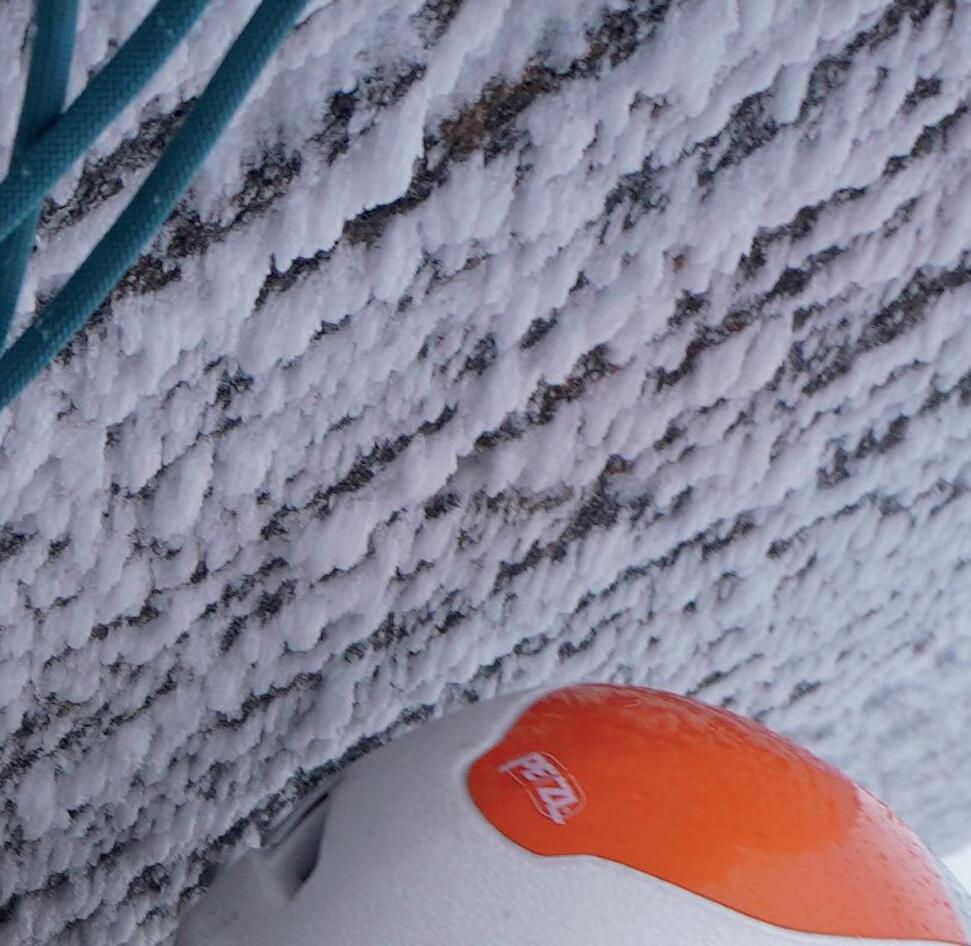
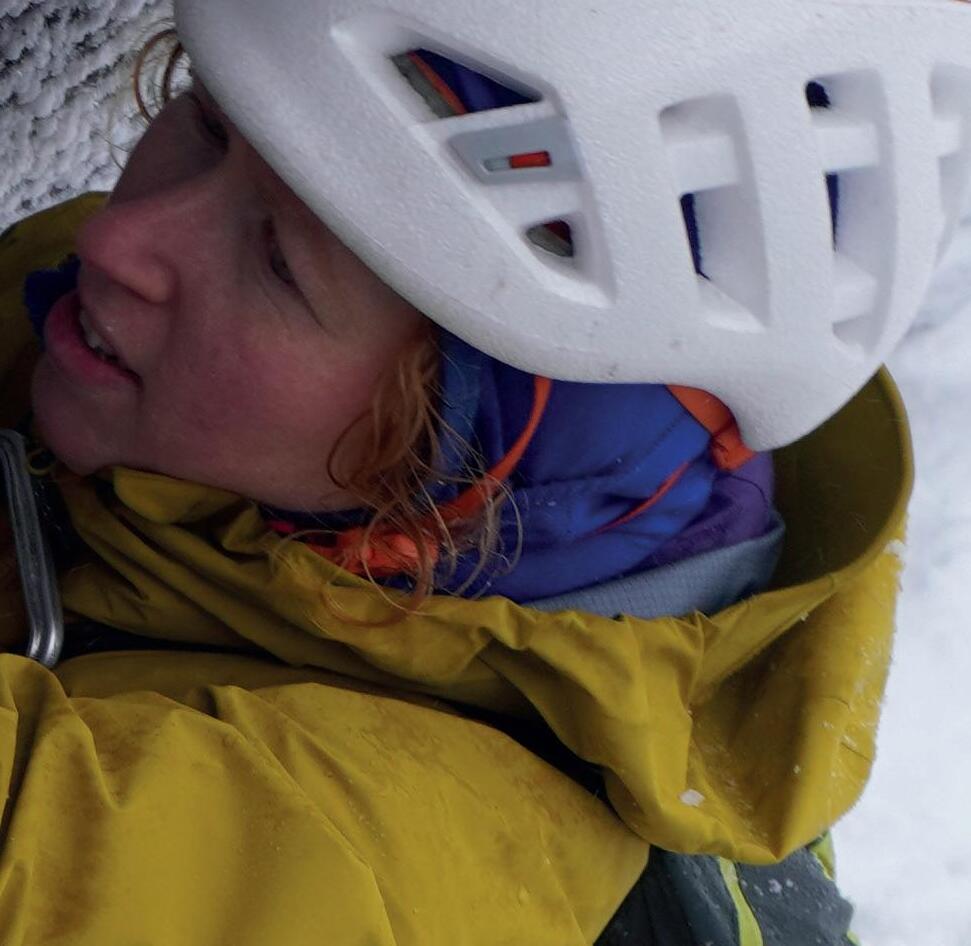


As a profoundly deaf climbing instructor, Morag Skelton is breaking new ground in the Scottish Highlands. In this interview, she shares her journey to scaling high peaks, her passion for making the outdoors accessible to the deaf community, and how she’s helping others navigate the mountains in a new way.
In June 2024, Morag Skelton guided a group of three people on a weekend hill navigation course in the Scottish Highlands. As a Mountaineering and Climbing Instructor (MCI), Morag is no stranger to the intricacies of navigation, nor the demands of the outdoors. She grew up in Scotland and spends most days in the mountains with friends or her husband, often with her Australian Shepherd Aila in hot pursuit. She runs, hikes and climbs. She has worked all over the world as a ski instructor and guides climbers taking their first steps on rock. The outdoors is familiar to her. And yet this particular working weekend, she says, was her most unique to date. That weekend in June, Morag guided three people who, like her, were born profoundly deaf.
“Navigation is a bit different for deaf people who sign because they’re not just learning new skills, but also new words,” Morag explains. “There’s a whole vocabulary to navigation and there are signs for those words – contour for example. Everything takes a bit longer.”
The course was the first of its kind for outdoor training centre Glenmore Lodge. One client, like Morag, had a cochlear implant. All clients – and their guide –communicated solely in British Sign Language (BSL) for the whole weekend.
There are at least 12 million people in the UK who are deaf or have hearing loss according to Royal National Institute for Deaf People (RNID) research, equating to around 1 in 5 adults. An estimated 25,000 people in the UK use sign language as their main language.
“For many deaf people, learning things like this requires an interpreter to sign for them, and it can slow things down even more. It feels amazing to be able to teach people directly. I’m really excited for the next one.”


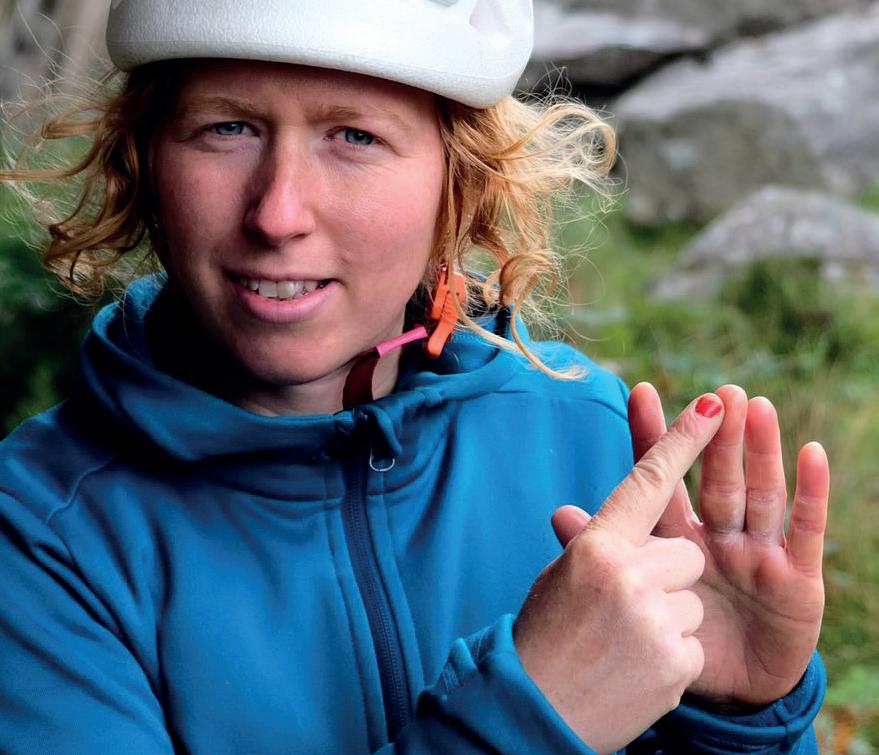
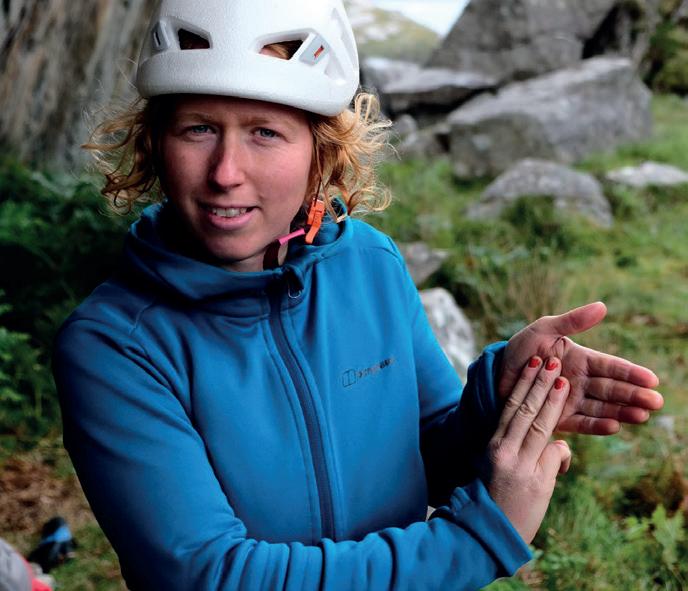


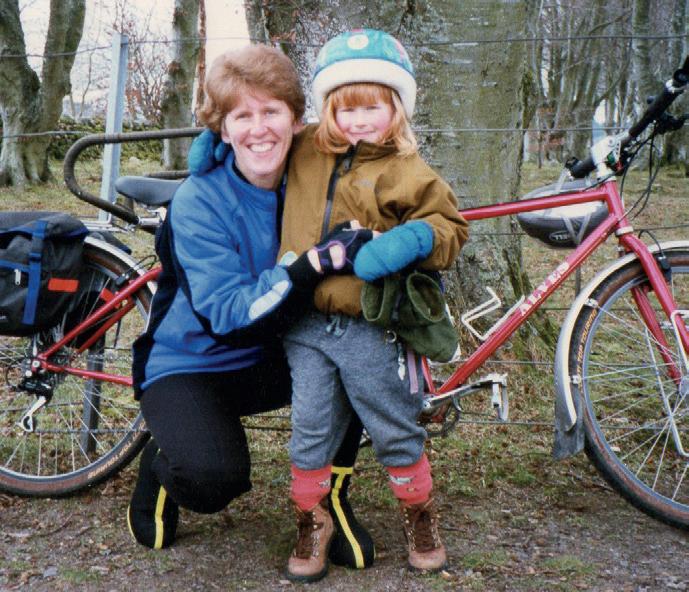
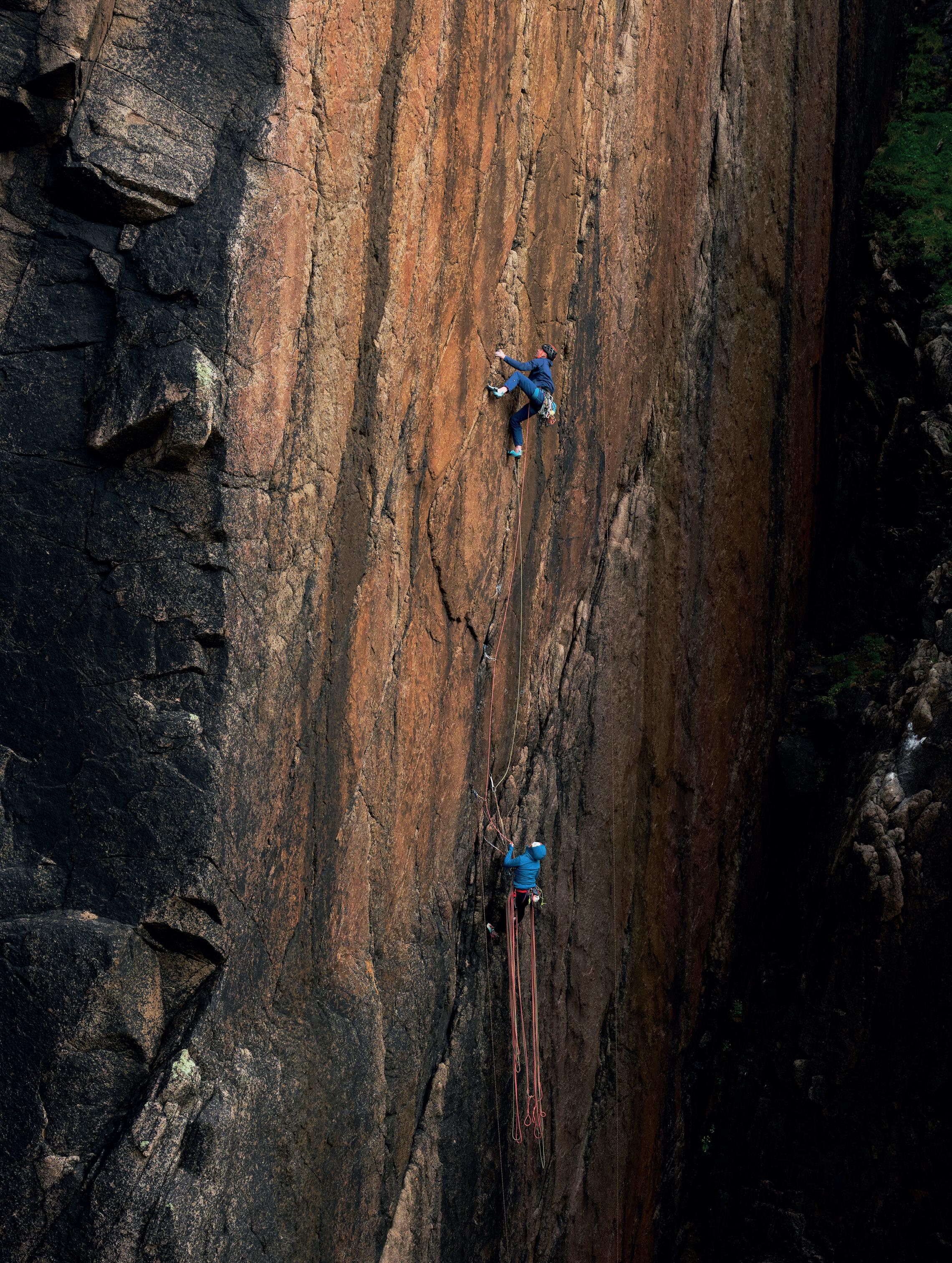
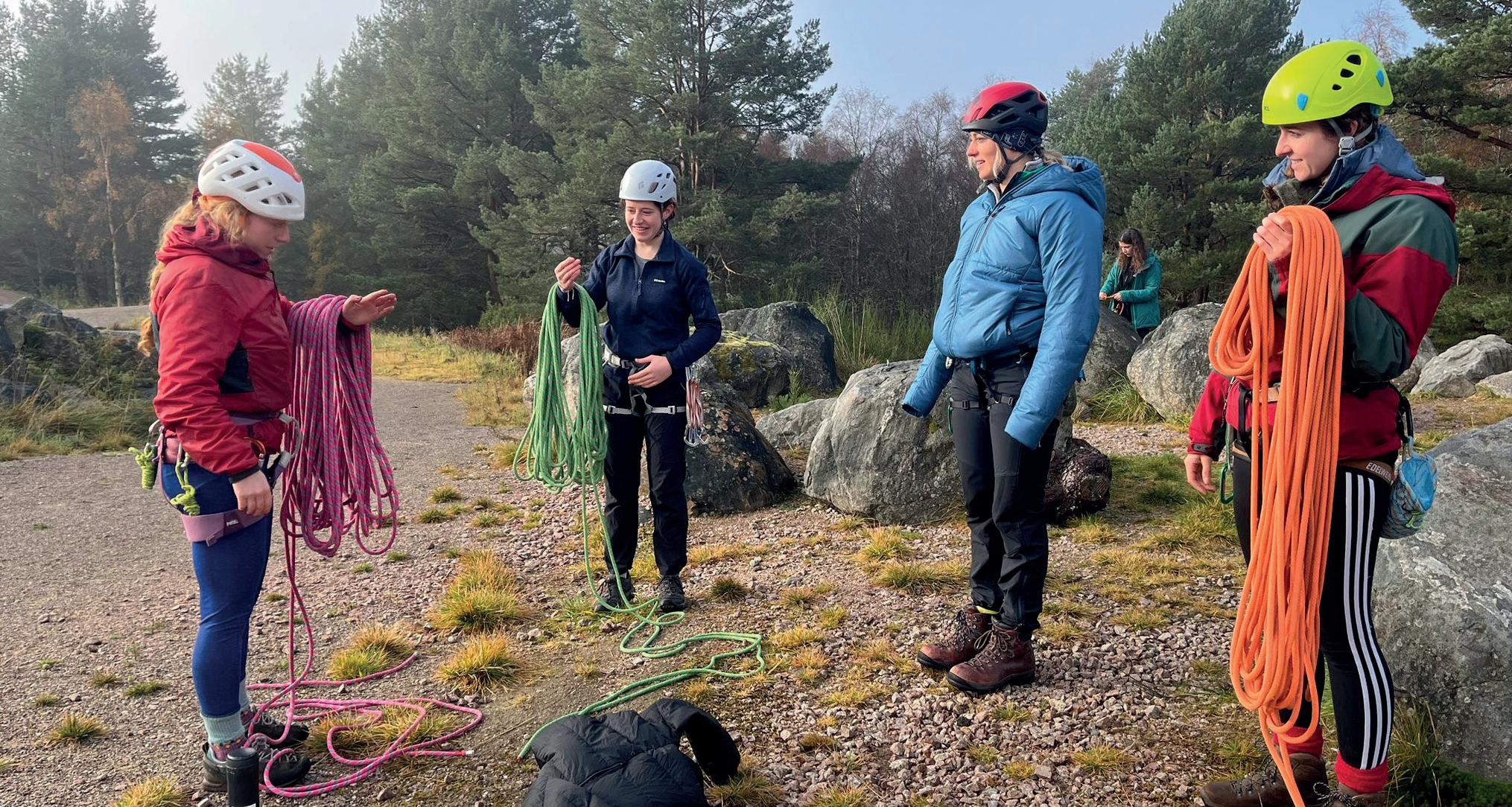
“NAVIGATION
apply for a scheme that meant you did training and skill courses for free. I did a five-day climbing course, and I basically ditched cycling after that. I just went climbing, climbing, climbing.”
SIGN...”
Morag’s introduction to the outdoors came at a young age while strapped into the child seat on the back of her mum’s bike. She found her feet – and a pair of skis – a little later in life, but it was a chance job opportunity that saw Morag fall in love with mountaineering and rock climbing.
“I grew up as a cyclist,” she says. “And then when I was a bit older, I did back-to-back winters ski instructing in Japan, Australia, and New Zealand. When I went to settle down back in Scotland, a friend who was working for Glenmore Lodge suggested I get a job there.
“I met other people my age, and they were all really into climbing. They kept asking if I wanted to go, so I was like: OK, let’s go climbing. I remember one of my first routes was a VS [Very Severe] multi-pitch,” she laughs. “I was quite pumped and couldn’t move, so my friend just pulled me up!”
“The system at Glenmore was that you did jobs like housekeeping or dishwashing, but you could
Shortly after falling in love with climbing, Morag met her now husband, Jamie, a climber too. She became further immersed in the world of rock as they climbed almost every day together, ultimately deciding to pursue her passion as a career.
“I did my single-pitch award and then only two years later I did my MCI training. But it wasn’t until four years later that I did my assessment.”
The training itself – predominantly accessed by hearing people – presented challenges that Morag hadn’t anticipated.
“It was a lot of listening, maybe 50% listening,” she says. “When I listen, I have to lip-read the whole time and I don’t have time to look down and take notes, or I will miss things really easily. So, at the end of the day, I had to go to my bedroom and write everything down, so I didn’t get any rest time. I was so tired. I feel a bit stupid now that I didn’t ask for a note-taker. After the training, I just thought, well, it’s going to be really, really hard to do the assessment.”
Plagued by feelings of self-doubt, Morag put her plans on hold. The Mountaineering and Climbing Instructor qualification is the highest level of certification for summer outdoor instructing and includes all aspects of summer rock climbing, coaching of lead climbing, and scrambling. The assessment takes place over five days and includes a simulated teaching day with two clients.

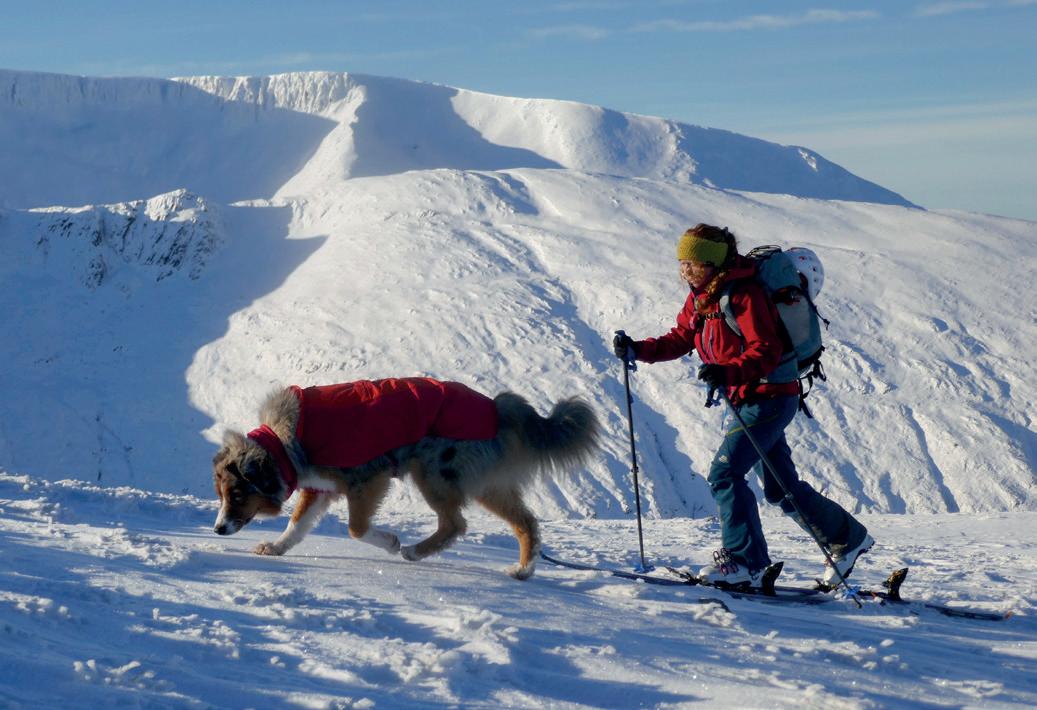
“I had decided I wasn’t going to do it, that it wasn’t for me,” says Morag. “It was at the end of our honeymoon in Spain in 2022; Jamie and I don’t usually drink, but I’d had one beer and was really tipsy. Suddenly I was talking about it again, and Jamie said: ‘Just book it’. I couldn’t sleep for three nights before I did, and then another three nights afterwards!”
Prior to the assessment, instructors must have logged a number of prerequisites, including 20 days of rock climbing instruction and 20 in sole charge of a group in the mountains. Still, after completing those, a sense of doubt crept up on Morag.
“Even then, I wanted to put it off. Jamie suggested postponing it until the following year, but I’m not a very patient person,” she laughs. “I thought, no, I’ve worked so hard. I’m going to do it.”
Bolstered by friends and other women in mountain training careers, Morag took the plunge, arranging for some small adaptations to her assessment that accommodated her deafness, including meeting with the facilitators beforehand to discuss how best to communicate. She qualified as an MCI in August 2023. Since then, she’s turned her attention to the future; normalising deaf awareness in the outdoors and outdoor training and fostering a more accessible climbing community for deaf and hard of hearing people.
“I just feel like we need to do more work. Climbing walls are a good starting point, but we need more support in walls too,” she says. “Not many deaf people have high-paying jobs, so my worry is that many won’t be able to afford courses. Then if the guide doesn’t sign, they might need to hire an interpreter too. Finding an interpreter who is comfortable scrambling
or climbing then narrows it down even more. We need to be thinking about that.”
“Of course, it’s still really early days, but I would love to do a Continuing Professional Development course in deaf awareness for outdoor instructors too – for anyone that wants to be able to communicate with deaf people in climbing and walking. That’s one of my dreams.”
Morag’s work is bridging a gap for deaf people in the outdoors, with her drive to facilitate change and education. Soon after the navigation weekend, she guided another deaf client on Skye using BSL.
“It was my first time guiding a deaf client 1:1. It’s another dream I’ve had for a while and I definitely want to do more,” she smiles. “She really enjoyed herself and it was amazing to be able to communicate in sign language to each other the entire time – a very rare sight to see on the Cuillin Ridge!”
“I think now my aim is to encourage more people from the deaf community to believe that it’s possible. A lot of deaf people may not think that they can go scrambling or climbing, but that comes with awareness from both the deaf and hearing communities.”

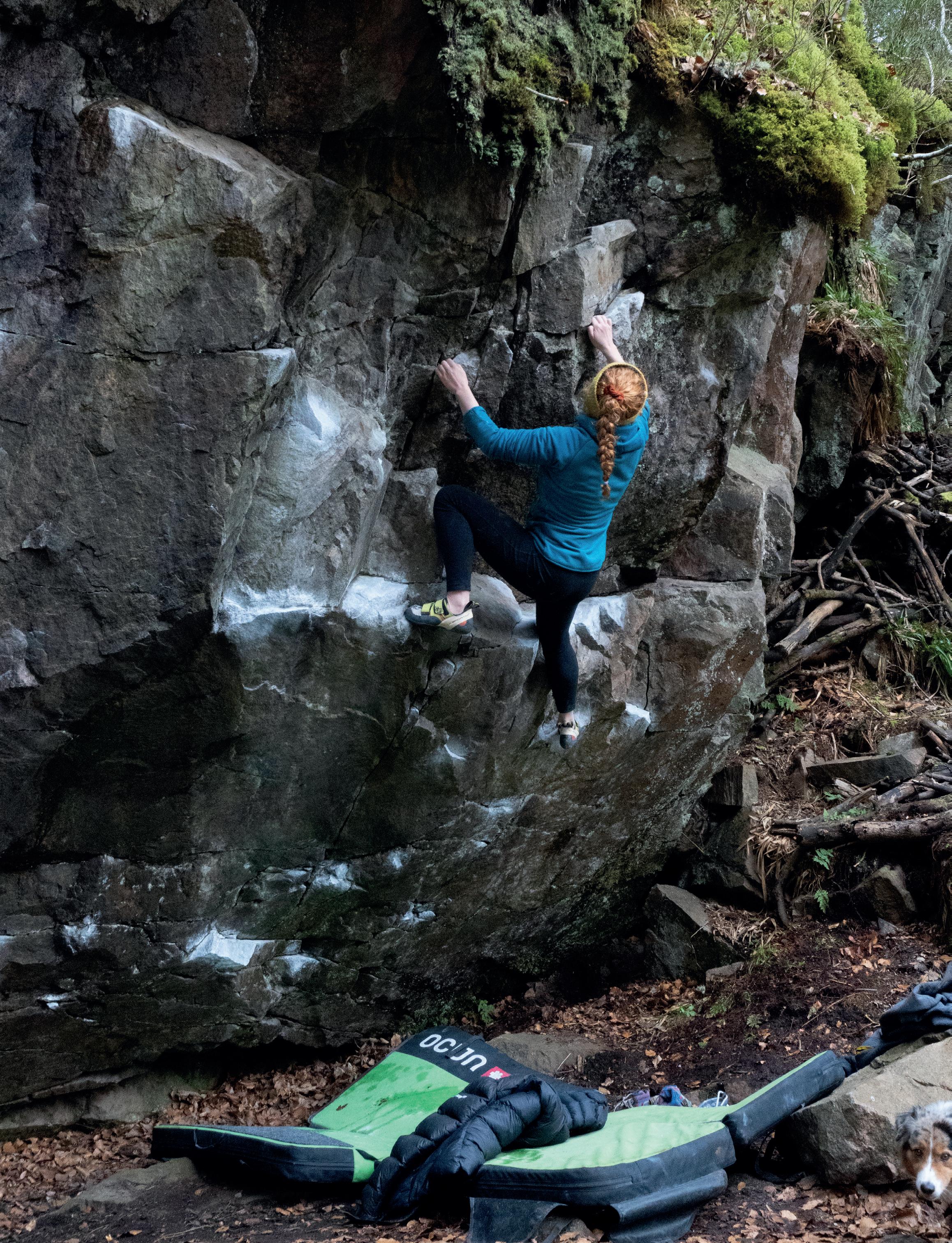

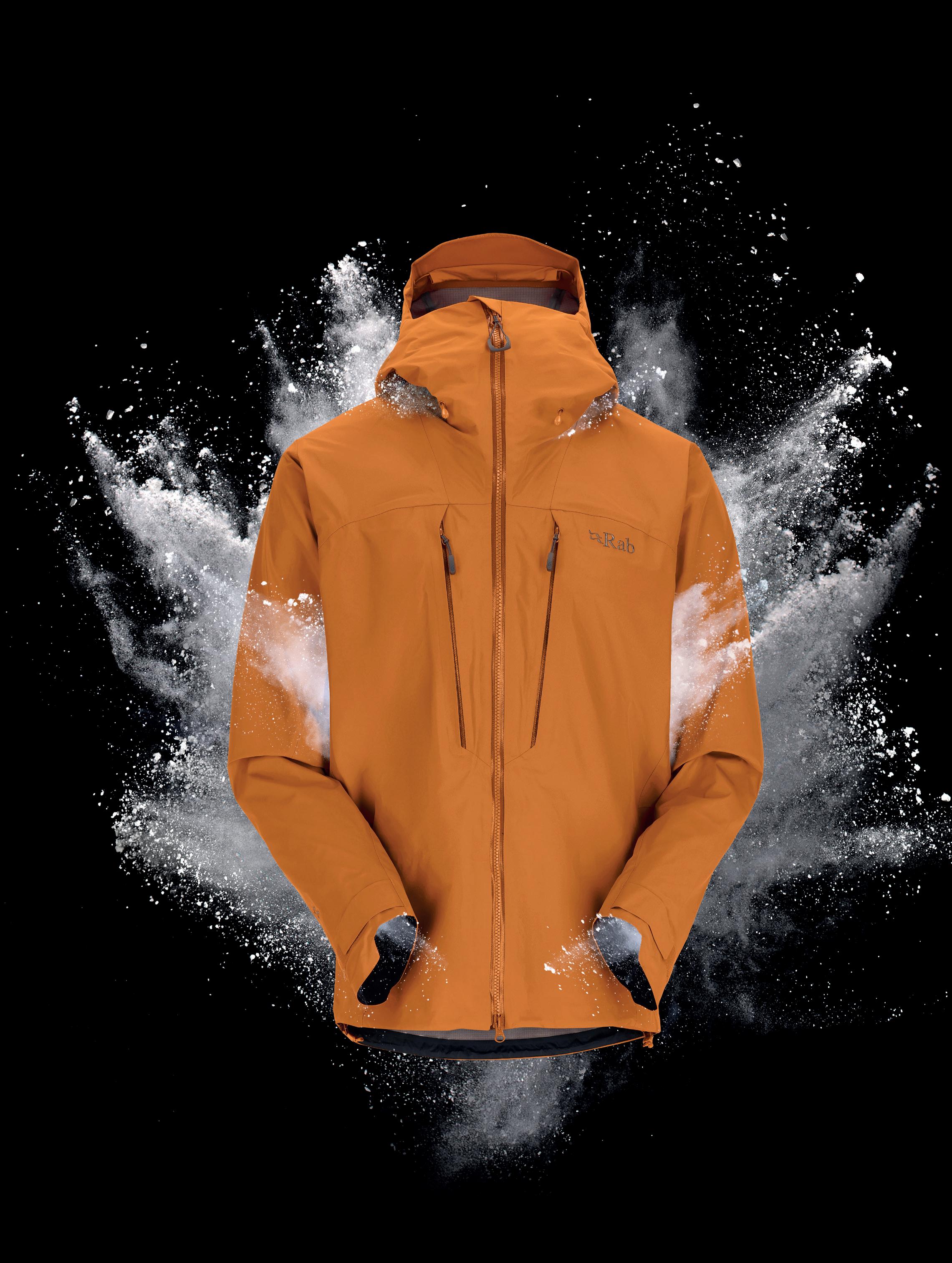

RAB MEN’S LATOK
ALPINE GORE-TEX PRO
PRICE: £500
The Tech Talk section of this issue will fill you in on the level of R&D that has gone into this much-admired alpine jacket this season. Built tough with GORE-TEX Pro, expect no-lift gusseted underarms, generous pockets with glove compatible zip pulls, and a helmet compatible hood with a high collar and wired peak.


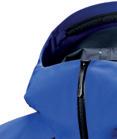

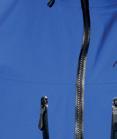

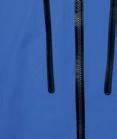
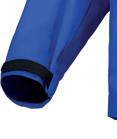
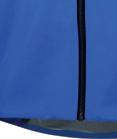








PRICE: £800
One of Arc’teryx’ most high-spec offerings, the Alpha SV is a pinnacle mountaineering jacket. It pairs GORE-TEX Pro with a 100-denier face fabric for complete protection against alpine conditions. Helmet and harness compatible, highlights include WaterTight external zips and an embedded RECCO reflector.

PRICE: £400
Patagonia have the warmth-to-weight ratio completely dialled with this belay-style insulated jacket. It’s light, it’s packable, but it’s also super lofty and warm thanks to the generous amount of 800-fill down, which meets the stringent requirements of the Responsible Down Standard.

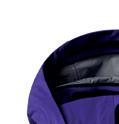








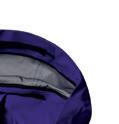

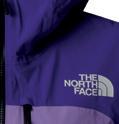







PRICE: £520
This alpine climbing jacket features The North Face’s FUTURELIGHT fabric, a threelayer waterproof and highly breathable material body-mapped in various thicknesses to bring targeted durability in areas that are most at risk of abrasion, and stretchiness where articulation is required.

PRICE: £420
There’s a lot to admire about this down jacket from alpine equipment specialists, Rab, but it’s the TILT technology that particularly stands out. Located within the baffles of the jacket, it radiates the wearer’s body heat back to them, adding extra thermal efficiency without excess weight.

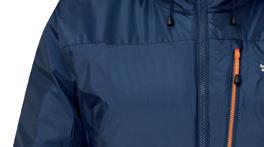

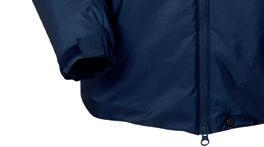
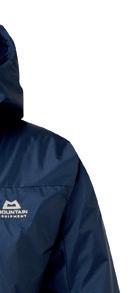

PRICE: £360
Warm-when-wet is the name of the game here. This classic belay jacket from UK-based Mountain Equipment boasts the latest PrimaLoft technology which involves insulating synthetic fibres that are embedded with superlight Aerogel particles (composed of 95% air) and coated in silicone for added water resistance.
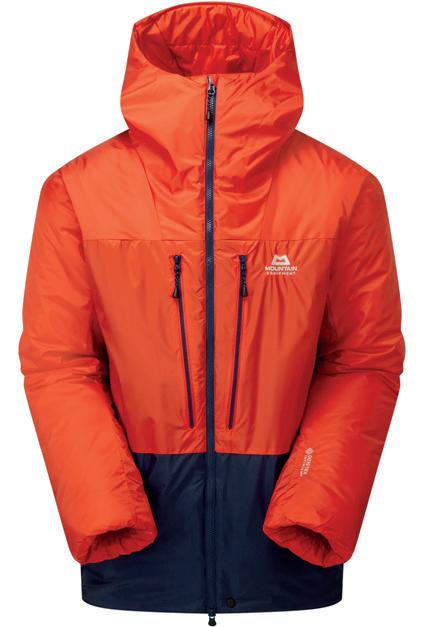
PRICE: £425
This men’s jacket uses the same PrimaLoft technology as the women’s Alpamayo. Another garment that’s specially designed for harsh, highly variable winter conditions, it comes with a Mountain Insulated fit that makes it suitable to wear over a number of layers, including a waterproof shell.




How a blink-of-an eye accident set one Ellis Brigham staff member on a journey to becoming a search and rescue volunteer.

Ever wondered what it takes to be a search and rescue volunteer? Let Charlie Gay, Partnerships and Events Coordinator at Ellis Brigham, fill you in.
Can you tell us about how this all started for you?
My role as a search technician for Severn Area Rescue Association (SARA) began around September 2022. I had heard through a family member already in the team that applications were open – though my interest in being involved had started several years before this.
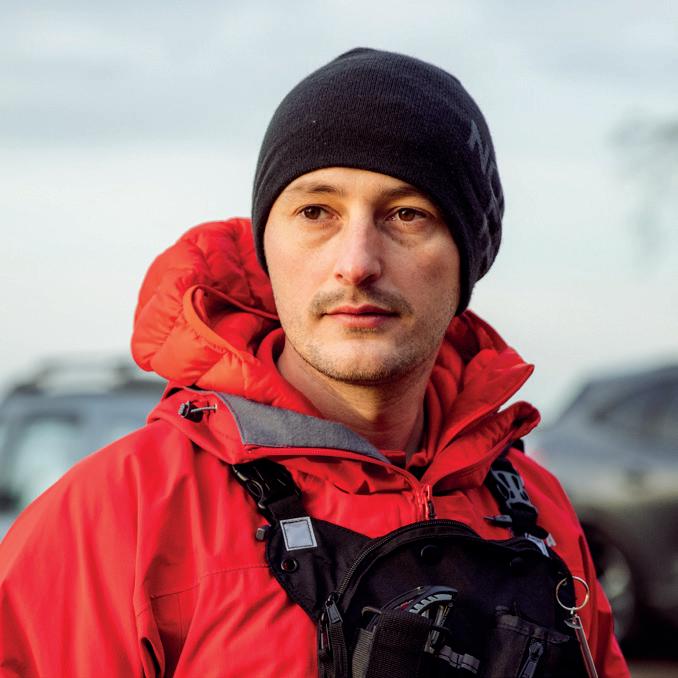
In 2015, I was climbing at a remote crag on the Isle of Raasay with three friends. My friend had already started climbing while my belay partner and I were tying into the rope. Just before I started, I looked over to my left, and as my friend was putting in his first bit of protection, his foot slipped, and he fell from around 5 metres directly onto his back.
It was clear that we needed more support to help him out. I remember seeing the helicopter overhead and the winchman descending to help us. The feeling that gave me – that someone else was there who could assess the situation and create a plan – was calming and inspiring. It’s safe to say that from that moment, I knew that I would like to help people like the winchman helped us.
The training itself took around a year. We trained most Thursday nights and a good number of Sundays as well. There was a mixture of lecture-based lessons, first aid training and search techniques. While I do a wide range of outdoor activities, the skills we were taught through training are rather specialist. For the majority of a live search, it’s the searching skills that are used; looking for clues that will help locate the missing person.
What are the general demands of the role? How does it fit in with your normal life and career?
The demands of the role are quite varied. There’s the training, fundraising, and then the searching itself. Even though I am active, the training does not stop. I recently completed a rope rescue course and can now assist in searches where ropes need deploying due to the technical terrain.
The demands of searching can be complex, both physically and mentally. Once we have a search area, we could be out for four hours at a time before returning to base. Four hours between rests doesn’t sound too challenging, but the mental strain when looking for a missing person can be very taxing.
We can get called out to search for a variety of reasons, although a high number of them are related to mental health. While not always, there is a fair chance that we are searching to recover a body, which can be a complex operation. SARA have a robust support network to help search teams deal with this.
SARA is a charity funded by public donations and successful grant applications. Part of our role is to commit time to
fundraising so that operations can continue. One event we host is the Cirencester Slog trail run. This year, there are two routes available, a 10-mile course and a 5-mile course that’s ideal for families – we’re hoping around 300 runners will join in.
How have Ellis Brigham supported you in this role?
Ellis Brigham have supported me greatly. SARA is not a 9-5 role; callouts can occur at any time and there hasn’t ever been a question as to if attending is possible. I am incredibly thankful that I can drop what I am doing and support SARA, and the families of those missing in finding their loved ones. When there have been searches late at night, starting work a little later the next day hasn’t been an issue either. They have supported our Ciren Slog event with prizes too. Work also helped me complete my Mountain Leader qualification at Glenmore Lodge – it was great to finally have the time to do the assessment.
What walks of life do the other volunteers you work with come from? What would you say links them all together?
Something that links all the SARA team members is kindness and their desire to help other people. We have members from all backgrounds, from lawyers to ecologists, doctors to event managers.
Can you share a story where you felt particularly proud of your team’s efforts?
While not every search may result in finding the missing person, it’s hard not to feel proud of the team every time we are called out. We are a close, supportive team. That in itself inspires confidence, I know we will be able to deal with the situation we are presented with. It helps that my girlfriend is also on the team, so we can process emotions together after the event.
What would you say to someone who was considering volunteering for a search and rescue team?
I’d say simply reach out and see what we are about. It certainly isn’t for everyone, given the challenges it comes with, but I think giving back to your community is important. When families have people who are missing, being able to support them just makes sense to me.
How do you see the field of search and rescue evolving in the future, particularly in the UK?
With advancements in technology, such as drones with high-powered cameras and even the new mountain rescue
jetpacks that are in development, I can only imagine how the equipment will improve in years to come.
I think the biggest impact on search and rescue will come from educating the public, particularly educating people on how to spot the signs of friends struggling with mental health. A lot of the mental health messaging currently out there relies on the person who is struggling reaching out for help, but it can be difficult to raise your hand and say, ‘I am struggling,’ especially if it feels like that doesn’t change anything. Learning to ‘sit in the mud’ with someone else, learning how to support them, can be a pivotal moment in that person’s life.

To watch Community, a film following Charlie on a day out with SARA, scan the QR code

“When families have people missing, being able to support them just makes sense to me.”
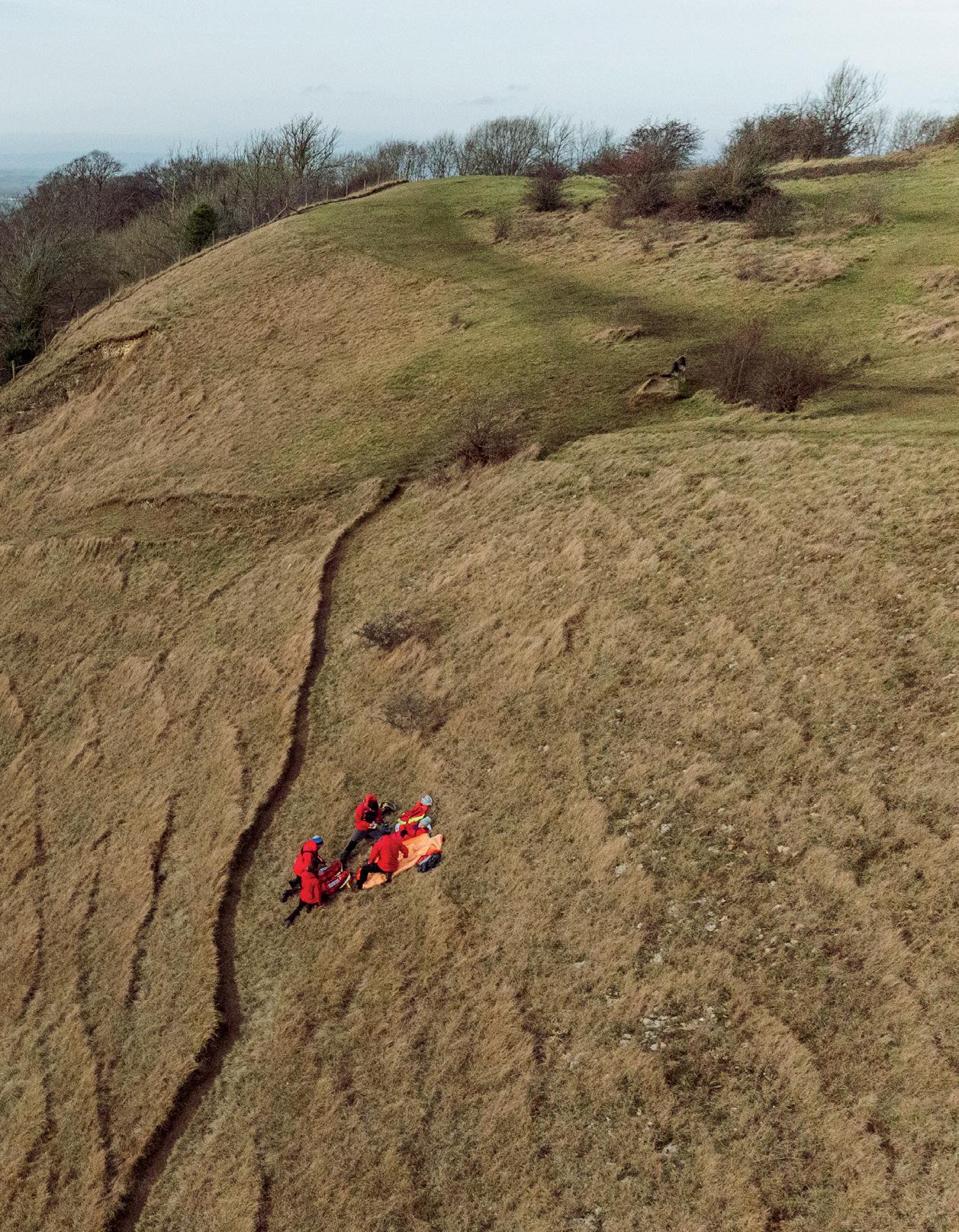
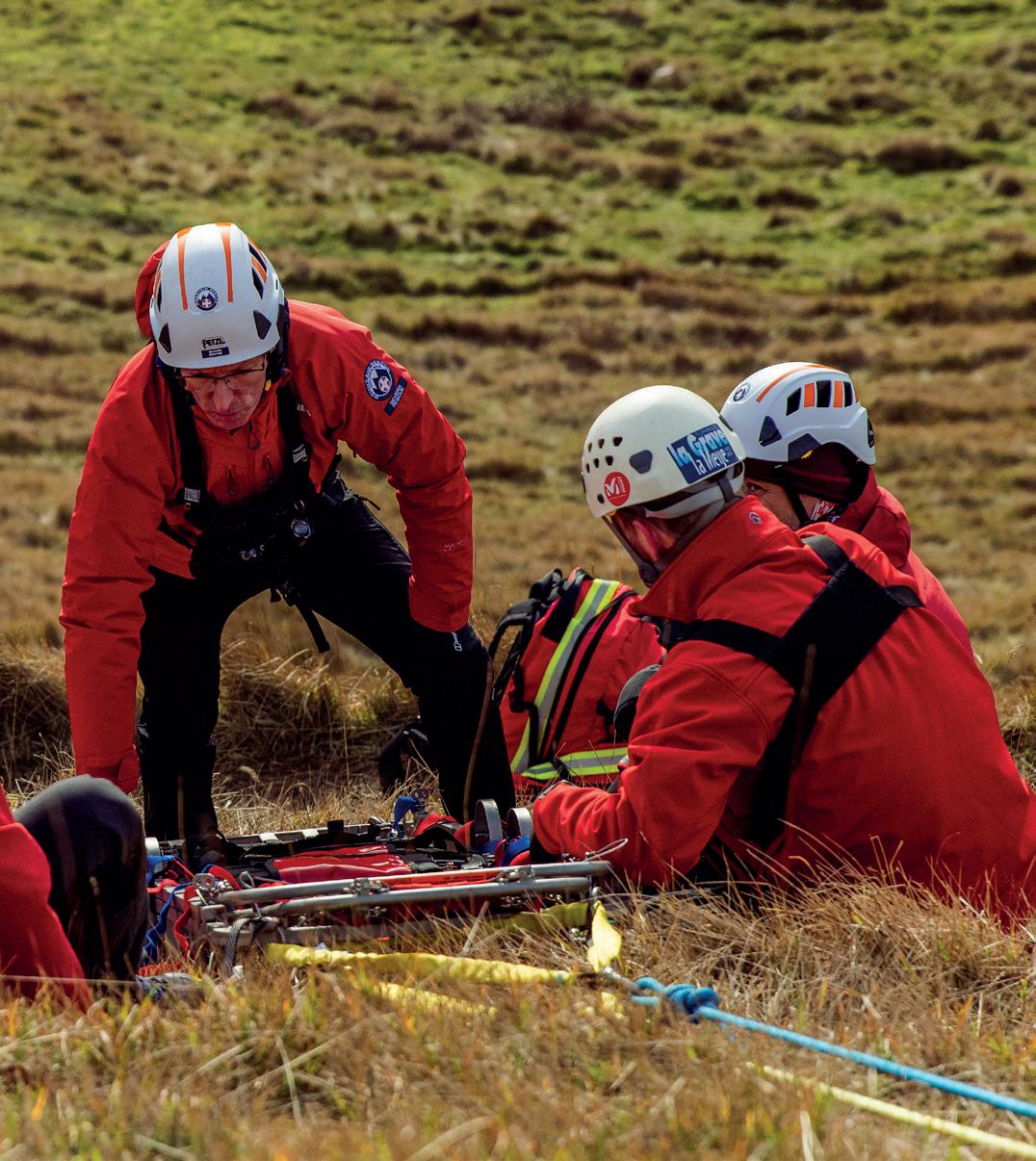

SARA has carried out emergency land search, rope rescue, flood support and casualty care along the River Severn and its surrounding areas for the last 50 years. The independent organisation, which relies on fundraising and donations, attends in excess of 100 callouts each year. Head to sara-rescue.co.uk for more info.

Striking that balance you only dared dream of: All the comfort and cushioning of Energy Foam backed up by the dynamic support of the Active Chassis. Send it, with confidence.
The weaved Matryx ® upper is scree and trail carnage-resistant, long-term durable and breathable.
All-Terrain Contagrip ® compound, a unique, two-part lug pattern and the raised tread offer an adaptable, secure grip even in sketchy situations and changing terrain.


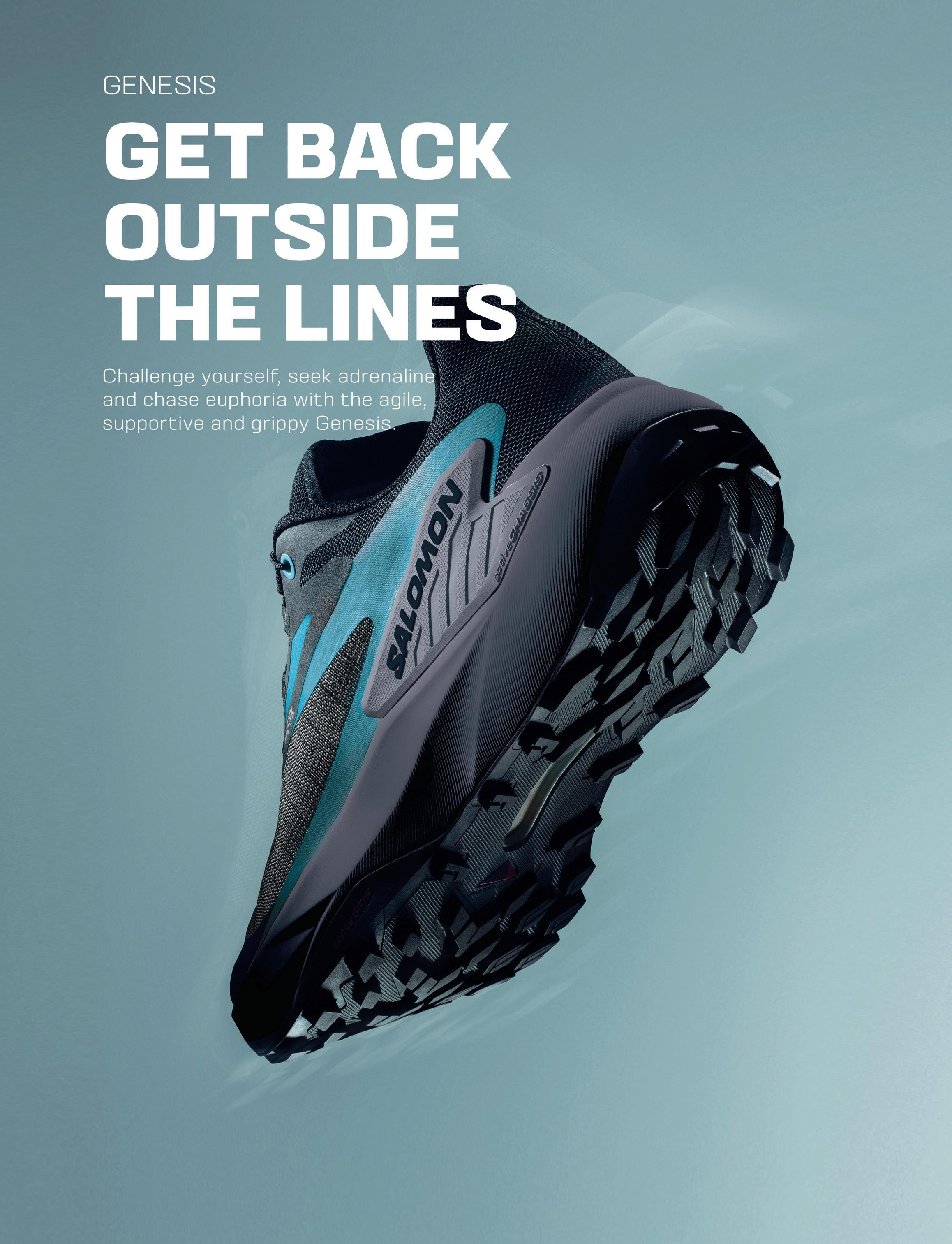






As espresso coffees, bird’s eye chillies and Lionel ‘the Little Magician’ Messi demonstrate, the smaller things in life can often pack more of a punch than you’d expect, and this can certainly be applied to many of the UK’s hills and mountains.
You only need to look at the numbers that visit Yr Wyddfa (Snowdon), Scafell Pike and Ben Nevis each year to know that the natural inclination for many of us human beings is to seek the maximum. But you don’t always have to aim for high altitude to find a good vista or some airy exposure.
Starting as low as 290 metres and reaching no higher than 461 metres, we’ve picked out our favourite hills that offer big views to rival mountains many times their height. And we haven’t just selected them based on the views they
provide but also on their overall enjoyment factor and the sense of adventure they ignite. This makes them perfect for the harsh winter months – with the right clothing and equipment, of course – the walks in this list should be manageable for most hikers and they can be enjoyed yearround when some of the loftier summits might feel out of bounds. Come the warmer months, some of them make for great family-friendly adventures too.
Small but mighty, here are eight of our favourite pocket rockets.
Carningli Mountain – which is in fact only just a 346-metre hill – has had a long and varied life. Situated on the northern coast of Pembrokeshire, it started out as an underwater volcano, served as a gigantic hillfort during the Iron Age, a retreat for saints seeking to commune with the angels, a quarry and more recently it’s been a popular place to catch a spectacular sunset.
With the scree slopes, boulder fields and jagged slabs that form Carningli’s summit, this little hill could be plonked a hundred miles north-east among the mountains of Eryri (Snowdonia) and it would fit right in. It can, however, be completed in as little as an hour from start to finish if you’re setting off from the car park at Ffordd Cilgwyn.
“The sunset here is unbeatable in my eyes,” says Will Renwick who used the mountain to train for a threeweek run that took in all 189 mountains in Wales. “On a clear winter evening you can see to the islands around St David’s and across the sweep of Cardigan Bay all the way to the mountains of Eryri. If you’re lucky, you might even see the Wicklow Mountains in Ireland”.

“CASTLE CRAG IS TINY IN STATURE BUT GIGANTIC IN CHARM... IT’S THE IDEAL MOUNTAIN FOR A QUICK YET DELIGHTFUL OUTING”
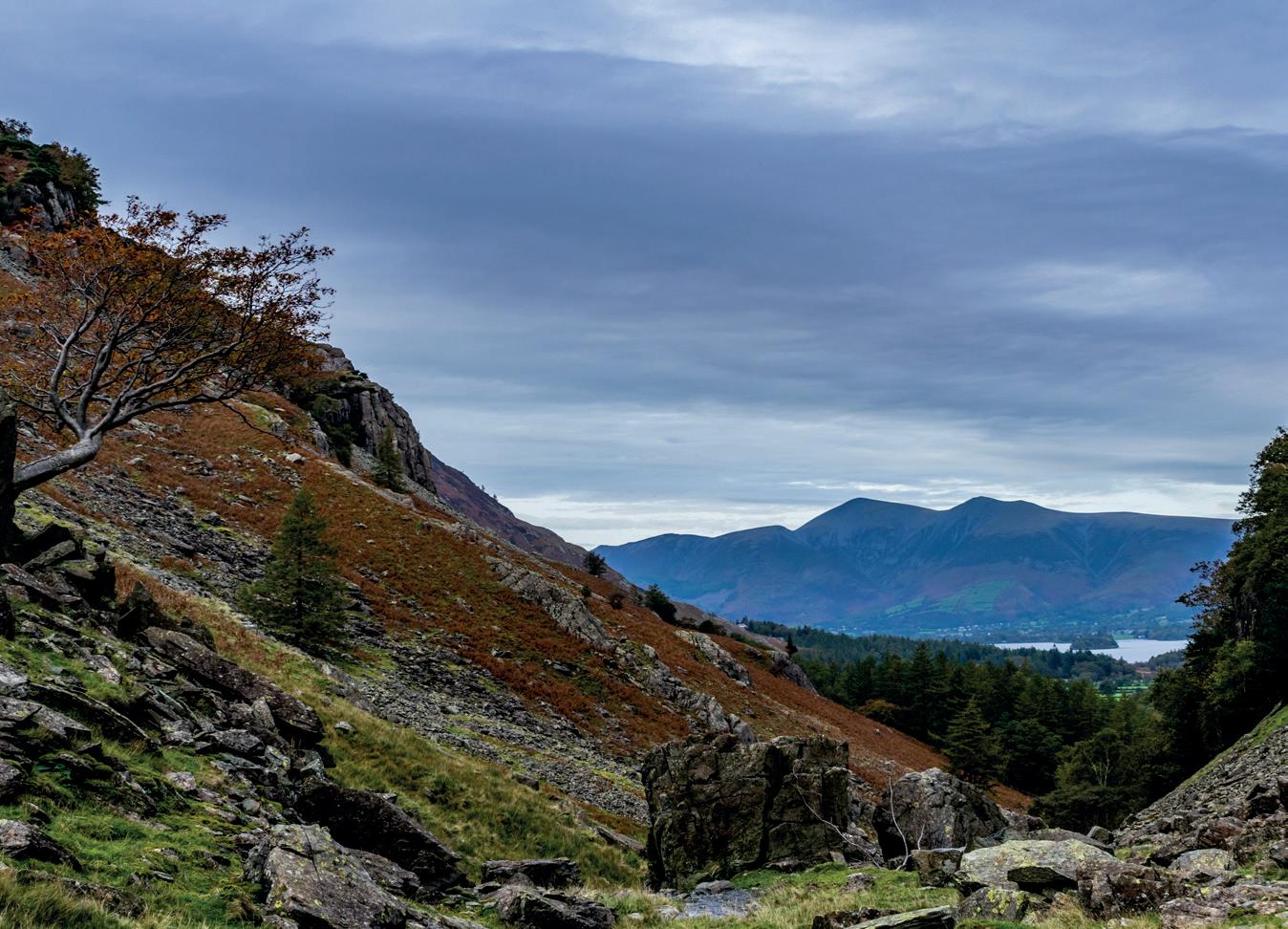
Guidebook author Alfred Wainwright wrote “if a visitor to Lakeland has only two or three hours to spare yet desperately wants to reach a summit and take back an enduring memory of the beauty and atmosphere of the Lake District, let him climb Castle Crag”. The 290-metre fell in fact holds the distinction of being the smallest hill included in the writer’s influential Pictorial Guide to the Lakeland Fells, the only ‘Wainwright’ out of a 214-strong list to be below 1,000 feet. Much larger hills didn’t make the cut, but to the famous rambler it had an aesthetic and charm that made it more than qualified.
“Castle Crag is tiny in stature but gigantic in charm,” says James Forrest, an outdoor writer best known for climbing all 1,001 mountains across the UK and Ireland. “It’s the ideal mountain for a quick yet delightful outing.” Located within the Borrowdale Valley, the sides of Castle Crag are flanked by ancient woodland and the final approach to its top involves an enjoyable zigzag up and over the remains of an old slate tip. After catching the sweeping views over Derwentwater and the fells that form the ‘Jaws of Borrowdale’, it’s then worth factoring in a visit to Millican Dalton’s cave during your descent. This was the summer home of the self-styled ‘Professor of Adventure’, an eccentric who lived in the twin-entranced cavern in the early 20th century.

You would think that someone who had climbed all 14 of the world’s 8000-metre mountains would view something as small as the 320-metre Roseberry Topping as fairly insignificant. But, for Alan Hinkes, one of Britain’s most successful mountaineers, that’s far from the case. “It’s what I’d call a value for money peak,” says Alan. “The 360-degree panorama from the summit is superlative for the small amount of effort needed to top out on this fine mini mountain.”
Conical in shape, the result of a combination of a geological fault and a mining collapse in 1912, it can take as little as half an hour to ascend this sandstone cap which is an outlier of the North York Moors. The wellmaintained path makes it doable for all ages in winter and from the top you’ll see the moors stretching eastwards, the North Sea beyond, the Cleveland escarpment, Yorkshire Dales and North Pennines.
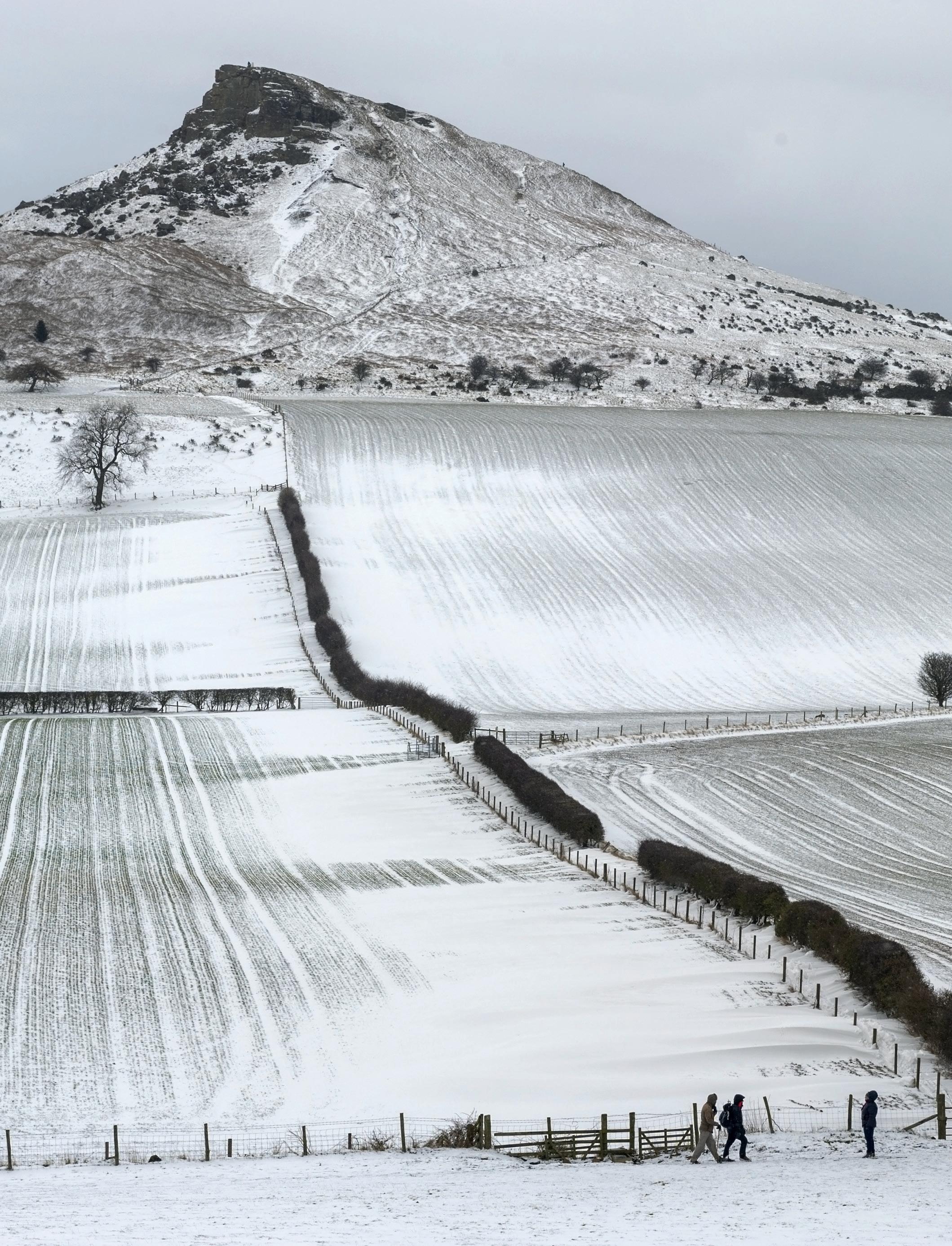


The route that links up Chrome Hill (425m) and the smaller Parkhouse Hill (360m) on the Staffordshire/ Derbyshire border is often referred to as the Dragon’s Back, and for good reason. Out of the rolling surrounding countryside two vertiginous peaks rise up sharply like the bristly spine of a giant, semi-subterranean monster. Both are in fact formed from millennia-old fossils – coral reef to be specific – giving them a craggy complexion that contrasts heavily with the gentle pastures of the surrounding higher Dove Valley.
The rare phenomenon of a double sunset can also be witnessed here. That’s when the sun dips behind one side of Parkhouse Hill before re-emerging moments later on its steep northern slope before setting for a final time at the foot of the hill.
“This is my favourite scene in the world” says globetrotting landscape photographer Tom Watkinson. “I’ve visited close to a hundred times over the years, and, despite their size, they really hold their own in terms of picturesque landscapes in the international arena.”

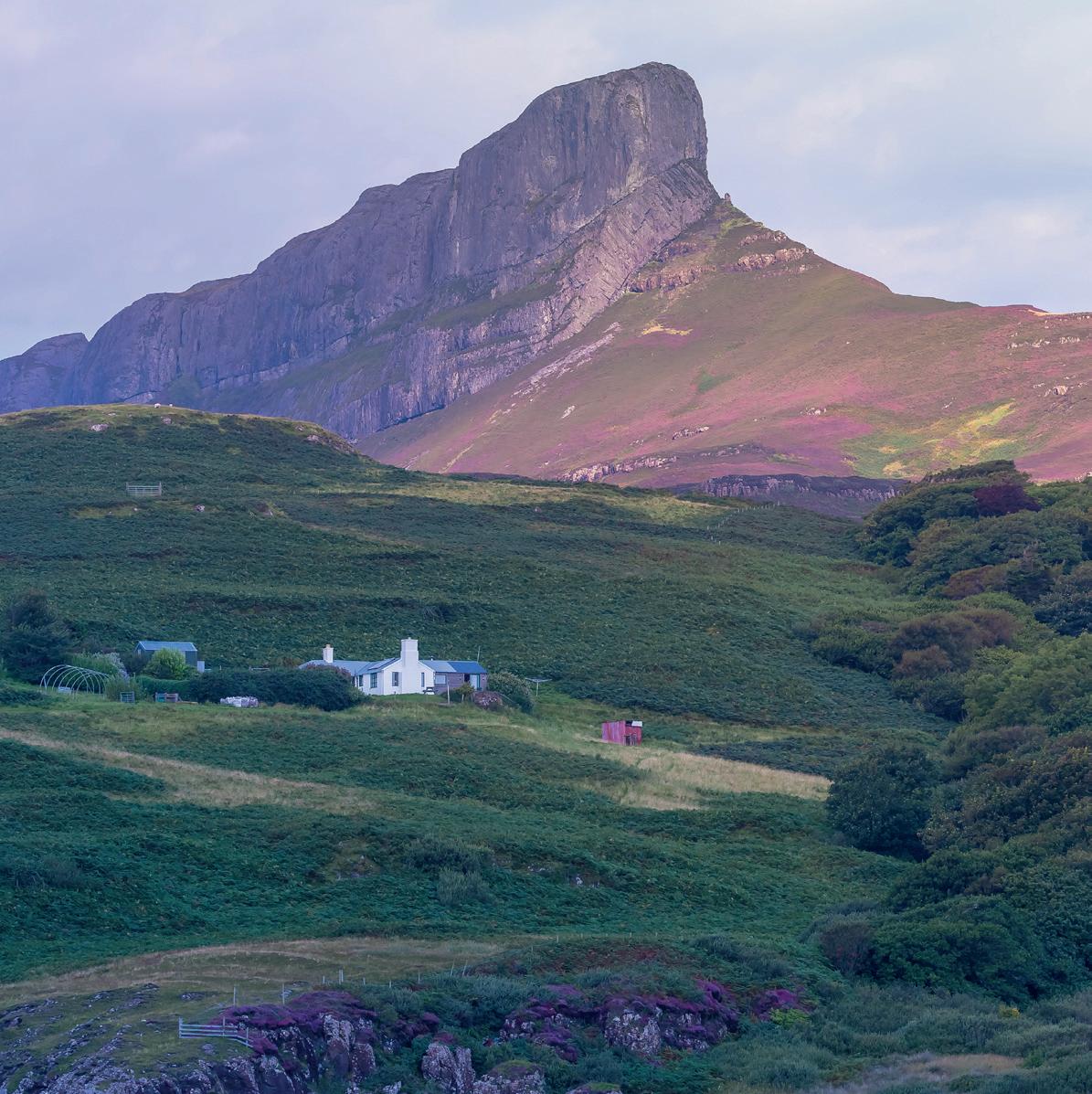
Another promontory formed from volcanic activity, this striking 393-metre peak forms the highest point on the Inner Hebridean island of Eigg and is an inescapable sight from anywhere within the island’s shores. Despite its formidable appearance, particularly when viewed from the south-east (where the island’s port is located), most people with a reasonable level of fitness and hiking experience should be able to walk the short but steep route to its top, though it does involve some light scrambling and, in winter conditions, some crampons.
“It’s small but prominent with a nice horn-shaped crag,” says Harry Burgess, a musician from the band Adult Jazz, who visited the island for the biennial Howlin’ Fling Festival. “We went up and down in an hour or so to clear our heads before we played. It packs a punch beyond its height because of its location and glorious view of the peaks of Rùm to the north.”
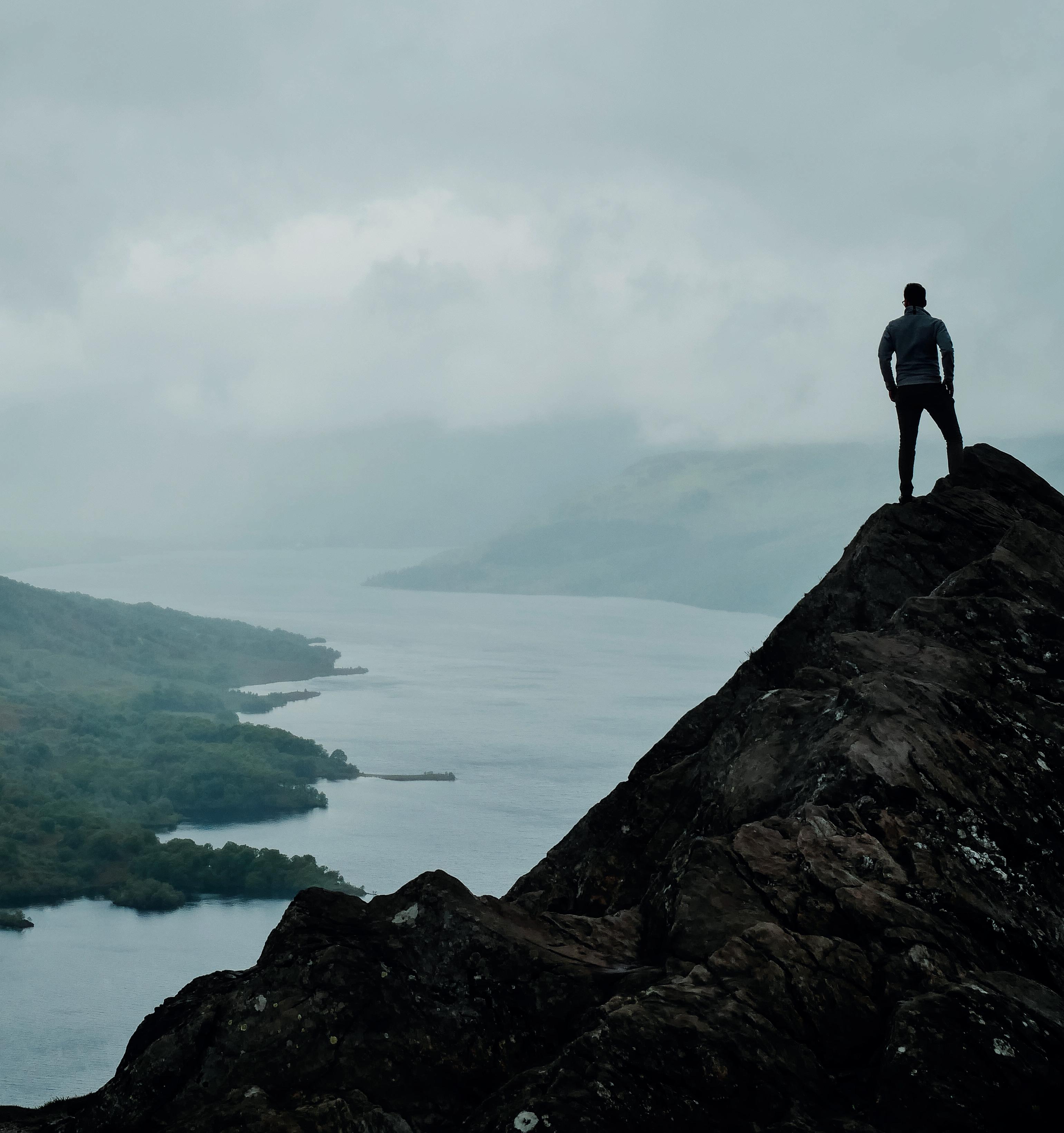
The fact that the view from this summit gets regularly used by the Scottish tourist board should be testament enough to the virtues of this tiny titan of the Trossachs.
Located alongside Loch Katrine – just an hour’s drive from Glasgow – this 454-metre hill has a witch’s hat aesthetic when viewed from the valley below it. Once you’ve reached its pinched-at-the-top peak you’re then presented with a view over the 13-kilometre sweep of the loch and beyond to much larger Highland giants.
“It’s a short, steep hike packed full of beauty,” says Liv Bolton, who hosts The Outdoors Fix podcast. “Walk amongst Scots pine trees, listen to cuckoos and marvel at the two lochs from the peak, all in just a two-hour round-trip from the Ben A’an car park.”
This characterful hill near Barmouth looks remarkably like a dorsal fin when viewed from the far side of the waters of Llynnau Cregennen. Its rocky slopes make for some easy and fun scrambling and it will take no time at all to reach its 383-metre summit to take in the views over to Cadair Idris and the Rhinogydd mountains. The area makes up a Site of Special Scientific Interest thanks to the unique geology found here and there are remains of an Iron Age hillfort to seek out as well.
“This was slightly off my route, but its enticing outline drew me in,” says Will Renwick, who made a detour to climb Pared y Cefn-hir during his end-to-end walk of the 298-mile Cambrian Way. “I was glad I took the time to enjoy it though. The walk up it is ever so slightly hands-on and the views over the huge expanse of the Mawddach Estuary are simply breathtaking, particularly when there’s a light dusting of snow.”
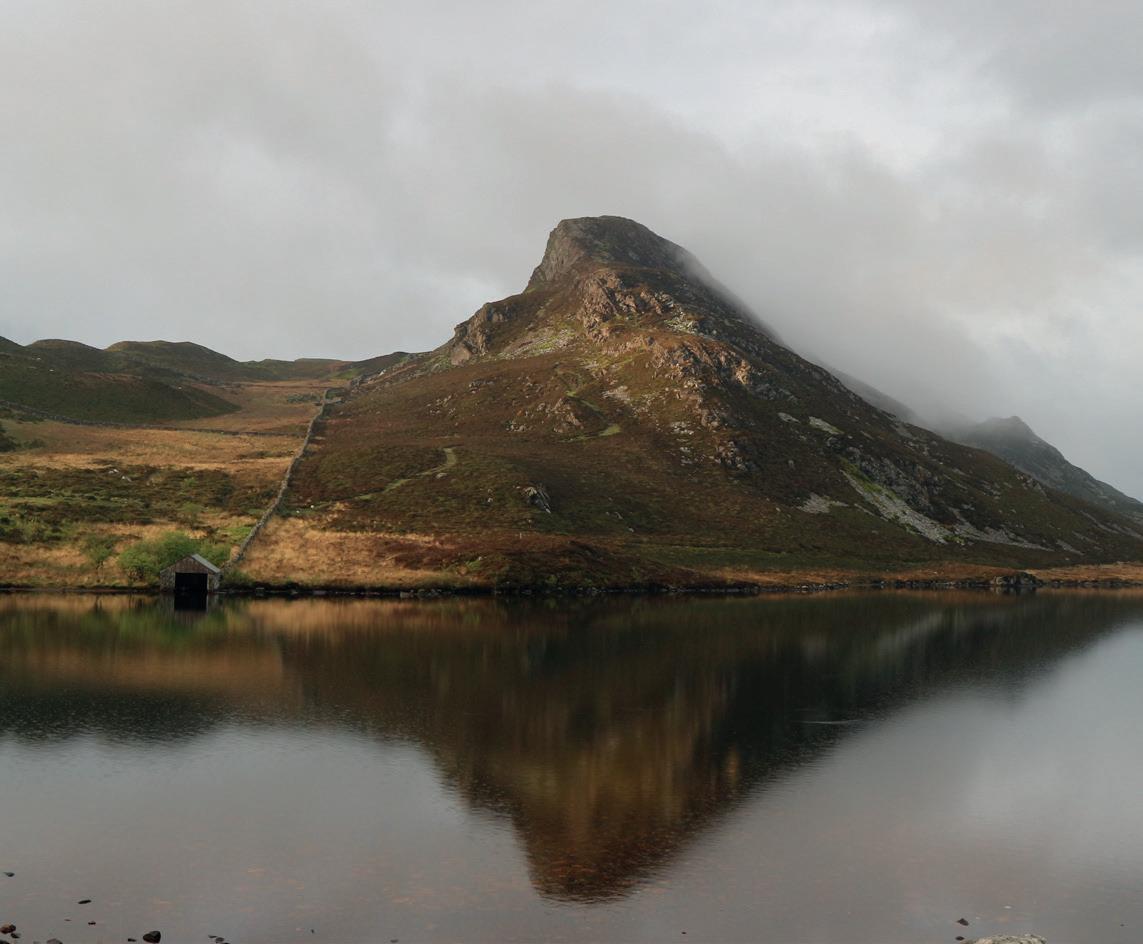
“THIS ICONIC HILL IS FAMED AS THE SITE WHERE SAINT PATRICK IS SAID TO HAVE TENDED SHEEP”
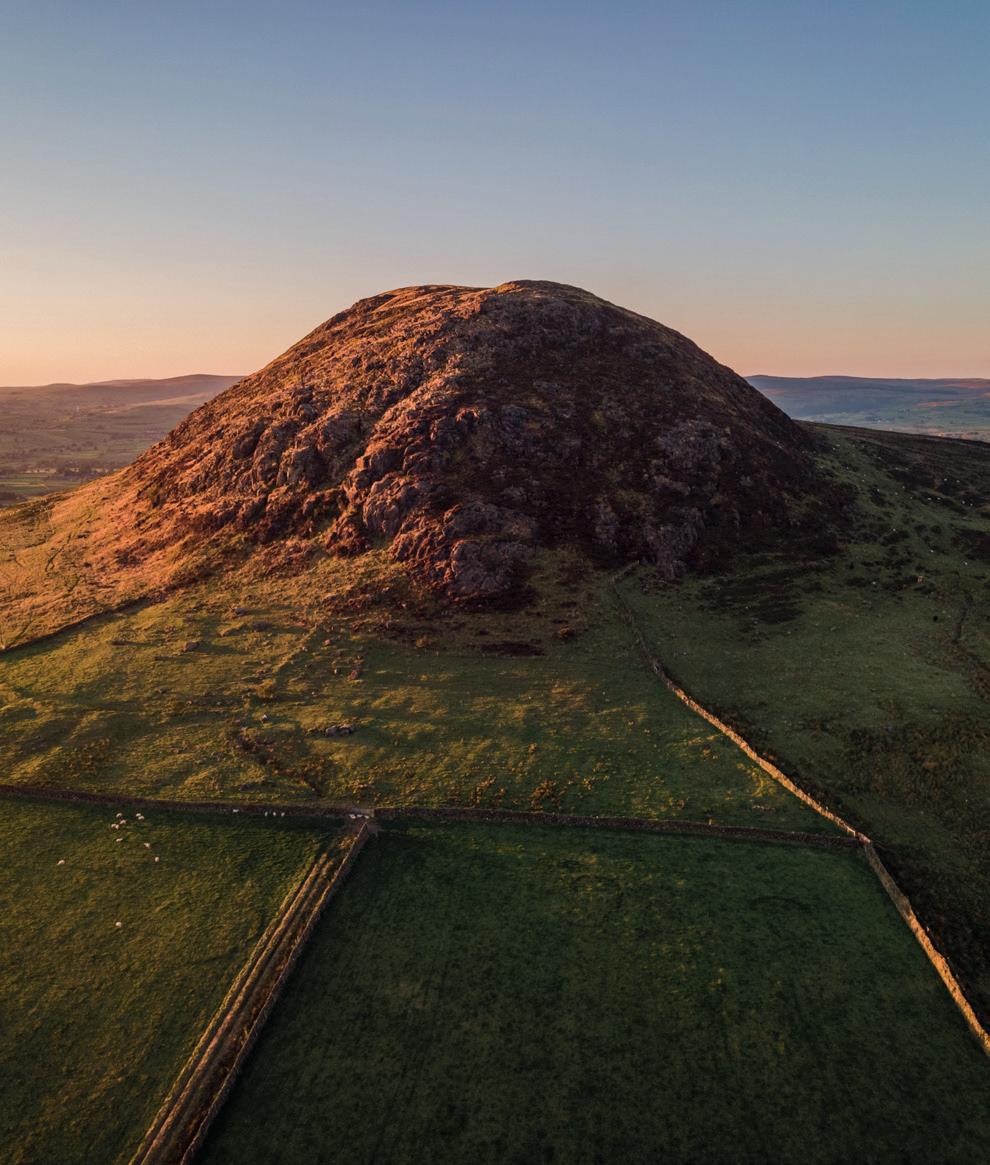
Though only a modest 437-metres, this distinctive hill really does have the look and feel of a proper mountain. Located in County Antrim, Northern Ireland, it stands as the remnant of an ancient volcanic plug with its rugged and dark silhouette rising distinctly from the surrounding flat farmland and bog country. It makes for an excellent port of call for anyone heading up from Belfast to visit the Giant’s Causeway UNESCO World Heritage Site and the north coast of Antrim.
This iconic hill is famed as the site where Saint Patrick, Ireland’s patron saint, is said to have tended sheep as a young slave and to this day, many pilgrims flock to its summit on the 17th of March each year. The main path to the top makes for an engaging, steep and zig-zagging ascent that’s lung-busting but still accessible for most walkers.
“It’s part of the under-appreciated Antrim Hills Way, which is one of the only public paths that crosses the beautiful Glens of Antrim,” says Jasper Jolly, who grew up at the foot of Slemish. “At the top you’ll get great 360-degree views stretching to Scotland and the Mourne Mountains, all in less than half an hour of walking.”

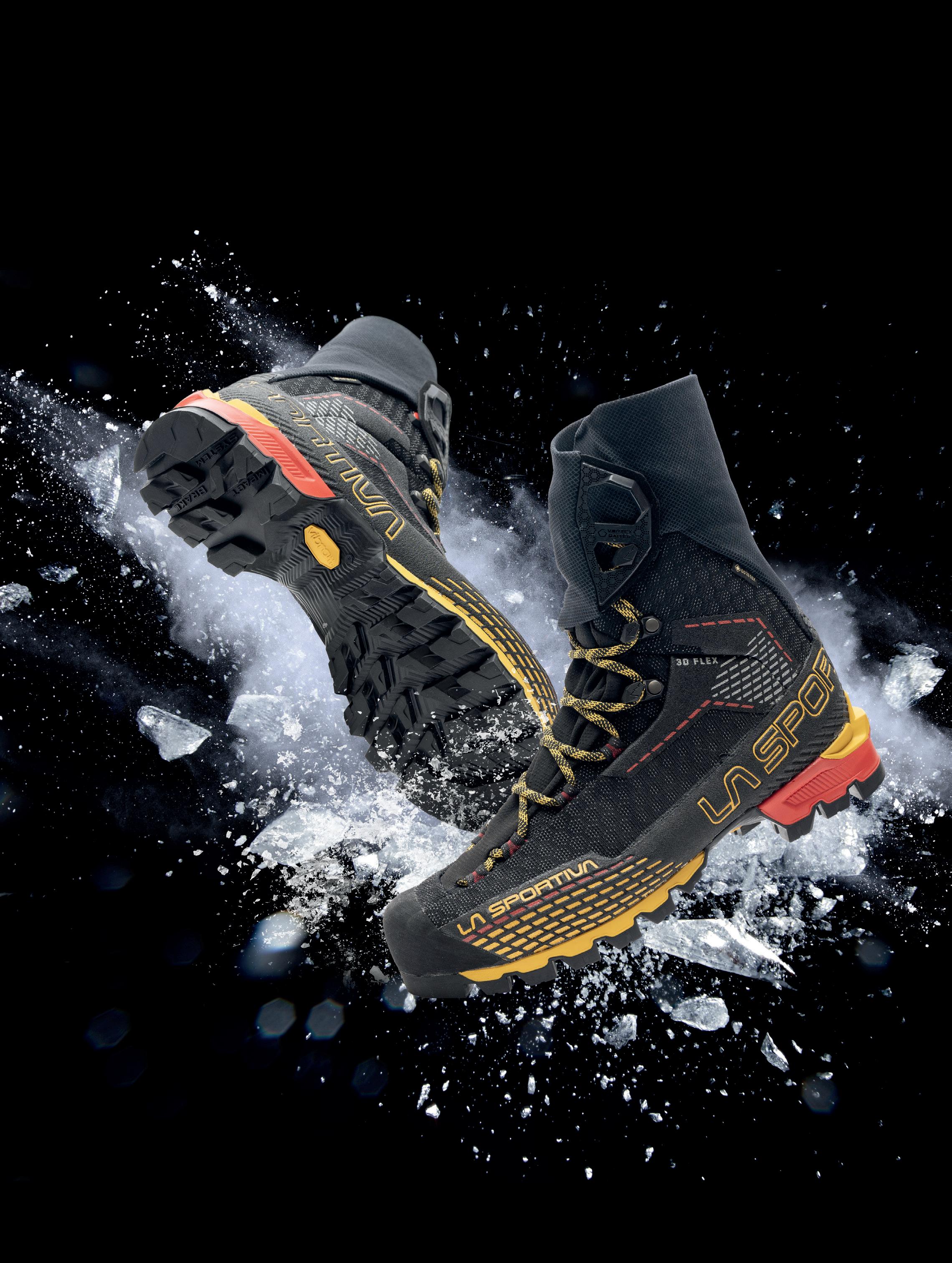
LA SPORTIVA TRANGO
PRO GORE-TEX
PRICE: £400 RATING: B2
This is the latest model in La Sportiva’s popular Trango family, designed for technical mountaineering. The abrasion-resistant upper benefits from a Vortex gaiter, which protects the laces and stops snow and debris from entering the boot. The Vibram Cube Evo sole can take a C2 crampon, but still has enough flex and cushioning to aid walkability.
PRICE: £325 RATING: B2
While this might be compatible with C1 and C2 crampons, it’s also a boot that’s designed for walkability, offering a smooth roll that supports the natural movement of your foot. A high-tenacity nylon upper guarantees long term durability and a pronounced heel brake and deep lugs make it exceedingly grippy.





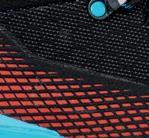
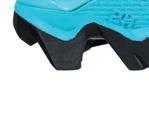





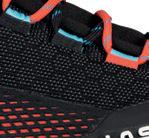
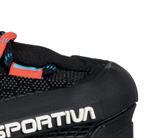

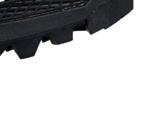

MEN’S SL ACTIV
PRICE: £300 RATING: B1
The SL Active is an all-season classic. Unusual in its lack of waterproof membrane, instead a 2.8mm full grain leather upper offers durability and waterresistance without having to compromise breathability. Suitable for winter walking, the B1-rated sole brings plenty of bite and shock absorption.

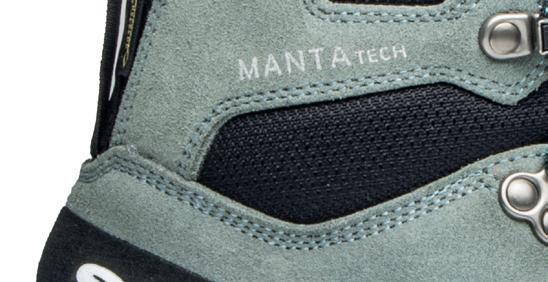
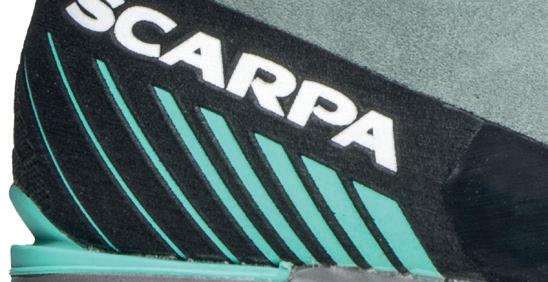




PRICE: £350 RATING: B2

This is a B2-rated women's mountaineering boot that’s made for four-season performance. Its 3mm Perwanger suede gives it a classic aesthetic, while the Vibram Mont rubber and multi-density PU midsole provide a comfortable and reliable feel underfoot.


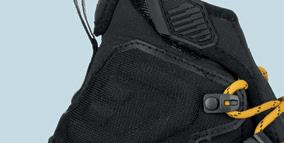


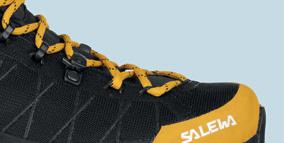
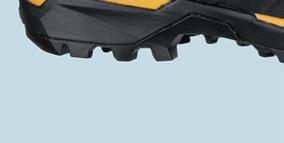

PRICE: £275 RATING: B2
With its Kevlar cables, a mini elastic gaiter, PowerTex waterproof membrane and performance foam midsole, this nimble boot possesses all the right traits for fastmoving technical mountaineering. It also comes with the Salewa Committed icon, a mark to show it meets the brand’s strict sustainability criteria.

SCARPA MEN’S MESCALITO TRK PRO GORE-TEX
PRICE: £285 RATING: B1
With its durable upper, supportive ankle and comprehensive protection, this is a B1 crampon-friendly boot that’s perfect for demanding treks through all seasons. It features a suede nubuck leather upper, a fully abrasion-resistant rand, and dual density foam underfoot to give comfort and protection in all the right places.
Crampons are metal devices that fit to the soles of mountaineering and four-season hiking boots. Their toothed design provides traction on ice and hard-packed snow. Crampons need to be compatible with the right boots in order to work correctly. The wrong pair can result in catastrophe in a dangerous environment. Even stiff boots can flex, so the crampon must be able to flex and twist to stay on the boot.
A crampon's points are the spiked teeth that bite into the snow and ice. They are situated at the contact areas beneath the forefoot and heel. Usually made from steel or stainless steel due to its strength, some lightweight styles are made from aluminium for less aggressive use like ski touring.
The number of points affects the variety of positions in which a crampon can find traction. Crampons with 10 points will be appropriate for gentle gradients. Those designed for more technical mountaineering will have 12 points, while ice climbing models will often have 14. Almost all feature four points beneath the heel and the rest beneath the forefoot.
Horizontal points look and act like a shark's front teeth. They provide excellent grip on snow and softer ice. This makes them a great choice for winter walking and moderate ice routes. But they are not suited to technical ice climbing.
Vertical crampon points work like an ice axe. They drive straight into the ice and turf and give a secure hold on mixed routes and steep gradients. They are the right choice for those looking for technical ice climbing crampons.
Recent years have seen brands creating crampons with hybrid or 'T'-profiled points. This design offers the stability of horizontal points and the bite of vertical when routes become more demanding.
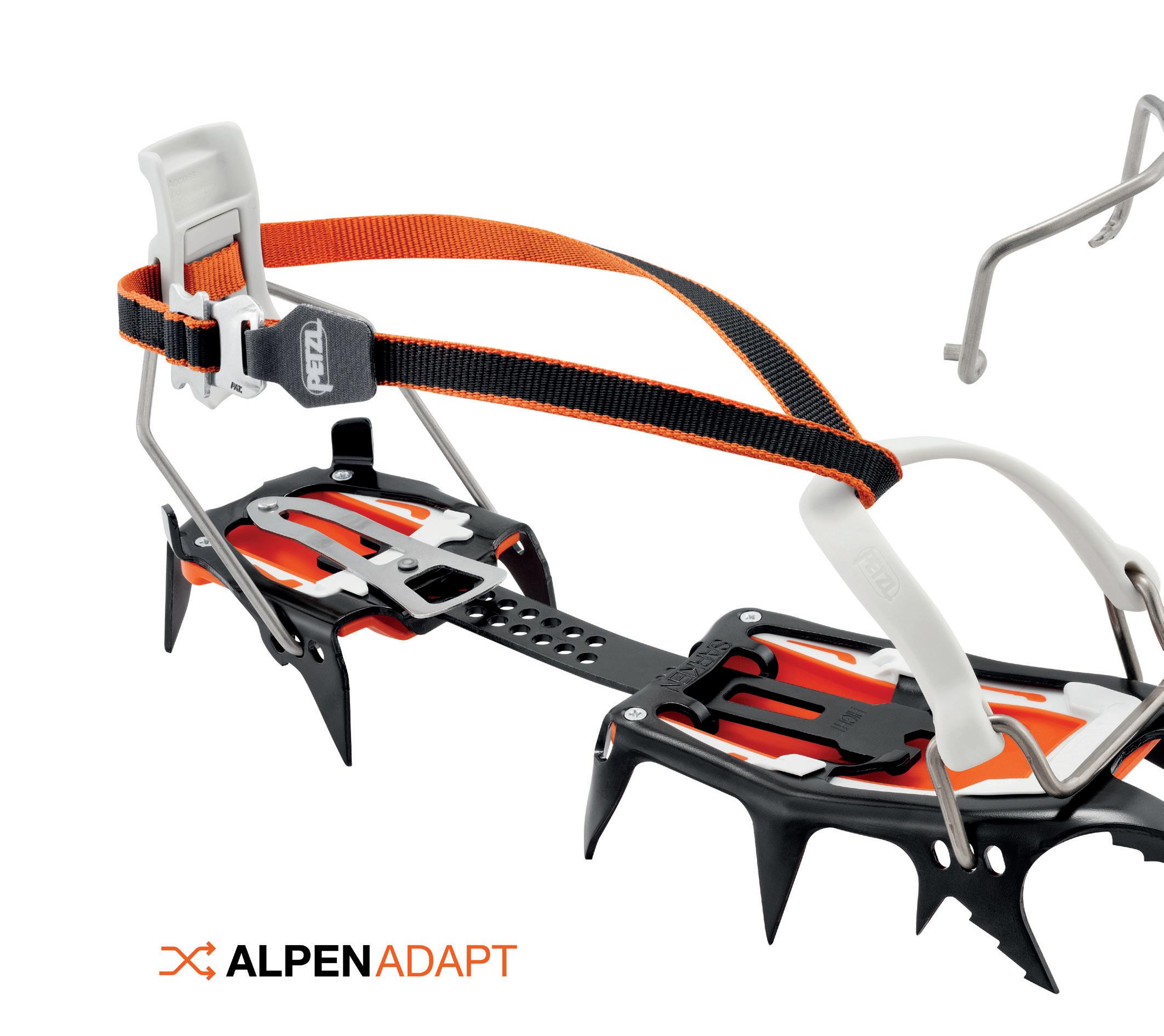

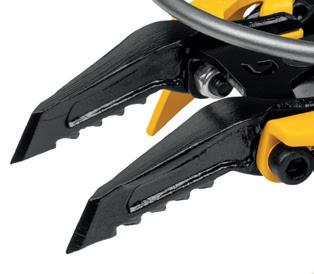

The linking bar is the piece of metal that joins the front and rear plates. This component and the way it attaches to the plates dictates the flex of the binding. Articulated crampons have more play for softer boots; C3 crampons will be almost rigid.
Anti-balling plates stop snow from collecting and compacting in the base of the crampon. Made from a rubbery, hard-wearing plastic compound, they clip into the base.

Crampon Anatomy Base
1 Points (teeth)
2 Linking bar
3 Anti-balling plates
Binding system
4 Front cage or bail
5 Heel clip
6 Tether (binding straps) 4 6

Monopoint crampons feature a central front point. This gives them the precision required by ice climbers and are the go-to for scaling mixed routes. A single point means you can pivot your foot without blowing your hold. This gives you more agility and the ability to jam into fluted ice and fissures with pinpoint accuracy.

Dual points are the most popular crampon for everything except technical ice climbing. They feature a pair of points at the front, giving optimal traction and stability.
Many high-level crampons feature a modular point system. This allows you to change between a dual and monopoint system easily with minimal tools. The adaptable design increases versatility, allowing climbers to tackle a broader range of routes.
Crampons fix to your boots using three different binding systems, which affect their C-rating. These are strap-on (C1), semiautomatic (C2), or automatic (C3).

C1 Crampons
• Suitable for: UK winter hill walking, glacier traverses
• Compatible with: B1, B2, & B3 boots
C1 crampons have a webbing tape tether that pulls flexible cradles around the heel and toe. Usually found on low-profile 10-point crampons with less aggressive points, they are ideal for winter walking or glacier traverses.
C2 Crampons

Suitable for: Technical winter scrambles, winter climbing, alpinism
• Compatible with: B2 & B3 boots
C2 crampons use a plastic heel lever and a flexible toe cradle. They tend to be mid-profile with longer secondary spikes and sharper front points. These are the 12-point all-rounders that are easy enough to walk in but still climb hard when called on. Excellent for winter climbing and alpinism.

Suitable for: Ice climbing, technical mountaineering and dry tooling
• Compatible with: B3 boots only
C3 crampons combine a plastic heel lever and a metal toe bar. Usually, C3 bindings are on 12 or 14-point crampons that offer precise performance on steep ice or technical mixed routes. Aggressive vertical front points give the best penetration on hard ice. Some crampons feature a hybrid binding system. You can swap between different front bails allowing them to operate as either C2 or C3 crampons depending on which bail type you choose.
FOR MORE BUYING GUIDES ON ALL YOUR OUTDOOR GEAR, SCAN HERE:


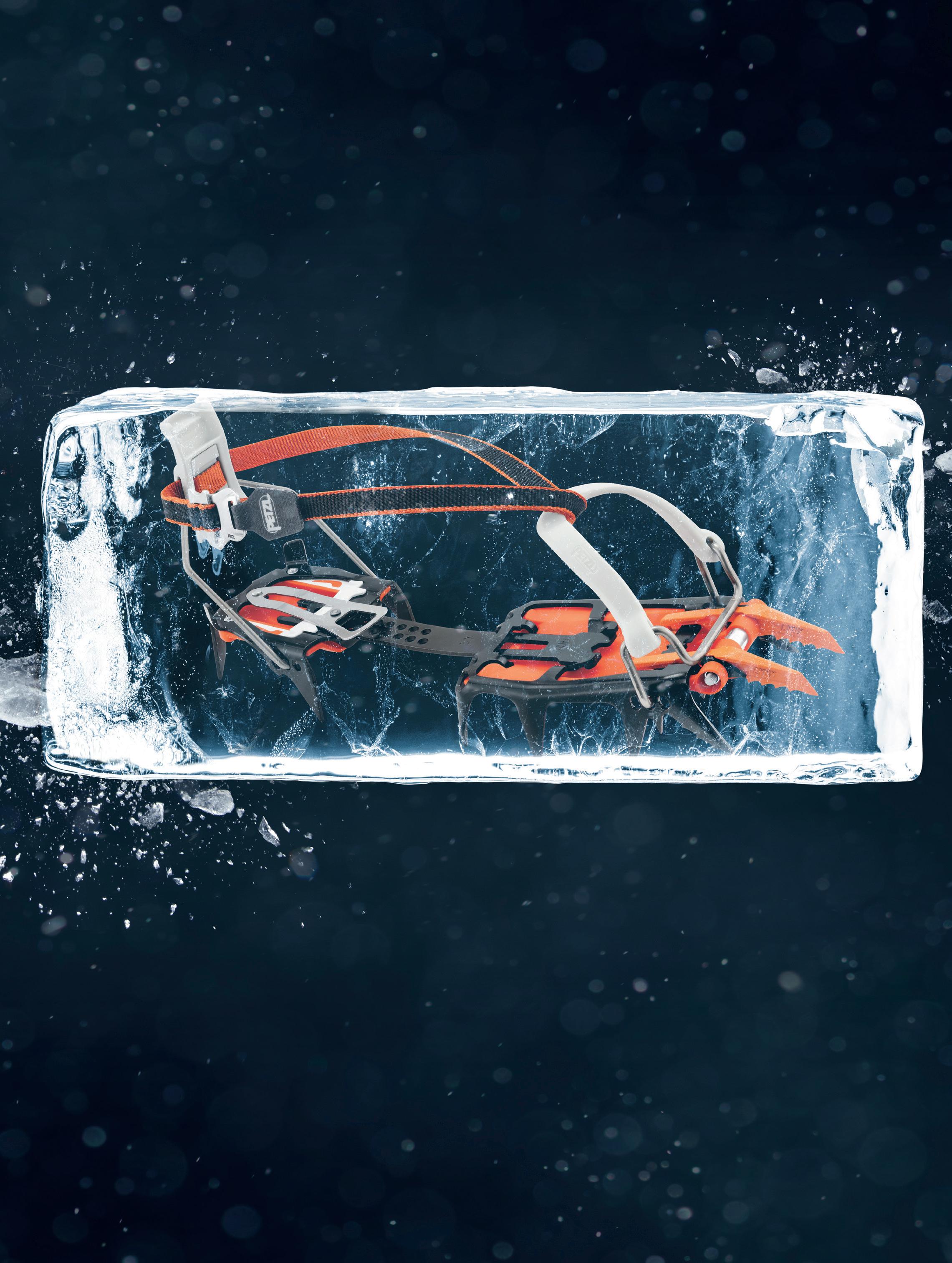
PRICE: £220 WEIGHT: 1,020G (PAIR) RATING: C2/C3
This 14-point crampon has ultimate versatility thanks to its interchangeable points. Choose the short mono point for ice, long mono point for mixed, dual points for gullies, and asymmetric dual points for pure ice climbing. It works with B2 and B3 mountaineering boots with heel welts and fits sizes EU 35-45.


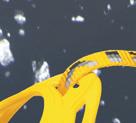


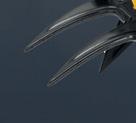
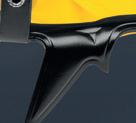




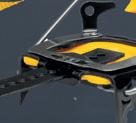
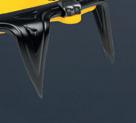

PRICE: £170 WEIGHT: 986G (PAIR)
RATING: C2

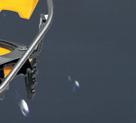


This crampon features a plastic harness at the front to hold boots securely, even if they have shallow or worn front welts. A 12-point, C2 configuration, it’s a crampon that brings security and stability in all snow conditions, making it ideal as an option for mountaineering and moderate ice routes.

PRICE: £175 WEIGHT: 892G (PAIR)
RATING: C2/C3


PRICE: £130 WEIGHT: 790G (PAIR)
RATING: C1

Lightweight and packable, the 10-point Irvis is ideal for trips involving glacier travel, classic mountaineering, and ski touring. It has tool-free length adjustment, and a Flexlock binding system comprising flexible front and rear cages, to fit B1 boots without toe or heel welts.






Designed for all-round mountaineering, this 12-point steel crampon – which is C2/ C3 rated – provides high levels of stability and bite on terrain ranging from glaciers to snow couloirs. Expect tool-free adjustment, excellent snow-shedding, a lightweight but still durable build and a reliable binding.
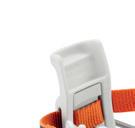


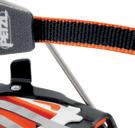
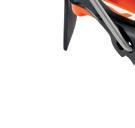





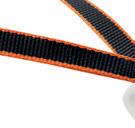


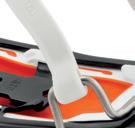











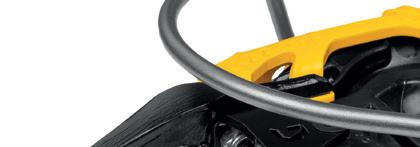


RATING: C1


PRICE: £110 WEIGHT: 800G (PAIR)
Grivel’s Monte Rosa is a simple, durable, reliable and all-round good value crampon that is perfect for UK winter hillwalking. A C1-rated model with hinged toe and heel cages, it’s easy to adjust and is compatible with all kinds of mountain boots – no heel or toe welts required.



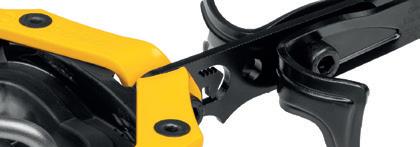





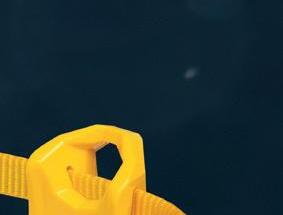










PRICE: £210 WEIGHT: 906G (PAIR) RATING: C3

The double front points on this C3-rated technical mountaineering and ice climbing crampon are made from hot-forged steel. The result? High durability and long-term resilience. The G22 Plus has a 12-point configuration with forward and backward facing spikes and Grivel’s Proactive Antibott design which prevents snow accumulation.
Ellis Brigham ambassador Anna Blackwell discovers unexpected inner strengths and the importance of intuition when a trip into Arctic Sweden leads to a difficult decision.

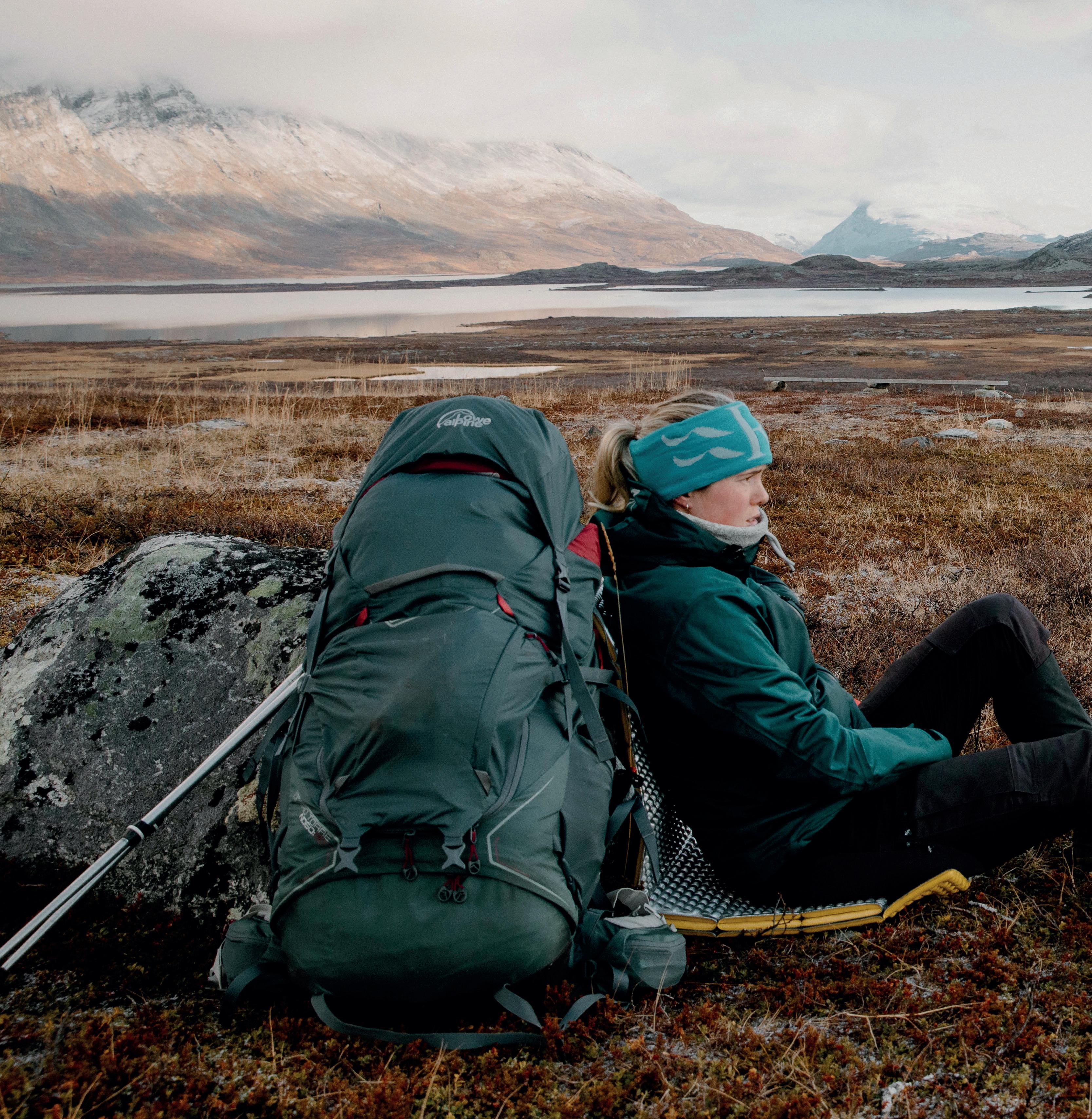
Words & Photos Anna Blackwell




It was the silence that woke me up. The absence of tent fabric rustling or reindeer moving past. I lay in my sleeping bag for a few moments, a sense of unease creeping in. Opening my eyes, it was immediately clear that my tent was drooping unusually low over my face. Puzzled, I sat up. I reached across to unzip my tent, revealing the world outside. It no longer resembled the autumnal fell landscape I’d been trekking through for the past week; now a blanket of fresh snow had transformed my surroundings and dense, low cloud obscured the nearby mountains. A smile spread slowly across my face. Now this trip really felt like an adventure.
Six days earlier, I’d set out by myself into the mountains of Arctic Sweden on the Kungsleden trail. This part of the world is incredibly familiar to me as I’ve spent weeks at a time trekking here - in fact, the year before I’d spent nearly three months walking 1,000km across Arctic and Northern Scandinavia solo.
The route I was following, which would delve into the Vistas and Nallo valleys, retraced adventures of summers gone by, but now it felt palpably different. It was October and the mountains were preparing for winter: the only colours
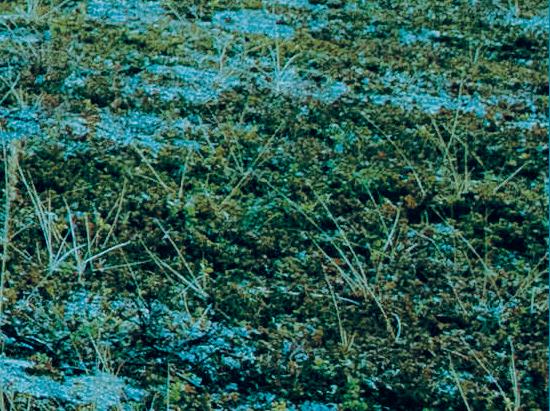



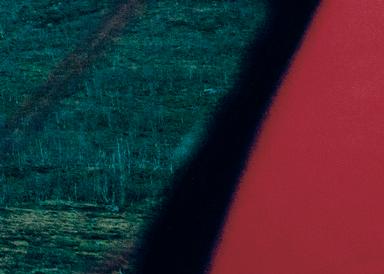

remaining in the landscape were occasional glimmers of the golden and rusty orange leaves that determinedly clung to their branches, and the deep brown of the fells’ lower slopes. The higher mountaintops were sprinkled with smatterings of snow.
Making my way into this somewhat stark scenery on that first day was indescribably familiar and comforting, like slotting back into a great friendship after time apart. I crawled into my tent that evening feeling awash with contentment. The following morning, my tent was covered in frost which crackled beneath my fingers as I threw back the awning to revel in the view.
As I progressed further into the mountains, I was filled with excitement by the icy boardwalks and biting chill in the air. On the morning of day four, I felt the first delicate flakes of snow fall on my face. They continued to fall with increasing determination all morning.
After a few hours, I reached a particularly dense and icy stretch of snow that clung to a steep slope. A ravine lay below, a fast-flowing river gushing through the narrow fissure. It was with a pang of nervous excitement that I pulled my crampons out of my rucksack and secured them to my boots. I quickly pushed out of my mind the unwelcome thought of what might happen should I make a misstep.
The following few days continued in a similar manner. Light snow carpeted the landscape and my crampons were needed only sporadically. I made it up and across the highest pass on my route and navigated through the precariously snowy boulder field on the other side. As I gradually descended from the pass to find somewhere to camp, the snow thinned and the landscape began to resemble the more autumnal feel of the first few days.
It was the following morning that I woke to find my tent nearly collapsing under the weight of the deluge of snow that had fallen overnight. The initial unease I’d felt quickly subsided as I took in the new beauty of my surroundings. A small herd of reindeer passed nearby, adding to the impression that I was trekking through some fairytale world.
All morning I had an almost overwhelming feeling of sheer joy and gratitude that effervesced inside me, reaching even my


“Within an hour, that elation had turned into a sense of foreboding.”
fingertips and occasionally spilling out in the form of my uncontainable smile. I couldn’t believe I was in these mountains and I was satisfied that I’d got myself into a position where I’d gained the skills and confidence to be trekking here by myself. I hadn’t seen even a trace of a person for six days by this point, not even a fleeting glimpse of bright rain jackets in the distance, a fact that glowed inside me.
Within an hour, that elation had turned into a sense of foreboding. The snowfall had restarted and was now coming down with a vengeance. As every minute passed, the snow on the ground was getting deeper and deeper, each step requiring more effort as my boots plunged into it. And now the wind was picking up, its icy claws ripping at my face and forcing the air temperature well below freezing.

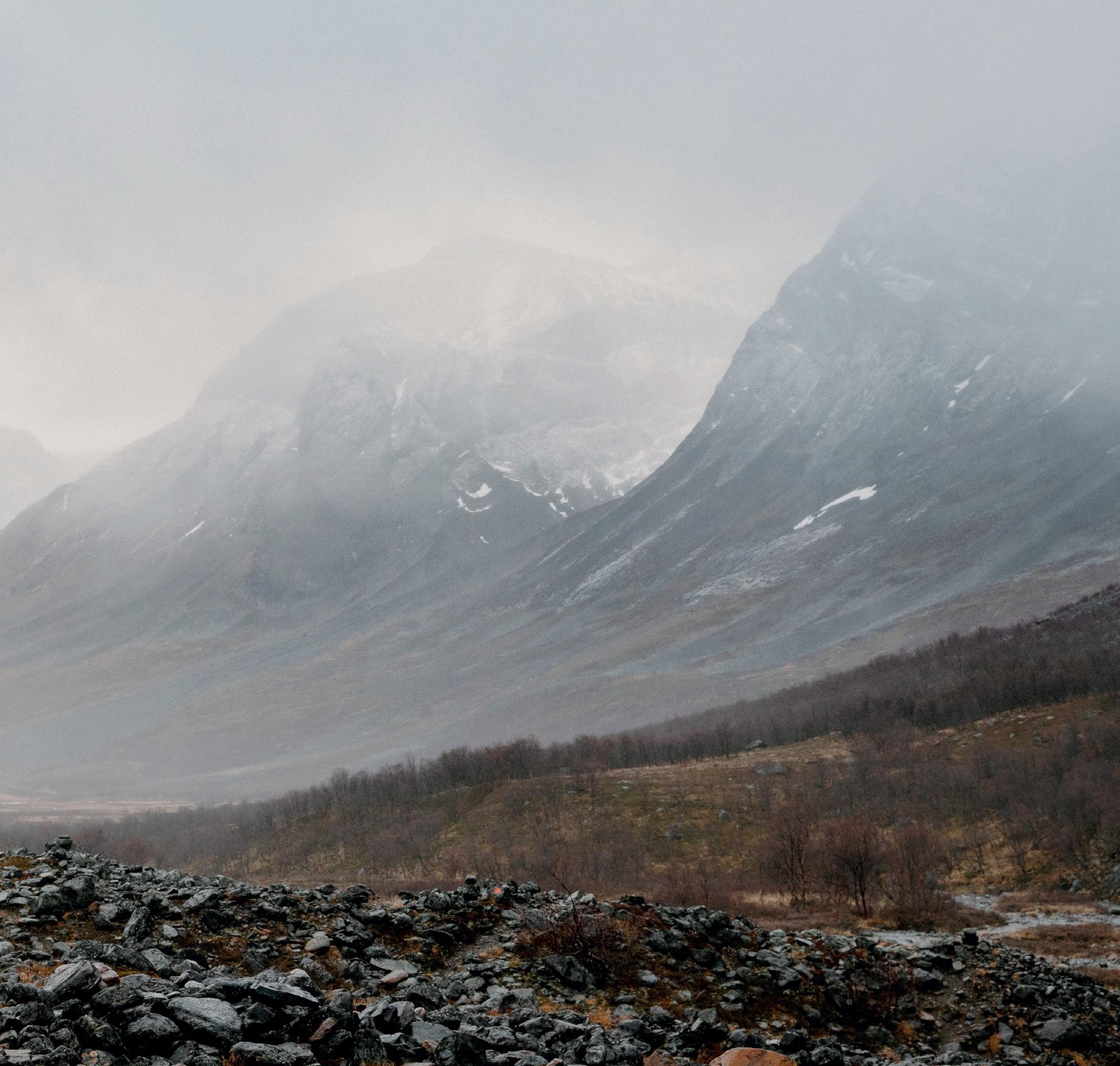

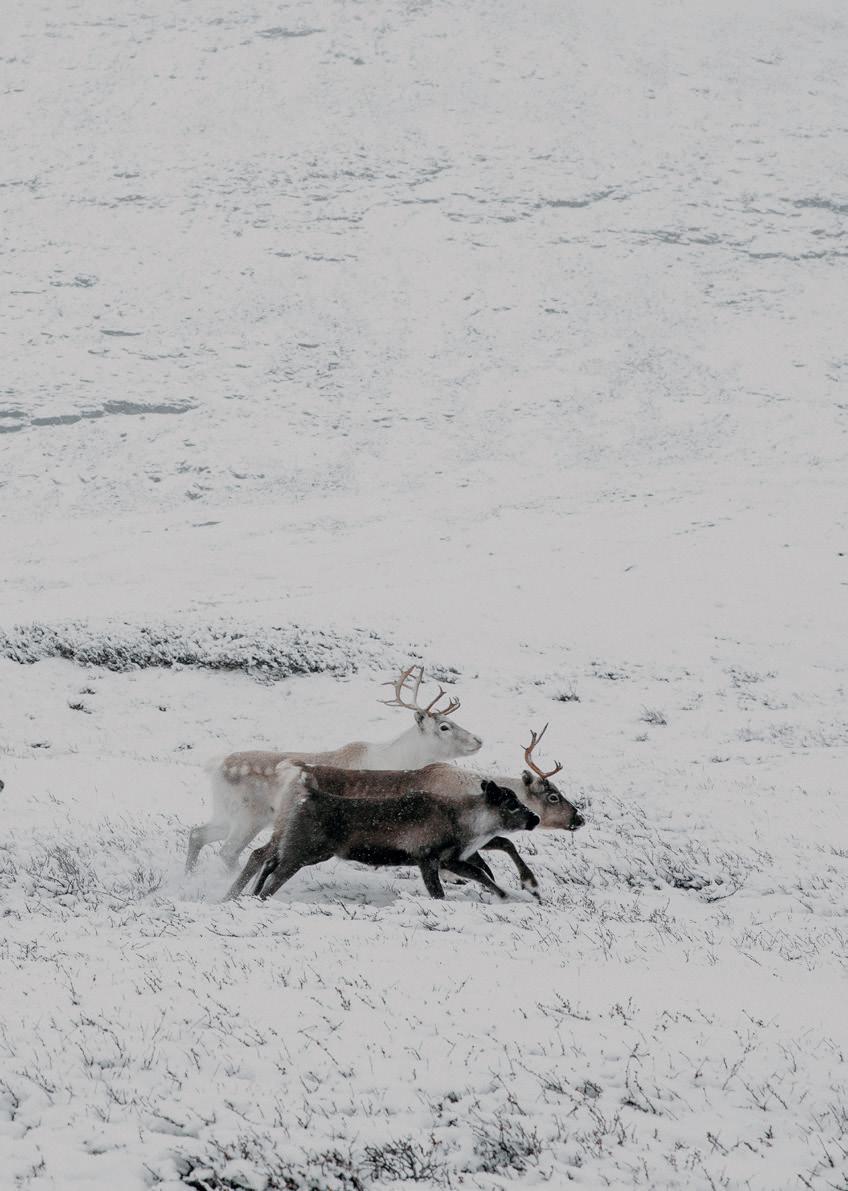
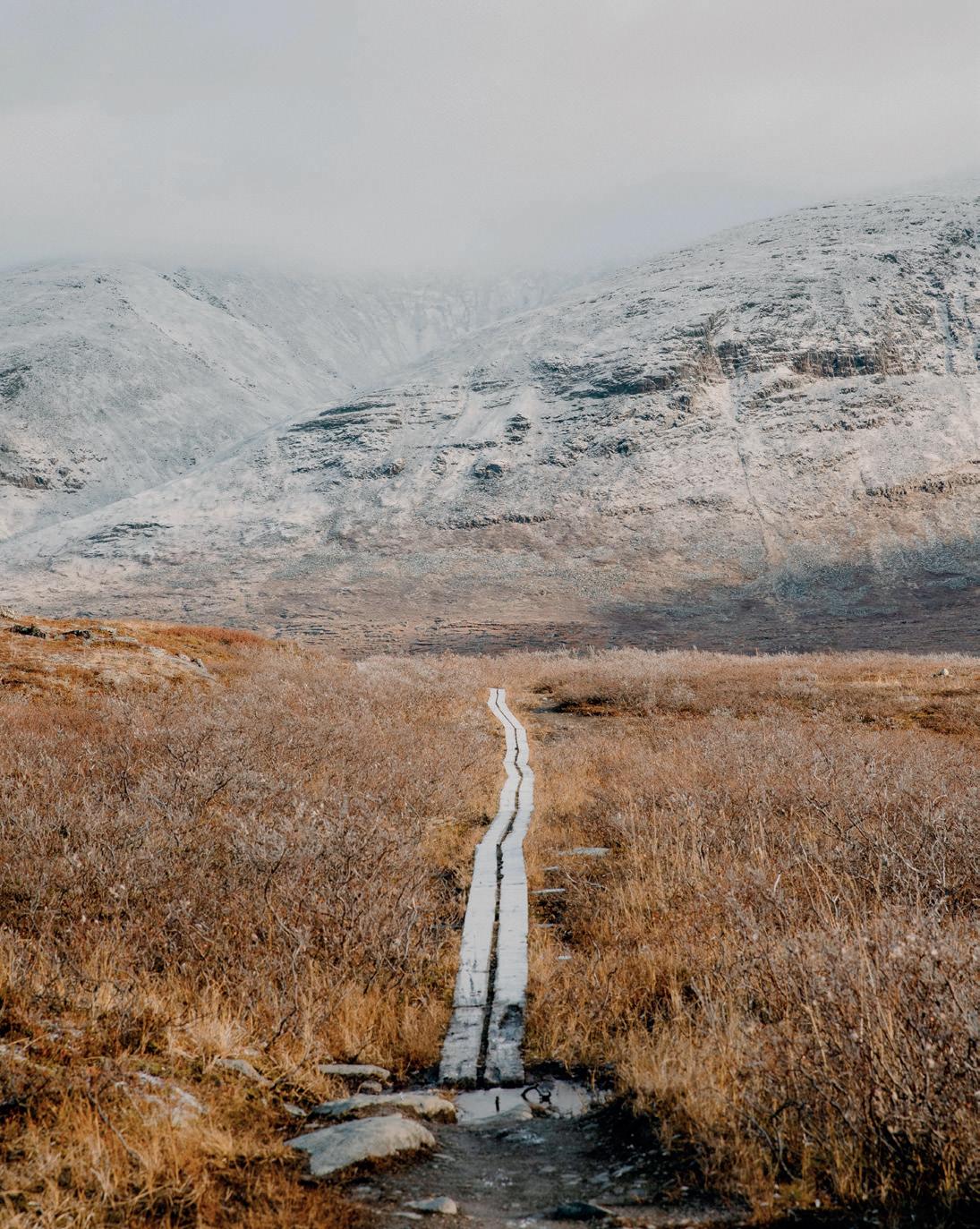


the


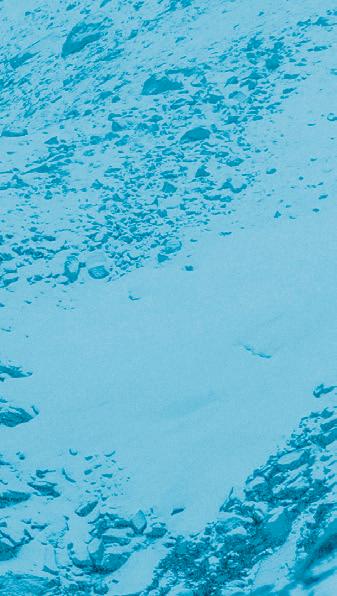
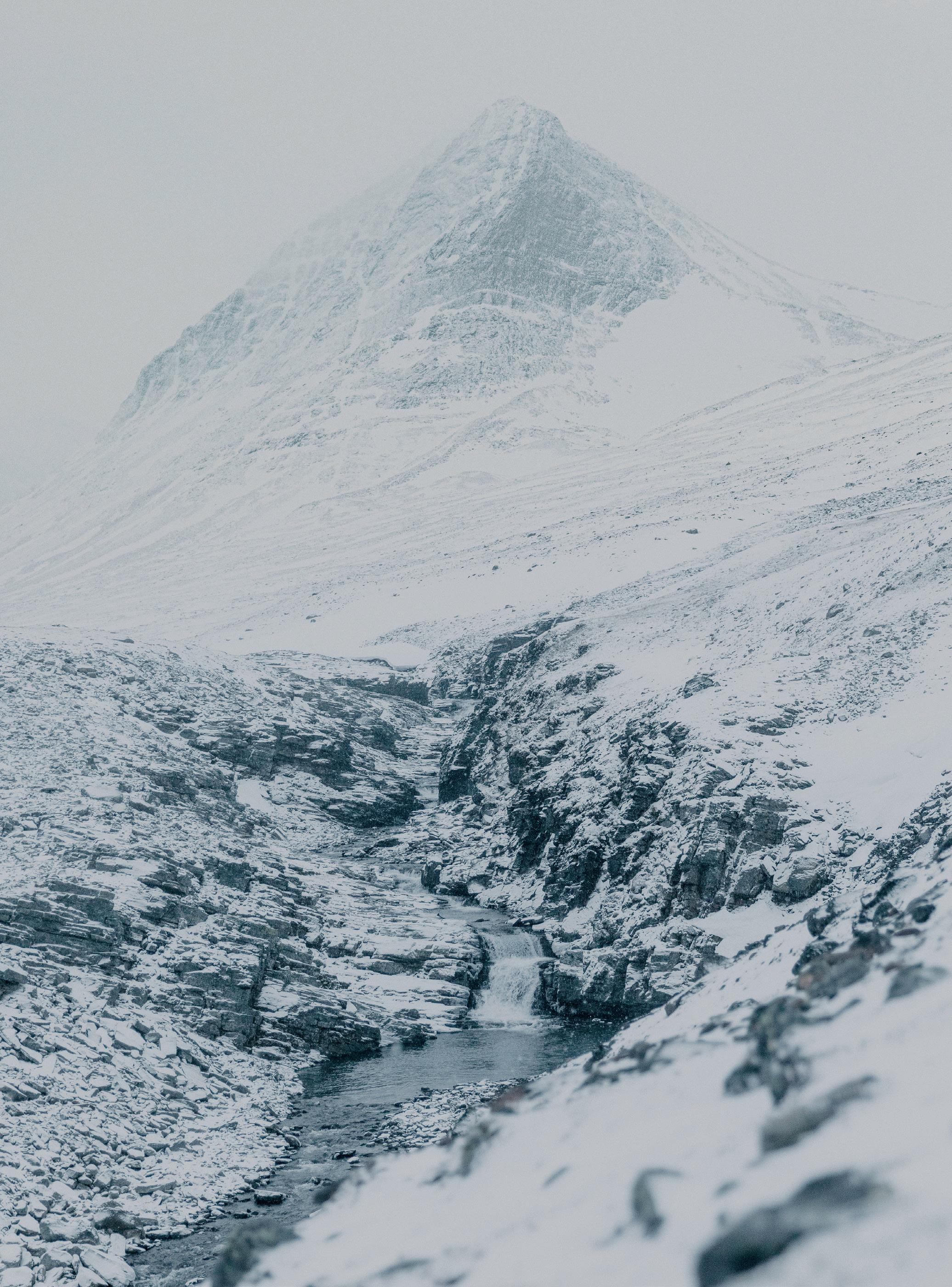

I knew there was a simple shelter on the lakeshore just a few kilometres away and decided to aim for it. It had only three sides and a corrugated plastic roof, but I felt desperate for even that much protection from the elements.
Once inside, I collapsed onto the bench. Exhaustion and the first traces of fear were beginning to seep in. To make it this far, I’d had to wade through snow that was kneedeep in places. I tried to force down some nuts and dried fruit, knowing hunger would not help the situation.
But what was the situation? Huddled in the corner of the shelter in my down jacket, sleeping bag and emergency bivvy, I finally acknowledged the reality. With this much snow, and more evidently on the way, I wouldn’t be able to make it back to the village without running out of food or succumbing to exhaustion. My progress in this snow was simply too slow. I looked down at my satellite communicator and my eyes were drawn to the letters on the side. SOS. Was that really the solution? Was this really enough of an emergency to warrant activating my SOS? I felt full of doubt, humiliated at being in this situation. More than anything, I felt alone – and isolated. I would have given anything to be able to ring someone to ask for advice or share the burden of making this decision. Not wanting to overreact, I decided to sleep on it. I pitched my tent inside the shelter and
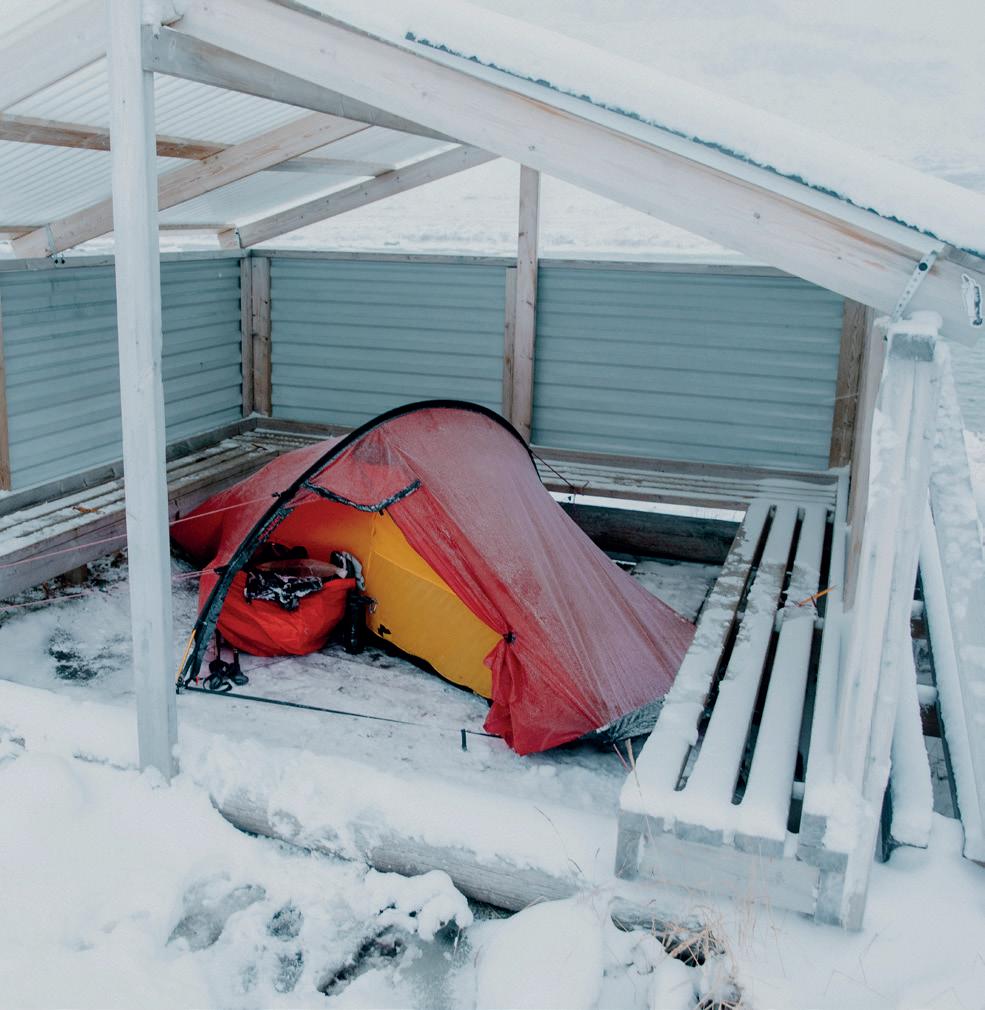

crawled inside, telling myself that if nothing had changed by 10am the following morning then I would take action.
Unsurprisingly, the conditions were the same in the morning. Finally, reluctantly, still unsure whether I was doing the right thing, I stepped out of the shelter, pulled the cover off the SOS button and held it down.
The words lit up in a red banner across the top of the screen. Moments later, the first communication came through from the International Emergency Response Coordination Centre. A brief message exchange established the nature of the situation, before they confirmed that the Swedish police would coordinate the rescue. Not long after, the police messaged. They told me to make my way to a cabin that was two kilometres away. I’d seen it on the map the previous day when I was trying to decide what to do, but unsure of whether it was privately owned and therefore locked, I’d opted for the shelter I was in. It took more than twice as long as usual to cover those few kilometres to the basic one-room, A-frame cabin. A little while later, a message from the police came through saying the weather was going to get worse and they would therefore send a helicopter to get me straight away.
Above: Regardles of the challenges Anna has faced there, Arctic Scandinavia continues to be her favourite place.
Left: A simple corrugated plastic shelter provides essential shelter from the blizzard conditions.
Only then did the stress of the situation hit me. But help was on its way. I was no longer alone in this.
The wind was so strong I didn’t hear the helicopter arrive. Seemingly out of nowhere, a young man burst through the door. I could see the helicopter outside, propellers still turning. In a flurry of activity he helped me gather my belongings and stowed them in the helicopter, before guiding me in. Turning to me, a big smile on his face, he asked, “Are you in a hurry to get back, or would you like to take the scenic route?”
His relaxed manner was at such odds with what I’d been experiencing for the last 24 hours. Slowly, I smiled back and agreed to the longer flight. We passed over the mountains I’d been trekking through, now snow-covered and frozen. At the end of the journey, a mountain rescue truck was waiting for me at the helipad. Inside it, I had to go through what had happened.
I kept waiting to be reprimanded for being so stupid as to get into this situation, but it never came. They didn’t blame me. Quite the opposite; the man reassured me that I hadn’t made some silly mistake or been unprepared. He reminded me that unseasonal weather can happen in these mountains. They’re unpredictable. I got caught out, but he praised me for acting quickly rather than letting the situation escalate.
Regardless of his words, it took me a while to process what had happened, and even longer to let go of the feeling that it was my fault. Ultimately, if you spend enough time in these harsh environments, the chances are that something will eventually go wrong. I’m incredibly grateful that when this did happen for me, I was equipped to handle it. I had taken the time to educate myself and gain mountain skills, I had the correct equipment, and importantly I had my Garmin Inreach+ – something I had carried with me on all my adventures, never expecting to use in this way.
The most profound thing I learned from this experience is to trust my intuition. I questioned myself so much as I sat in that shelter and I allowed myself to feel so much doubt in my skills and experience. However, I’ve always maintained that it’s my adventures that have taught me the most about myself, and this trip certainly taught me that I’m

“It took me a while to process what had happened, and even longer to let go of the feeling that it was my fault.”


Clouds heavy with snow reduce visibility in the Nallo Valley towards the end of day four.
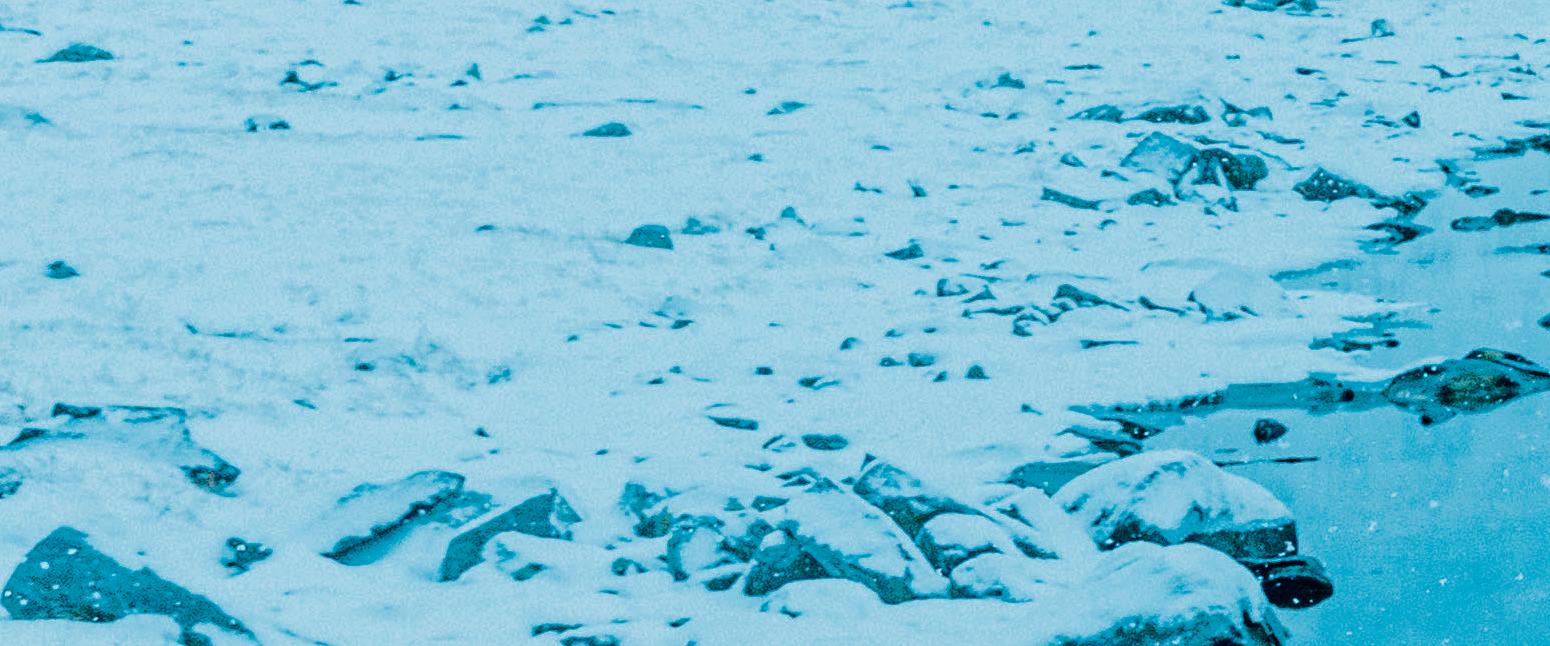

A helicopter arrives to rescue Anna several hours after she was forced to activate her SOS.

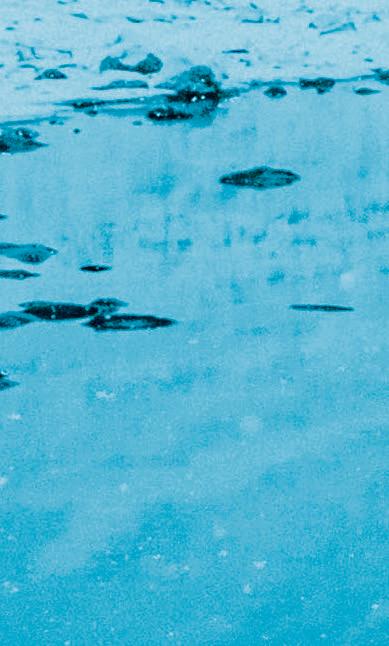



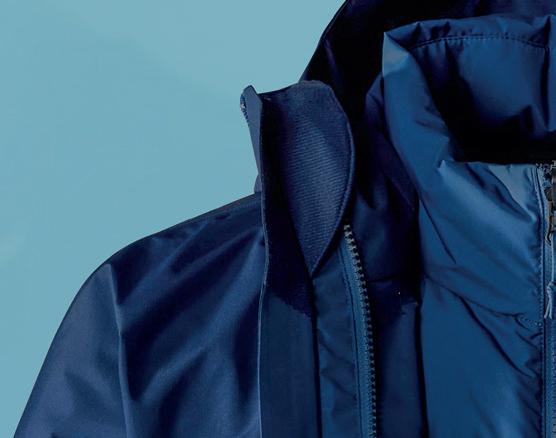





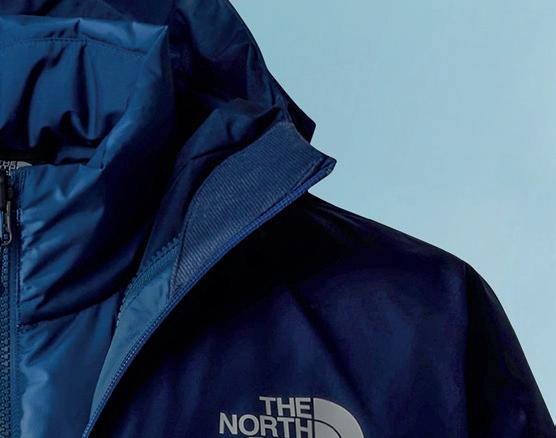
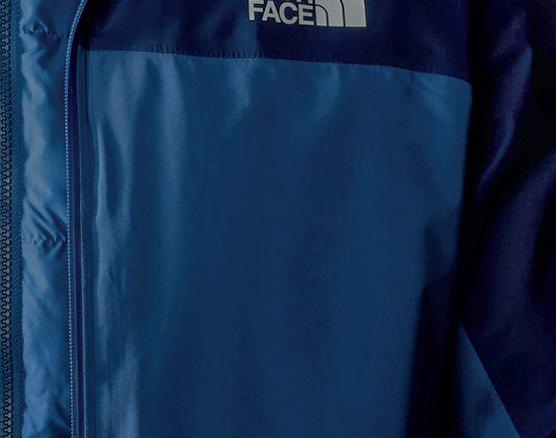
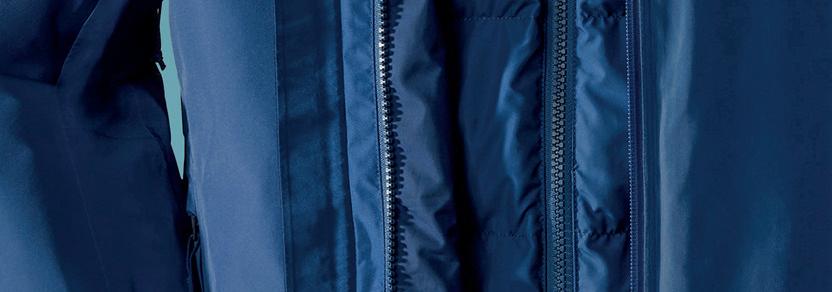




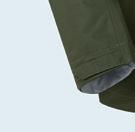

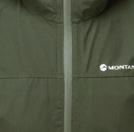






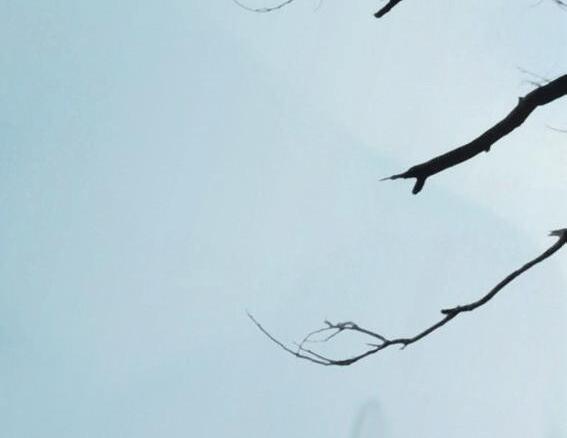

PRICE: £450
This versatile jacket from The North Face features a waterproof outer and removable inner down jacket, creating an adaptable 3-in-1 system perfect for all-season hiking. Both layers feature 100% recycled polyester while the 550fill goose down is Responsible Down Standard certified.





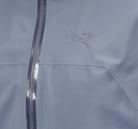


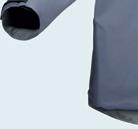
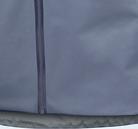
PRICE: £190
Rab’s Men's Microlight is an enduring classic that expertly balances warmth, weight, and compressibility. It’s packed with 700-fill recycled down that’s treated with Nikwax for water resistance and protected by a recycled Pertex Quantum shell that’s lightweight and windproof.
PRICE: £210
This waterproof jacket from British brand Montane is ideal for hiking and general outdoor use. With details kept at a minimum, it’s impressively lightweight and packable, but it still offers high levels of functionality in terms of its protection against the elements and overall breathability.


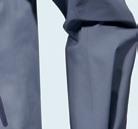

PRICE: £350
GORE-TEX’s forward-thinking ePE waterproof membrane is used here. Their latest fabric is PFC-free and has a reduced carbon footprint compared to the brand’s previous offerings. The jacket itself is a hiking favourite, with details including a low-profile StormHood, internal pocket, and embedded RECCO reflector.
PRICE: £180
Warmth-even-when-wet is the focus here, with the 3M Polarloft synthetic insulation able to loft and insulate even when it’s been exposed to rain. Ideal for UK winters spent in the hills, this jacket has an insulated hood with a stiffened peak, a harness-friendly two-way zip, and it can be stowed into the hand pocket.




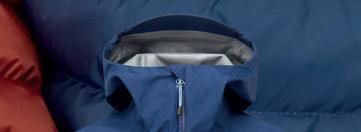









PRICE: £225
This lightweight down insulator provides reliable warmth, while its micro baffle construction also allows it to pack down small. Its outer shell is made from 100% recycled Pertex Quantum Eco fabric and the 750+ fill down meets the Responsible Down Standard and is fully traceable.
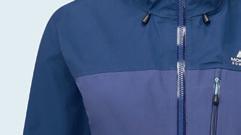

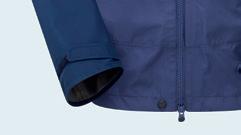
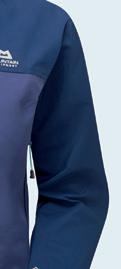

PRICE: £300
As well as using GORE-TEX’s new PFC-free ePE membrane, this shell jacket is made in a Fair Wear audited facility and contains bluesign approved materials, so it scores highly on sustainability and ethical production. It’s made for the mountains, so expect a stormproof hood, two-way main zip, and full articulation.
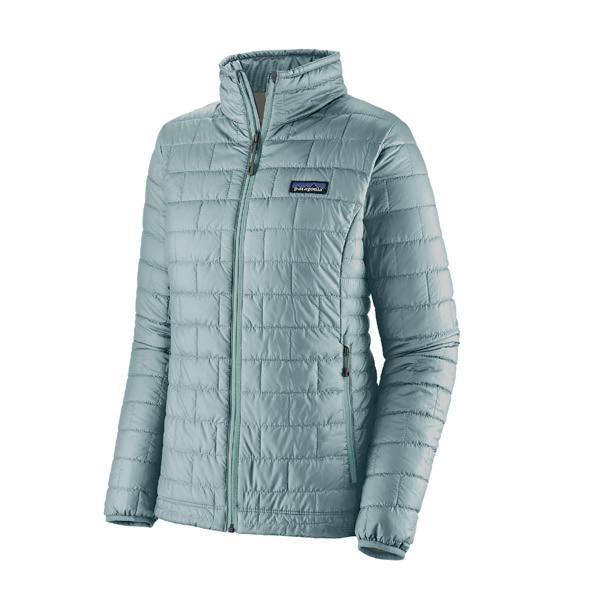
PRICE: £190
A Patagonia staple, this synthetic insulated jacket uses sustainably sourced materials, including 100% recycled shell and liner fabrics and a recycled PrimaLoft Gold Eco filling. Providing lightweight warmth that can perform in wet conditions, it offers year-round outdoor functionality.

































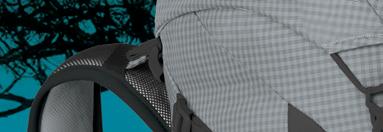










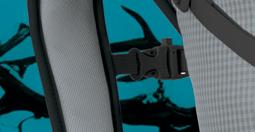


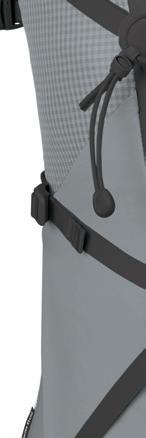


























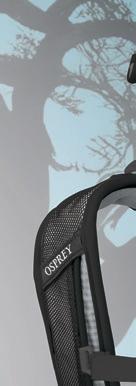







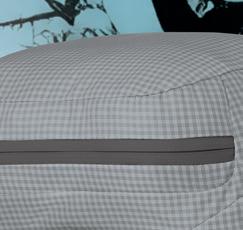
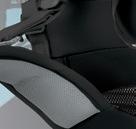



















OSPREY TALON PRO - 40L
PRICE: £240 WEIGHT: 1.44KG





This is one of those packs that has the volume and versatility to cater for all kinds of trips, from alpine mountain missions to multiday treks. Its AirScape back panel brings close-to-the-body balance and breathability while it also boasts a super tough NanoFly ripstop fabric that’s derived from recycled materials.













































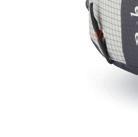
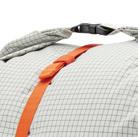


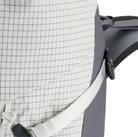
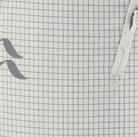


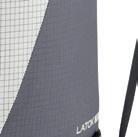
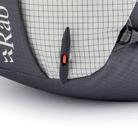
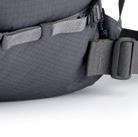
PRICE: £160 WEIGHT: 860G









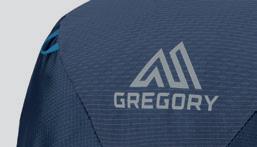







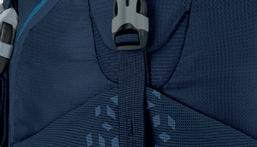




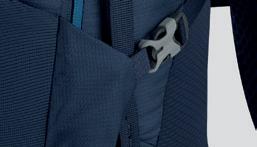






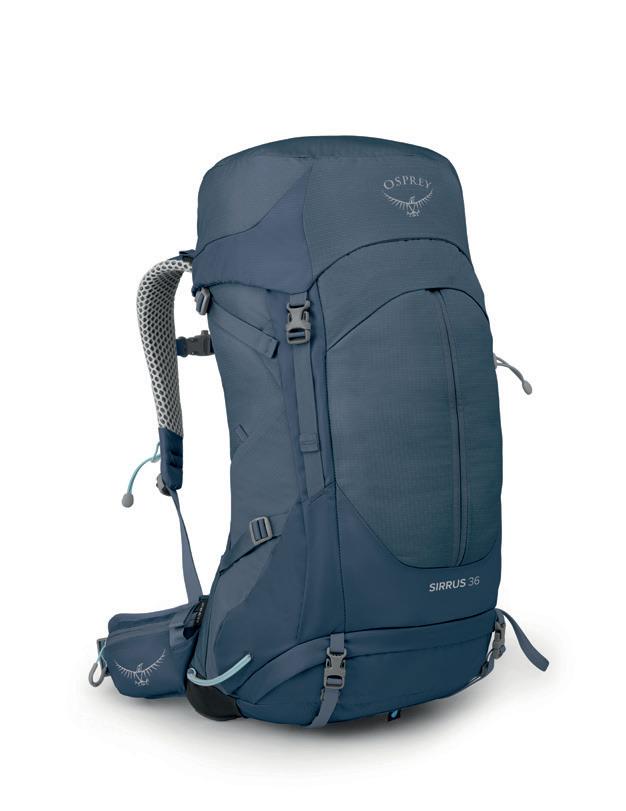
PRICE: £180 WEIGHT: 1.43KG






Fine-tuned for fast and light alpine missions, this is a lightweight pack that’s loaded with details, including A-frame ski straps and rope and ice axe attachment points. If you’re looking to keep weight to a minimum, you can remove various elements like the back panel and hip belt to shave as much as 250g.

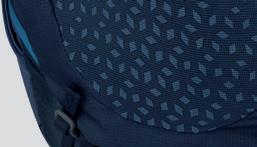



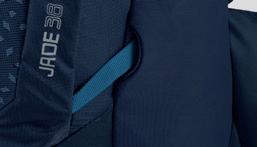



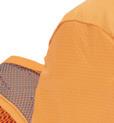











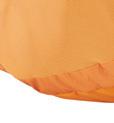
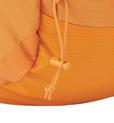
PRICE: £150 WEIGHT: 920G
This women’s specific hiking pack gets the big and little details right. First of all, it’s durable, comfortable, ventilated and has excellent load bearing. Then there are touches like the adjustable back length, Stow-on-the-Go trekking pole attachment, and three points of access to the main compartment for easy packing.









PRICE: £185 WEIGHT: 1.55KG















This is a pack for those that like to move quickly. Designed to support extended days out in the hills, it features a dualstrapped, running vest-like harness and wide hip belt fins for maximum load stabilisation. There are plenty of nifty pockets too, including external stretch mesh on the front and side.
Designed specifically for women, this 38-litre pack hits the sweet spot for overnight adventures while it can also serve those big day hikes that might require extra warm kit and/or snacks. Its alloy steel frame supports heavy loads, and the U-shaped front zip makes all your kit super easy to access.













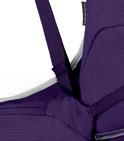



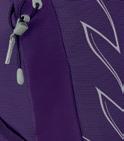



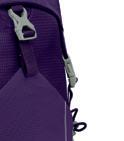



PRICE: £165 WEIGHT: 1.1KG





Offering 30-litres of practical storage, including a mesh pocket under the lid and zipped pockets on the hip belt, it’s easy to keep your gear in check with the Tempest. Ideal for year-round hiking, the adjustable, women’s specific AirScape back panel gives a precise and comfortable fit.
The ‘world’s strangest race’, in the words of those who’ve captured it, succumbed to it and triumphed at it.
Photos David Miller
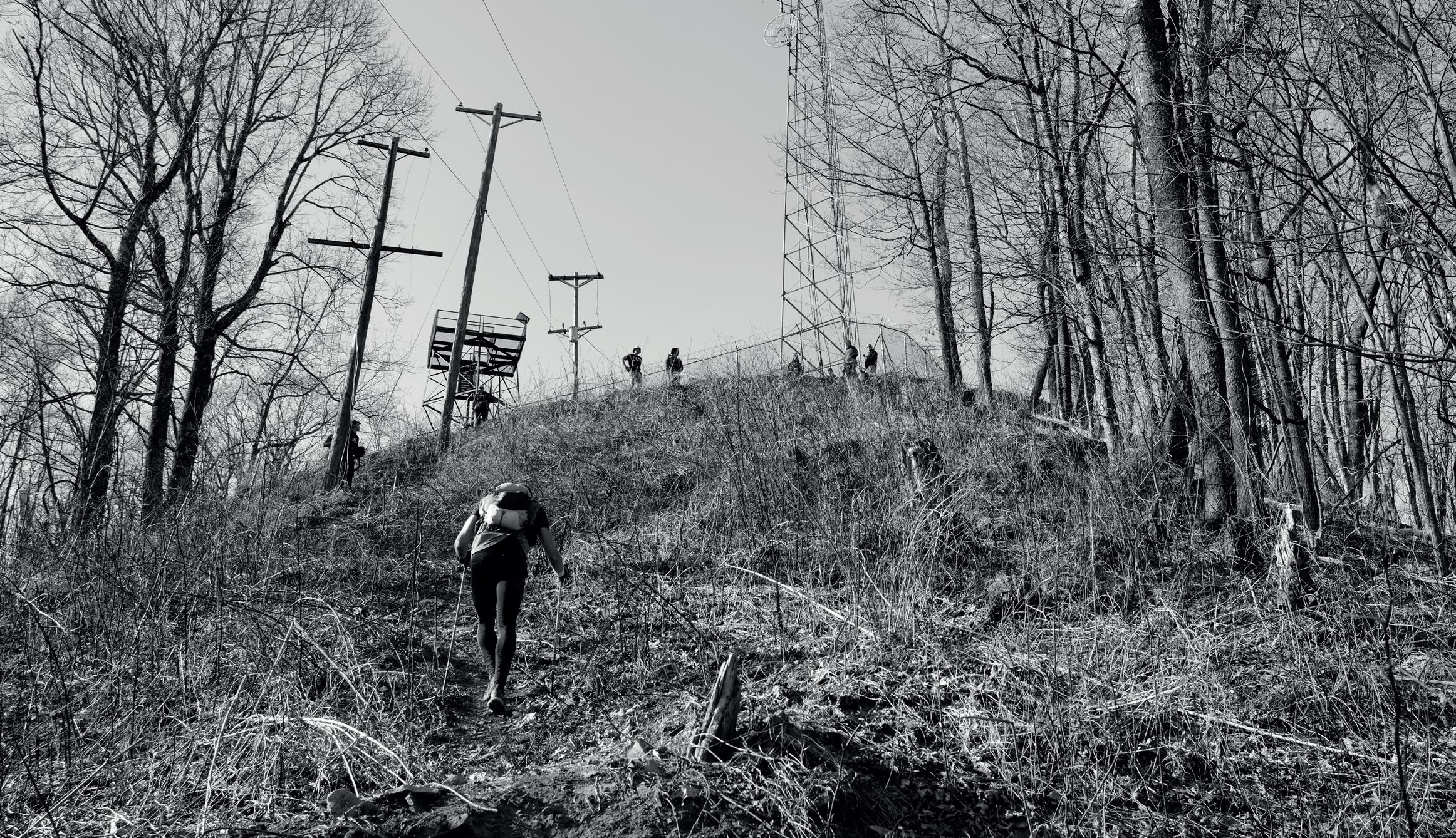
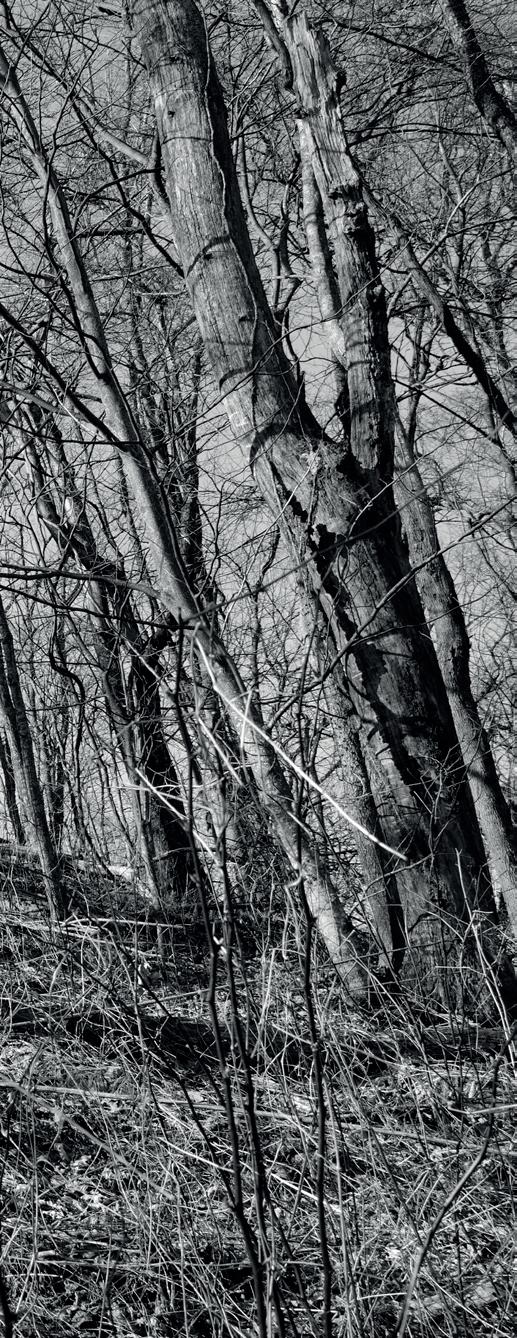
“Be prepared for things to go wrong – because they always do.” That, Jasmin Paris, says, is the crucial component for being able to complete the famous Barkley Marathons. In March, she managed to finish the 100-mile course with just one minute and 39 seconds to spare of the 60-hour cut off, making her the first ever female finisher. It was a feat that broke into mainstream news, being covered by the likes of The New York Times, CNN, the BBC and The Guardian.
“It’s perhaps the ultimate ultrarunning challenge,” says Eoin Keith who took part in 2023. “For me the single hardest thing was the sheer relentlessness of the climb and descents. Tennessee wouldn’t have the mountainous reputation of the Alps or the Rockies, but the hills in the Barkley Marathons don’t lack for relentless steepness.”
Part trail race, part orienteering challenge, ‘the Barkley’ takes place in Frozen Head State Park in the Appalachian mountains. The route involves five 20 to 30-mile loops and is largely off-trail, pitting runners against dense and thorny vegetation, unpredictable weather and over 60,000 feet of elevation. Since it began in 1986, the event has been attempted by more than 1,000 people, some making multiple attempts. Only 20 runners have finished.
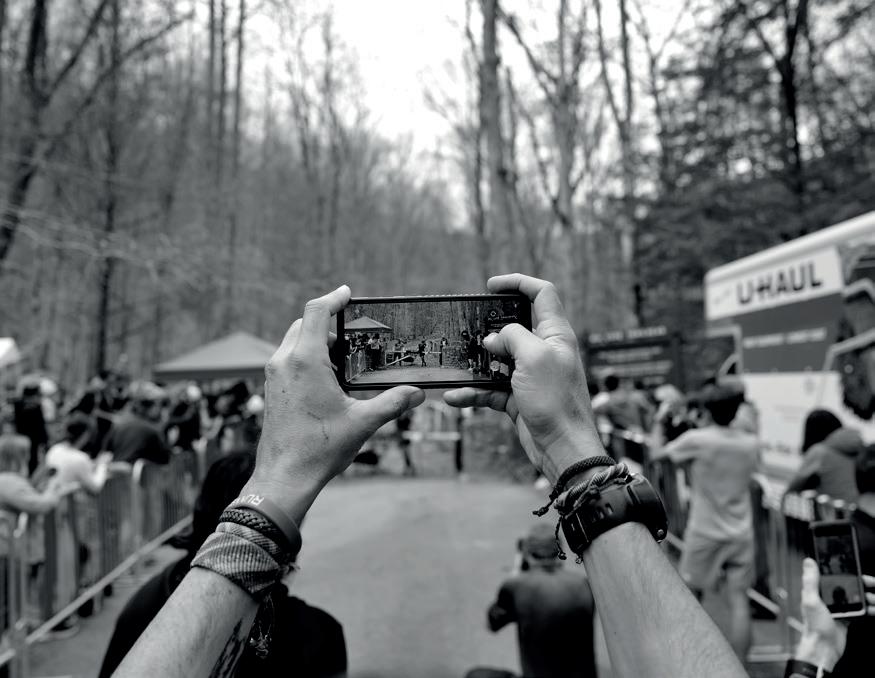
Above: A crowd’s perspective witnessing John Kelly becoming a 3x Barkley Marathons finisher. The American also finished the race in 2017 and 2023.
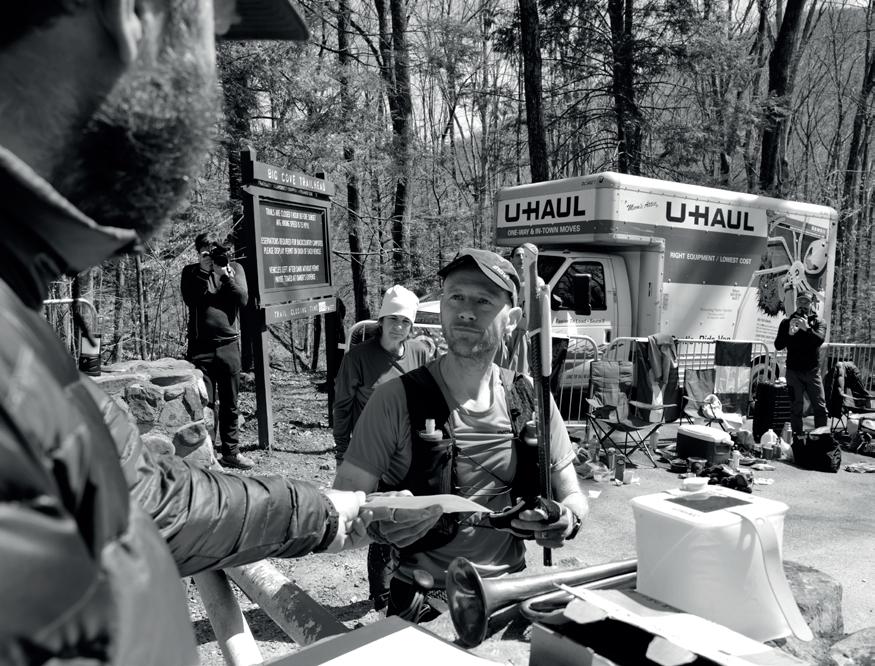
“The other really hard thing is the amount of mental concentration it takes to try to navigate around using fundamental navigation skills, while following Laz’s uniquely quirky instructions,” says Eoin. He’s referring to Lazarus Lake, real name Gary Cantrell, the man behind the Barkley. Inspired by James Earl Ray’s failed prison escape, where the assassin of Martin Luther King Jr. managed only eight miles in 55 hours through the rugged terrain around Brushy Mountain State Penitentiary, Laz envisioned a challenge where participants would aim to cover at least 100 miles in the same timeframe. This idea led to the creation of the race.
Laz’s application criteria for the challenge is kept secret. What is known, however, is that prospective participants must submit an essay titled “Why I Should be Allowed to Run in the Barkley”. The entry fee, if accepted, includes a number plate from the runner’s home state or country and first-time entrants are also required to bring an additional item specified by Laz (often something quirky or practical like a white shirt or socks). The start time for the challenge can be any time between midnight and noon with Laz blowing a conch shell to signal one hour until the start. It then officially begins when the eccentric 69-year-old lights a cigarette.
“Participants must submit an essay titled “Why I Should be Allowed to Run in the Barkley.”
Right: The early spring weather often brings fluctuating temperatures, heavy rain, dense fog, and muddy terrain, making navigation and endurance especially challenging.


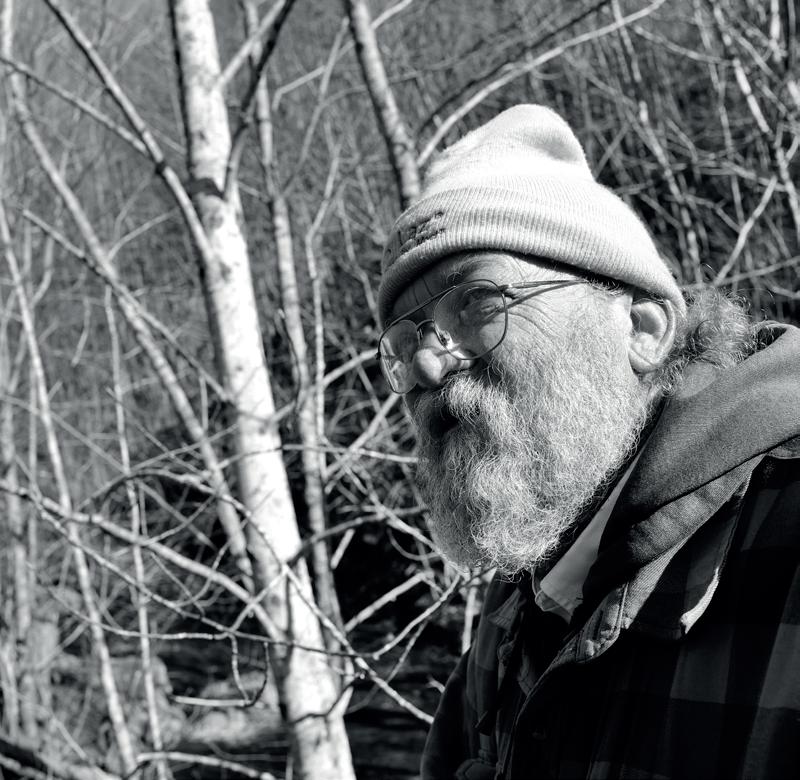
Above: Gary Cantrell, more commonly known as Lazarus Lake, the mastermind behind the Barkley Marathons. Each race sees ‘Laz’ hide 13 books along the course which runners must locate.
Below: First time runners must bring a number plate from their home country as part of the entry process. It’s a tradition to hang these up at the race basecamp.


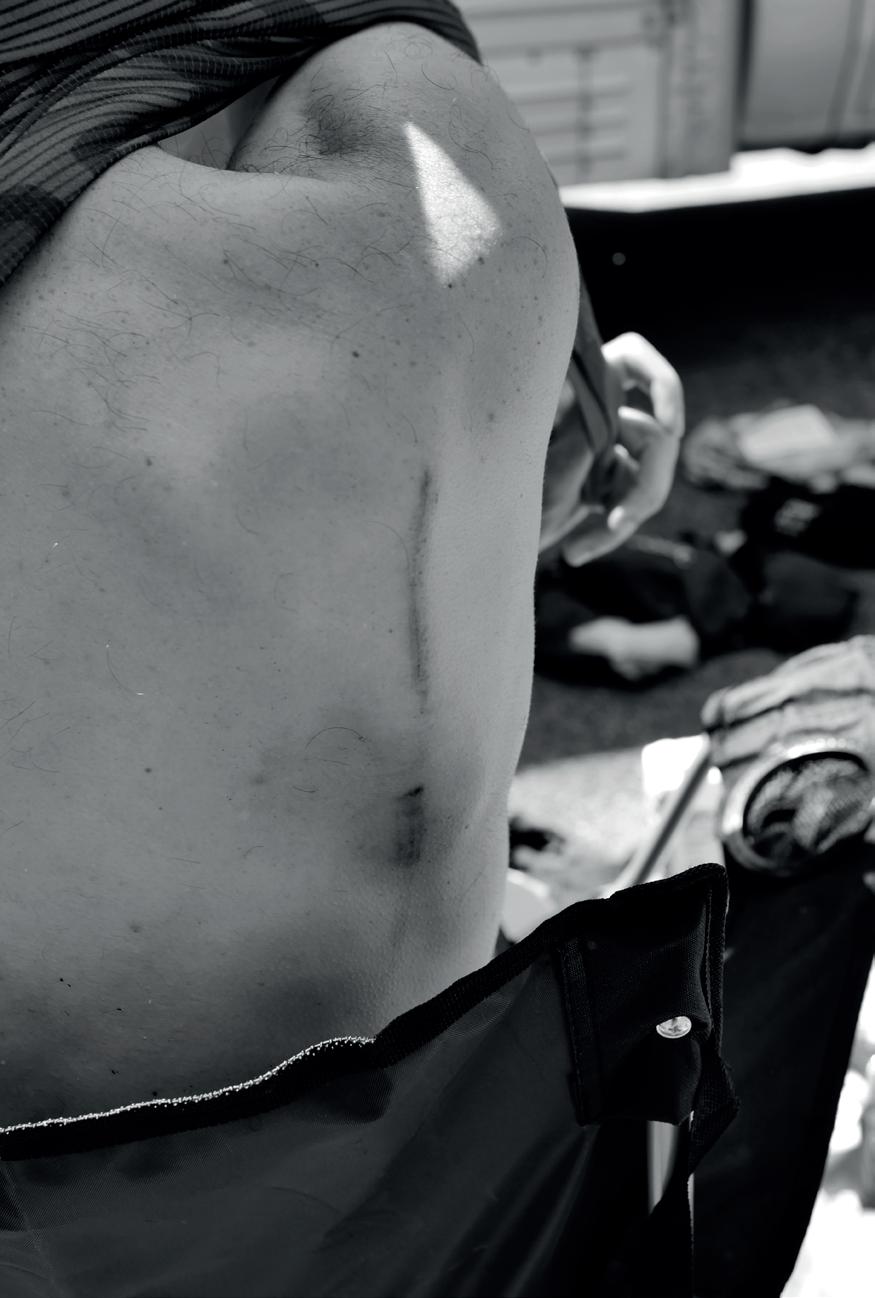
“Very intelligent and intriguing. He’s a man of mystery and commands respect without trying.” That’s how David Miller describes Laz. A professional running photographer, David was there to capture the 2024 event and his incredible images are set to be printed in a new hardback book titled ‘Do Not Block Gate’. Launched on Kickstarter in collaboration with outdoor publisher, Vertebrate, the first print run has already sold out.
“It was a surreal moment,” says David, referring to the images he captured of Jasmin Paris crossing the finish line. “No-one at the camp thought it was possible considering how fast Jasmin would have to finish the final lap, so when she came running up to the gate with two minutes to spare I remember screaming behind the camera. I feel I witnessed one of the greatest sporting achievements and performances of all time.”
And how does Jasmin remember it? “I still feel a real sense of joy and warm satisfaction when I think back,” the Edinburgh-born vet says, “Finishing Barkley was a threeyear project for me, it was an incredible feeling to finally get it done.”
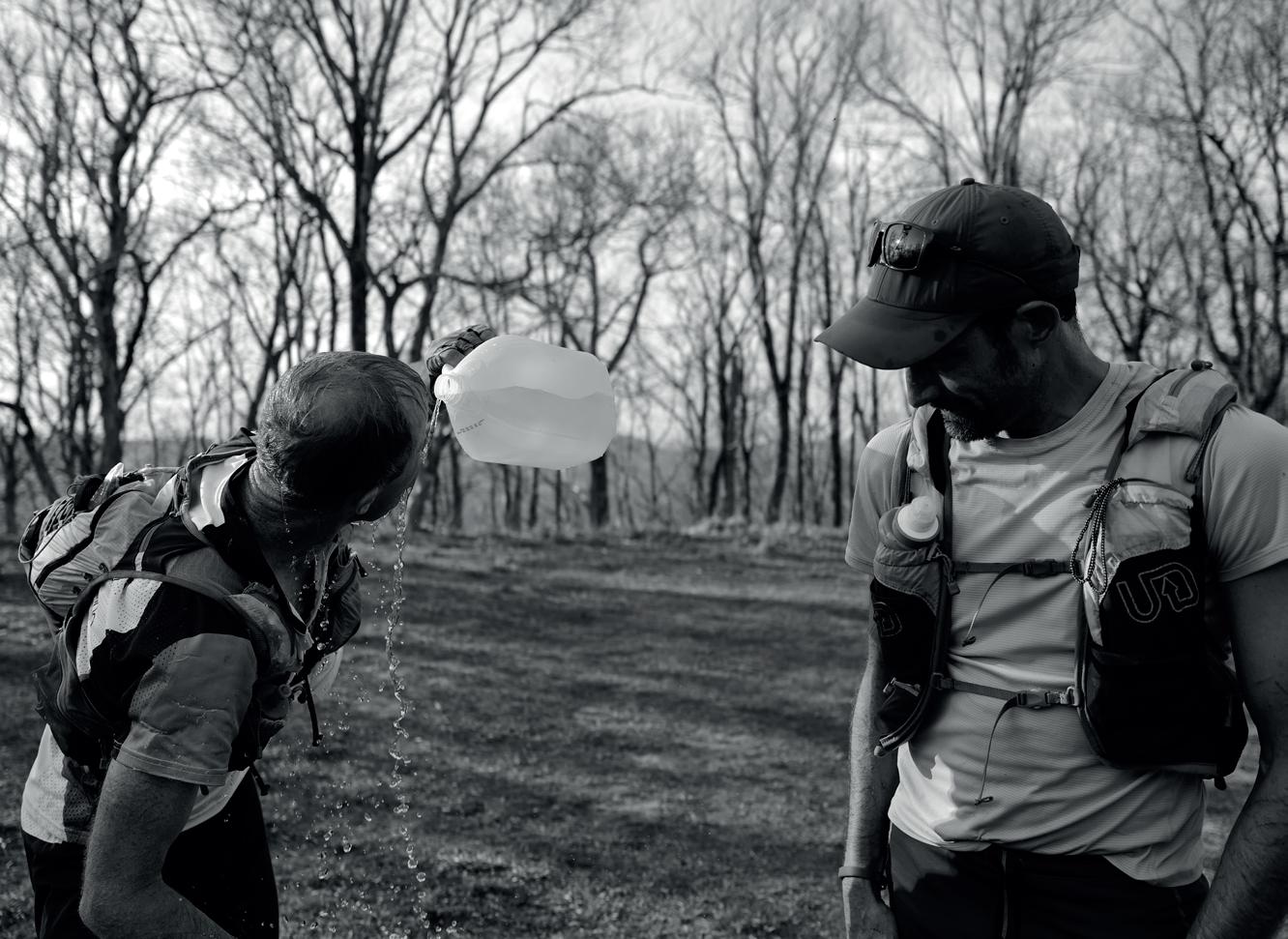
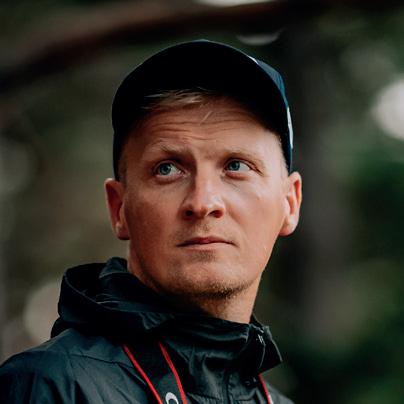
The


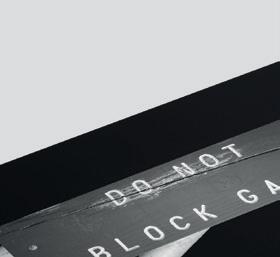
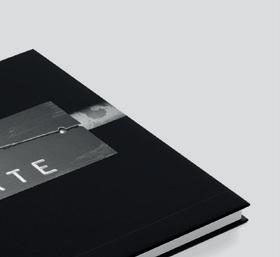



SALOMON MEN’S SPEEDCROSS 6 GORE-TEX
PRICE: £160
Specifically tailored to technical, muddy, soft-ground trail and off-trail adventures, the Speedcross line has been hugely popular with trail runners since its first release in 2006. This sixth generation version is lighter than ever before, boasts a high rebound midsole, and has a durable, waterproof, and dirt-blocking upper.


PRICE: £160
The latest version of this hugely popular shoe comes with the same much-loved virtues of the previous iteration but with added protection and tweaks to enhance the overall comfort levels. GORE-TEX’s Invisible Fit technology keeps you dry, while the Vibram Megagrip sole with 5mm lugs gives incredible traction.

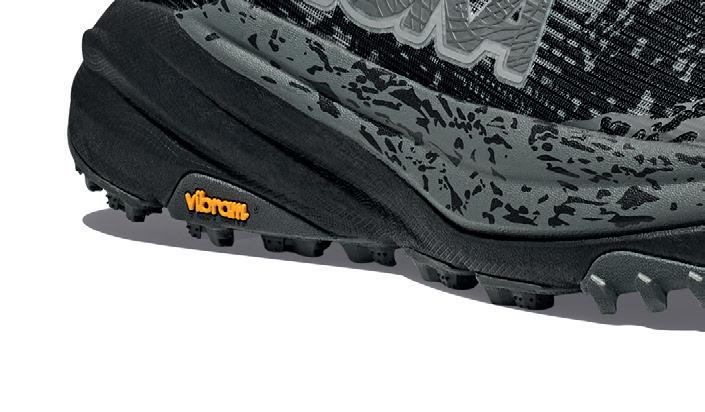
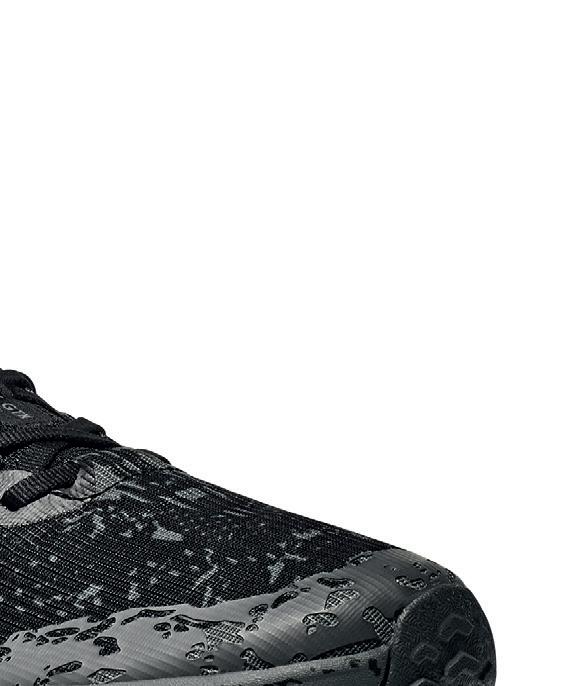
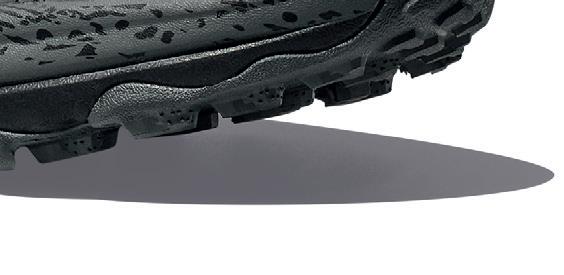
PRICE: £175
With its gnarly 6mm lugs and a pattern that’s specific for soft ground, this shoe is made for mud – though it also has impressive capabilities on tough, technical terrain too. Expect it to fit like a glove as well, all thanks to its Wrap360 upper and specially-developed Boa Fit System.

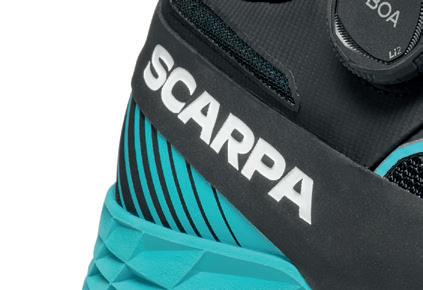
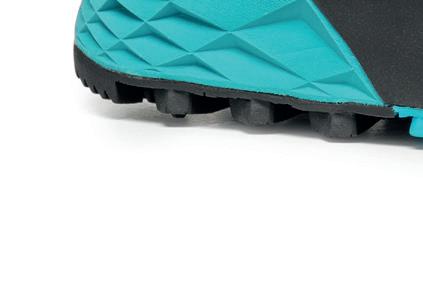
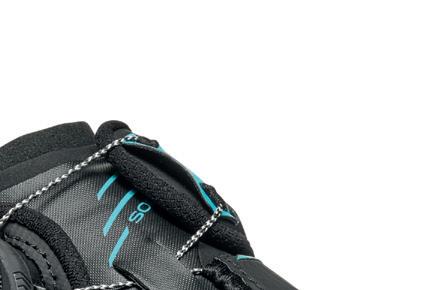

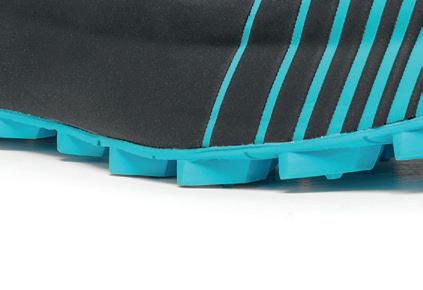
PRICE: £150
The Scarpa Spin ST ranks as one of the lightest shoes in our collection, coming in at just 260g. Its 7mm lugs and durable, fast-draining upper and high ankle cuff all combine to make this a proper fell shoe – one that really thrives over mud.

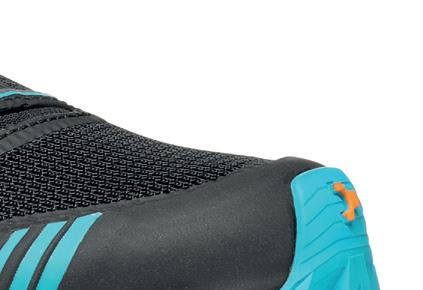
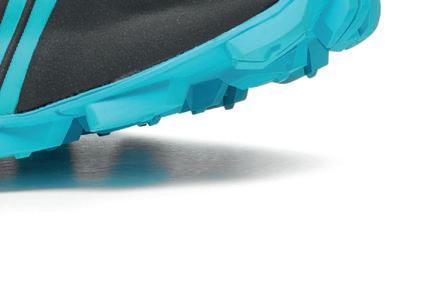



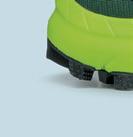
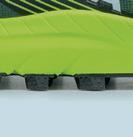
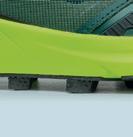



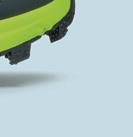
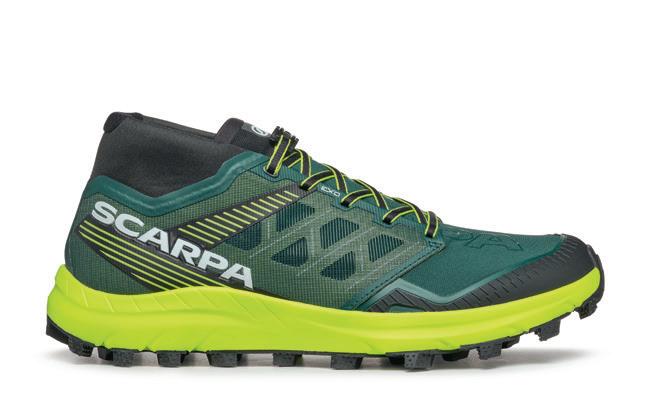
PRICE: £155
Made for soft, muddy surfaces and for racing and training over medium-long distances, the Mutant has established itself as a favourite amongst mountain ultra runners. This new model features an integrated spiral opening gaiter that hugs the lower part of the ankle, 5mm lugs, and a reliable brake system to enable confident speed downhill.
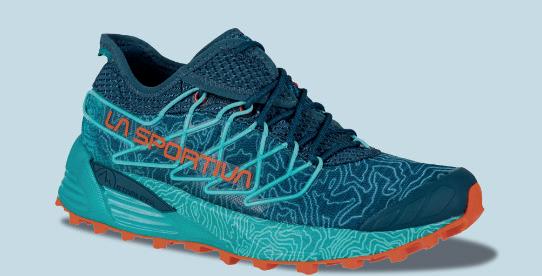
PRICE: £150









Lively, grippy and comfortable, the Challenger 7 is a road-to-trail shoe that can hold its own on moderately technical terrain. Hoka have made it lighter than the previous iteration, while they’ve also increased the stack height and added new, more durable materials across the upper, midsole and outsole. technical terrain. Hoka have made it lighter than the

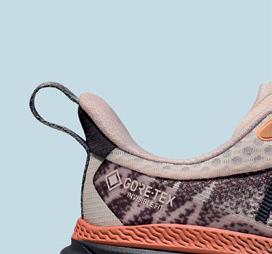














PRICE: £185




Made with a 20-denier Pertex Shield fabric, this lightweight jacket offers waterproof and breathable defence in a packable size. Its added stretch allows for a close fit that moves with you, while the hood has three adjustment points and a stiffened peak for dependability in strong winds.
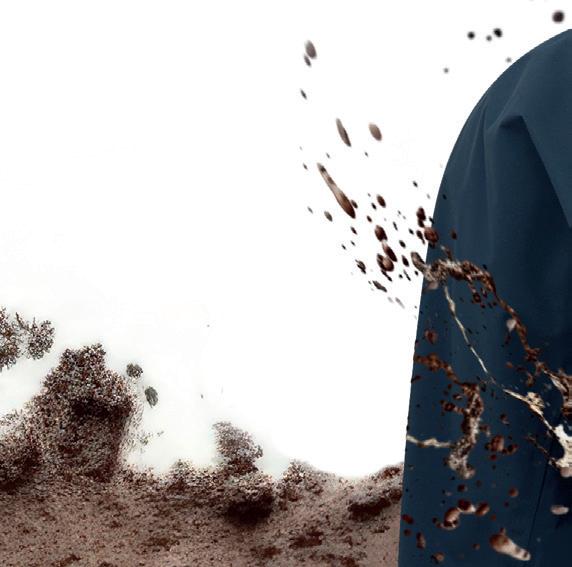

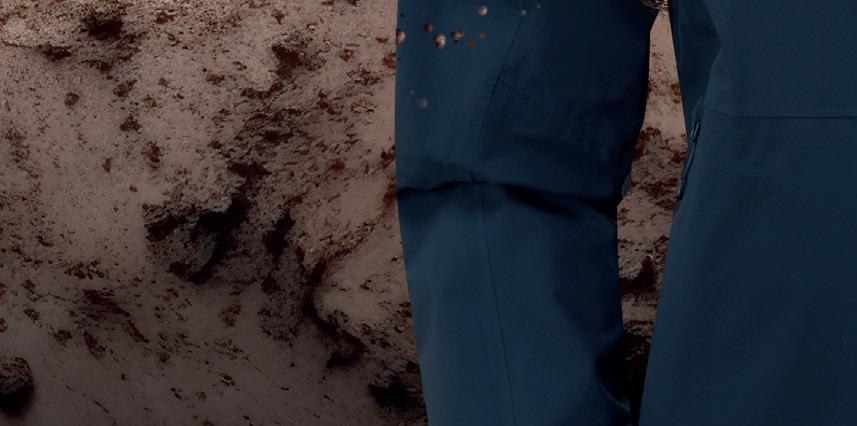


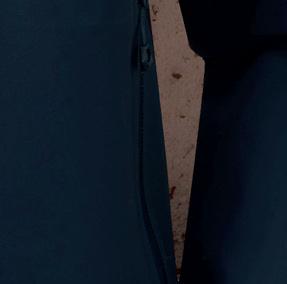
PRICE: £115
With a massive 1000 lumen output, in-built technology that adjusts the brightness to your needs, and a number of different settings to aid night navigation and emergency signalling, this head torch from Petzl ticks all the right boxes for winter trail running – and it weighs just 100g.
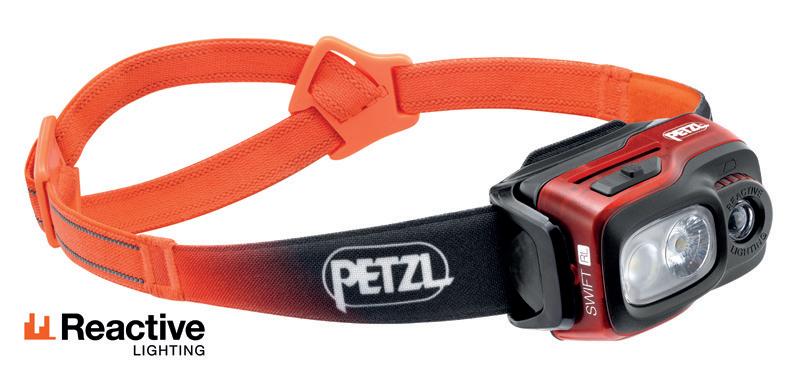

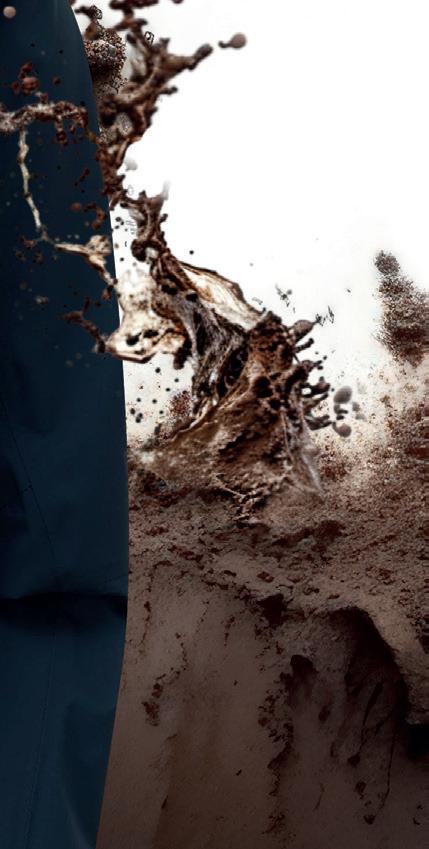
PRICE: £75
These ultralight and packable crampons are compatible with any trail shoe and can be slipped on in a jiffy when the path ahead looks icy. They feature a total of 21 steel crampon spikes that are 8 millimetres long and built for high resistance.

PRICE: £50
Suitable for a range of sports in cool to mild conditions, this technical base layer is made from lightweight, 100% recycled Apex PK Eco fabric which perfectly balances warmth with breathability. It’s also effective at wicking sweat away from the skin and comes treated with Polygiene odour control.

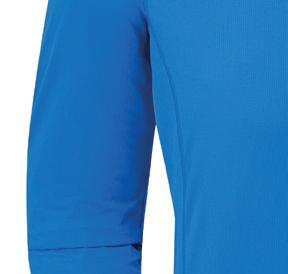



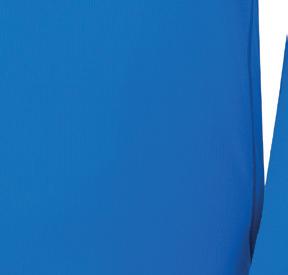



PRICE: £140
This is designed to perfectly align with the contours of the body to move with you even on the bumpiest descents. It’s the ideal size to cater for most ultra race kit lists and comes with two 500ml soft bottles along with permanent Polygiene odour control.
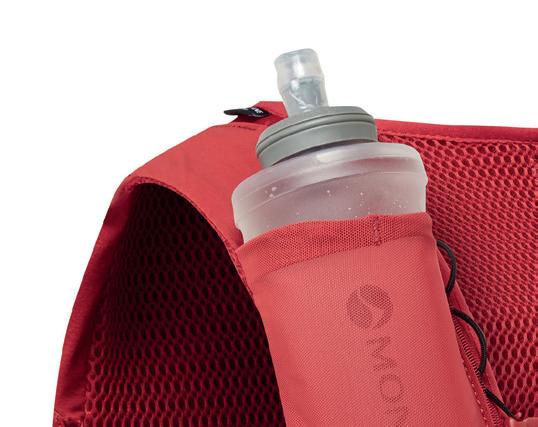


PRICE: £30
These highly water-repellent gloves have a luxuriously soft and low-bulk inner fleece lining along with full dexterity to support exercise in cold weather. They also feature a grippy palm and touchscreen-friendly fingers, so you can confidently use your phone for navigation.
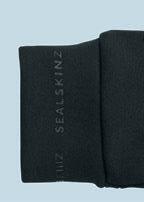
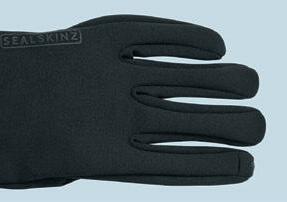
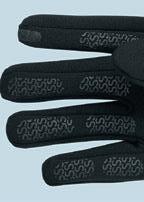
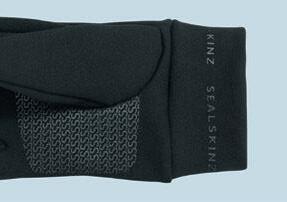





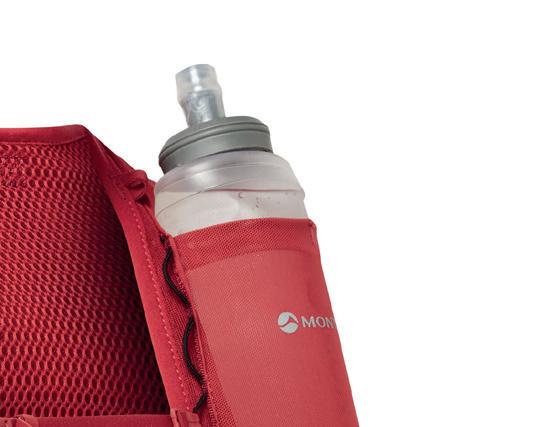




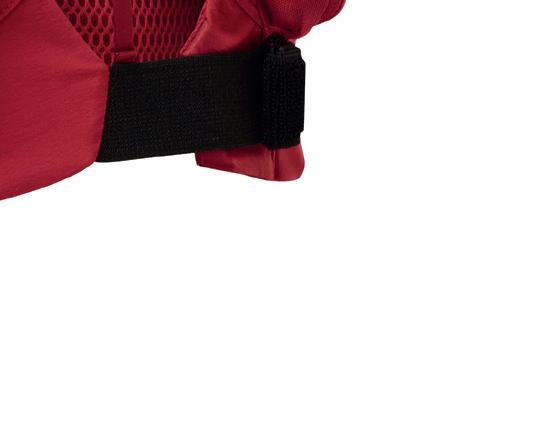
PRICE: £20






PRICE: £75









These dual-layered shorts from Montane feature a soft, stretchy, and breathable inner lining made from Econyl regenerated nylon, while the outer is made using lightweight Aeroflyte QD fabric. The waistband is stretchy and adjustable and offers a total of three pockets for your snacks and essentials.
Merino blend socks like these are the perfect companion for winter trail running, offering warmth, sweat-wicking, comfort, and durability while also bringing odour resistance as well. The seamless toe eliminates any risk of niggles, and they have a women’sspecific, slimmer shape and narrower heel.


sweat-wicking, comfort,




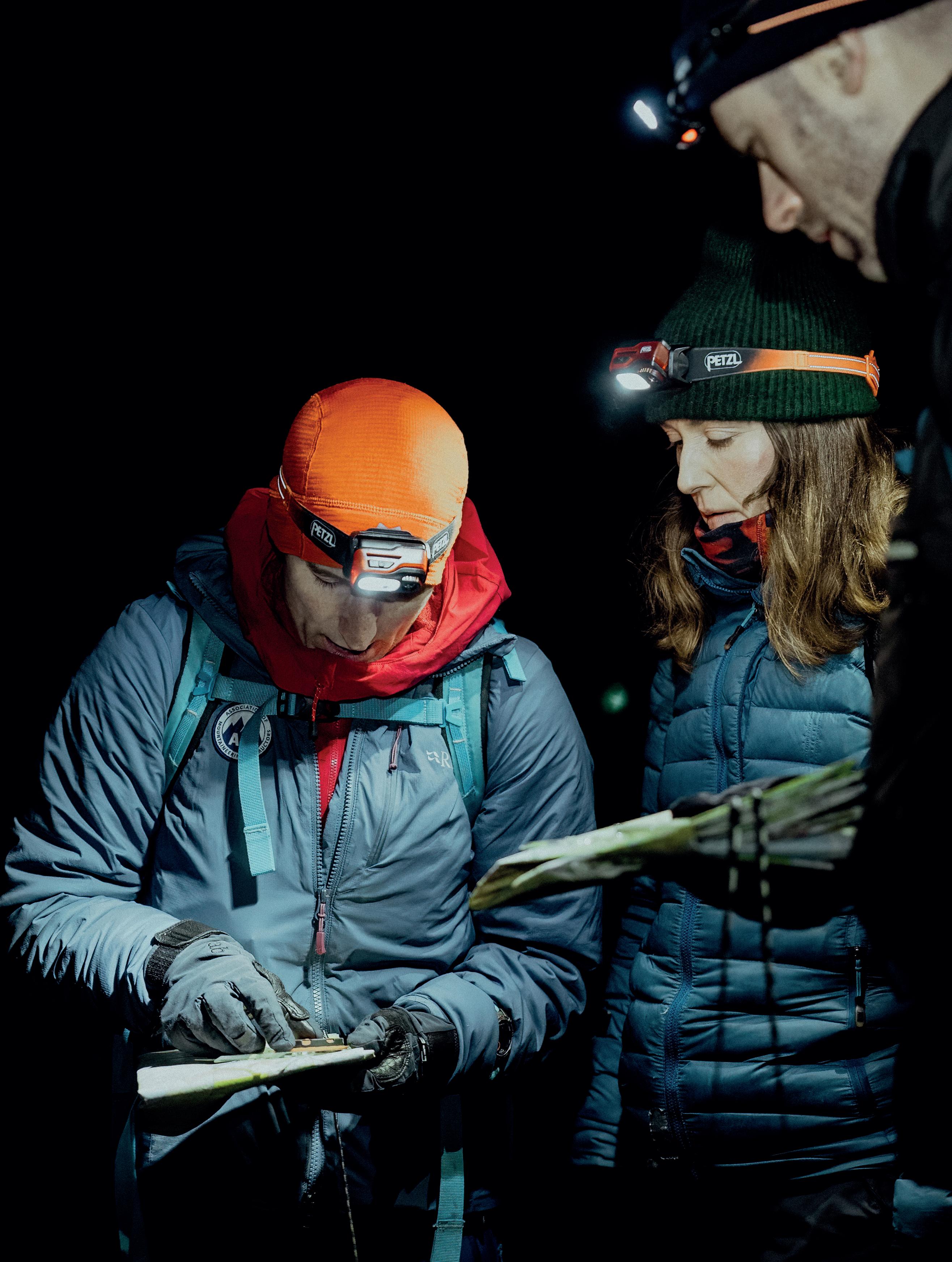
Senior instructor at Glenmore Lodge, Jon Jones, shares his expert advice
The essential component of night navigation is proper planning. Preparation will reduce the chance of having to navigate at night, and if you are expecting to be on the hill in the dark, knowing you are following a route that has been planned to be as straightforward as possible is a big help. If you know it is going to be a big hill day, then start early (even if that means in the dark!) as it is far easier to ‘walk into the light’ of day rather than letting your hill day bleed over into the dark.
If you are walking in poor visibility or at night, and not following a path, then you must be tactical about the route choice. Ideally, follow some kind of linear feature, like a spur or ridge, the base of a valley, or a strong water feature. Navigating in poor conditions can be really stressful so having a set structure to follow will mean you won’t miss or forget an important step in your navigation strategy. Remembering the 5 Ds is essential:
• Distance (measuring between chosen points or features)
• Direction (taking a bearing)
• Duration (how long it will take)
• Description (the 3-dimensional image of the landscape and what you expect to encounter)
• Destination (what you expect to find when you arrive)

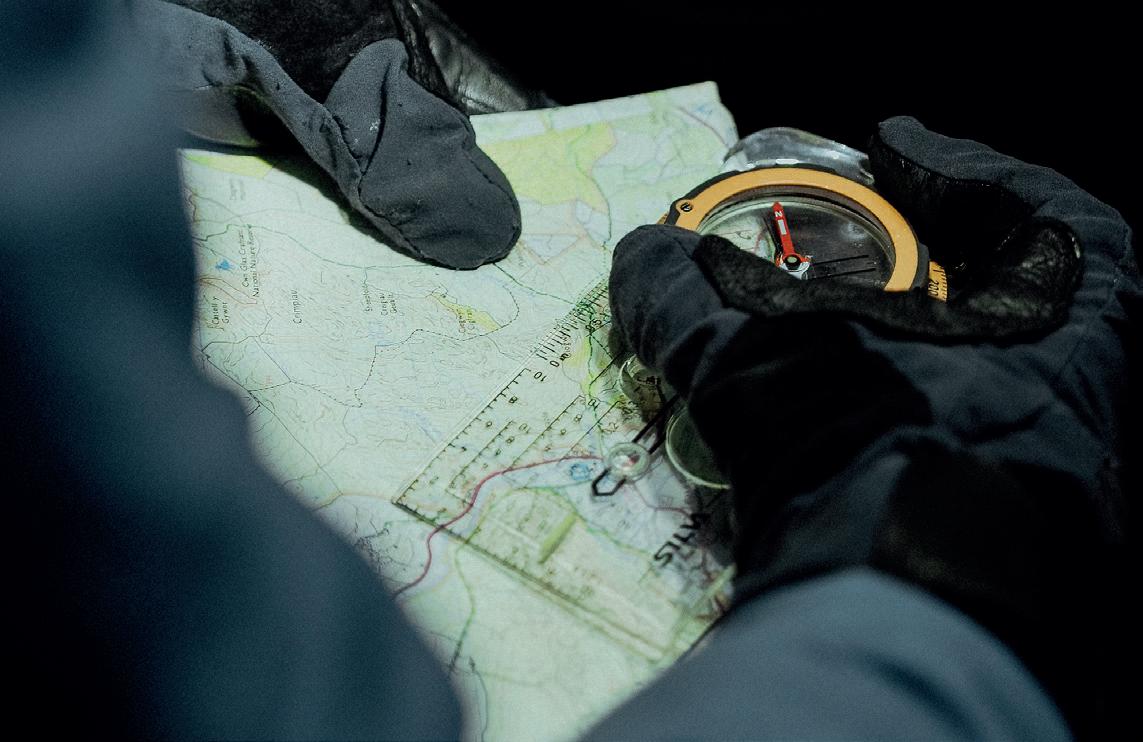
Using a compass to measure the distance you intend to travel helps to work out how long it will take to arrive at your chosen destination. You also need to add extra time if ascending a slope. Over short distances (between 100-500 metres), count your steps to help with accuracy. Practising this on flat ground first, then on a path up and down hill, then off the path, will help you know your own average number of steps for a 100m (don’t count every step but every other step so the numbers don’t get too big). It’s also worth bearing in mind that if you walk at 4km/h in daylight this can reduce up to half (2km/h) at the end of the day in the dark if you’re not on a path!
“VISUALISING THE SHAPE OF THE LANDSCAPE BY LOOKING AT THE LINES ON A MAP IS A VERY USEFUL SKILL...”
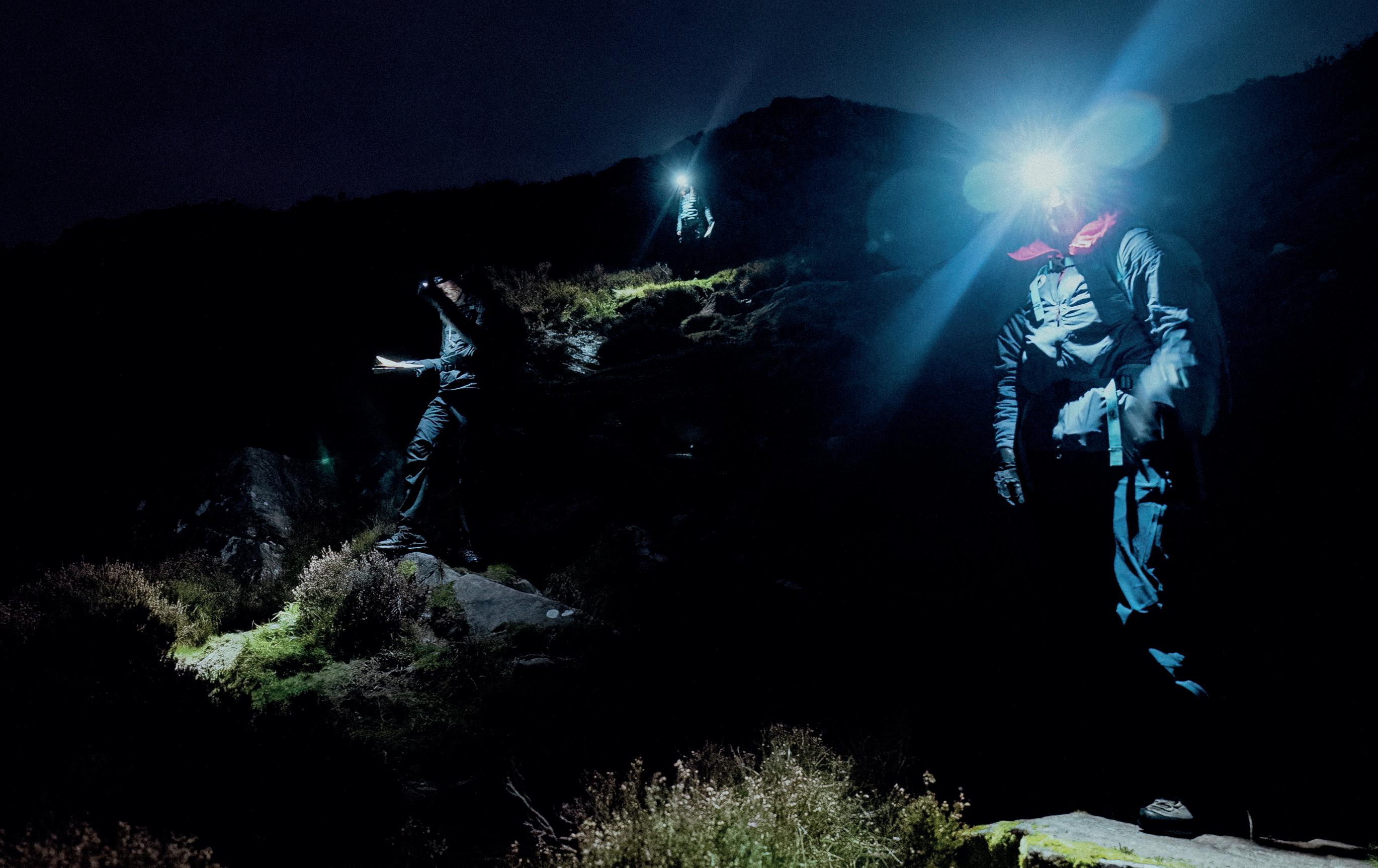
Being comfortable in the use of the compass is essential for night navigation. You should aim to be practised and confident in taking a bearing from the map and walking accurately on this bearing to a chosen feature in daylight. This way, when you put your skills to the test in the dark or poor visibility, you can be confident in your abilities.
Visualising the shape of the landscape by looking at the contour lines on a map is a very useful skill that can be developed with practice and experience. Creating a mental picture of a 3-dimensional landscape is especially useful when interpreting the map to the ground in either poor visibility or at night. When you can’t rely on seeing much of your surroundings, you’ve got less information to make your decisions with. As such, being confident in your interpretation of the contours and the ground you’re walking on is key.
Identifying hazards on the map such as steep ground, cliff edges, or water features such as mountain burns that might be in spate is an important part of the planning process. Work out how you’re going to avoid these prior to heading
out by looking at the map, reading guidebooks, websites, blogs and weather forecasts to ensure you’ve got all the information you need. This way, you can ensure your chosen route is one that minimises the amount of difficulty you encounter, which is particularly important when you’re anticipating being out in the dark.
Finally, if it doesn’t all go to plan – for instance if the ground is not what you expected to find at your destination – how do you relocate? You might be able to simply walk 100m further in case you are just short of the feature. Or if you need to gather more information to figure out where you are, tactics for this might include taking an aspect of slope, or walking 50-100m on each of the cardinal points to build a picture of the ground around you that you can then relate to your map. Or if you have the technology, locate yourself on your mapping app on your phone or GPS!
Glenmore Lodge, the National Outdoor Training Centre, offers extensive instruction to improve your night navigation skills, along with courses in areas like mountaineering, rock climbing, and expedition leadership. With a focus on practical experience and expert guidance, their diverse programs are designed to build confidence and competence in various outdoor activities. Discover more about their courses at glenmore-lodge.org.uk




PRICE: £25





PRICE: £72
MAX LUMENS: 40
In winter, it’s essential to carry a backup head torch just-incase things go array with your main one. And it’s always handy if that backup –which, in most cases, will stay in your pack – is light and compact. This tiny, 27g option from Black Diamond fits that brief perfectly.
MAX LUMENS: 600
The Actik Core has a clever hybrid fuel design - it comes with a rechargeable battery but can also run off AAAs, no adapter needed. Offering 600 lumens on its highest setting and multiple lighting modes, it’s an excellent outdoor allrounder. The red night vision setting aids with evening navigation.


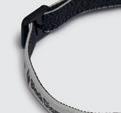




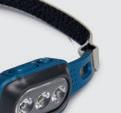

PRICE: £55
MAX LUMENS: 325
With its low weight of just 39g, compact casing, and stable headband, this rechargeable head torch is the ideal companion for your evening urban run. It gives off 325-lumens and the angle of the beam adjusts at the click of a button to match the gradient of the path ahead.
PRICE: £150 MAX LUMENS: 1,500
The Nao RL from French head torch specialists, Petzl, is the model of choice for ultra-runners. It gives off a whopping 1,500 lumens and has Reactive Lighting technology that automatically adjusts brightness to best suit your environment. The rechargeable battery pack sits at the rear for comfort and includes a rear red light for better visibility.






PRICE: £24
MAX LUMENS: 300
This great value head torch is light, bright, and easy-to-use, making it perfect for camping and general outdoor use. It runs off three AAA batteries (which are included) but it’s also compatible with Petzl’s CORE lithiumion rechargeable battery (purchased separately).
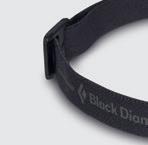
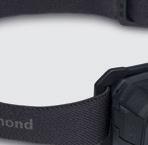


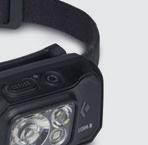

PRICE: £65
MAX LUMENS: 500
Capable of withstanding the worst of weather, this waterproof head torch is made for the mountains. On its full mode you’ll get 500 lumens of light with a 120-metre reach. Multiple lighting modes adapt to your outdoor needs, and you can recharge the battery via Micro USB.






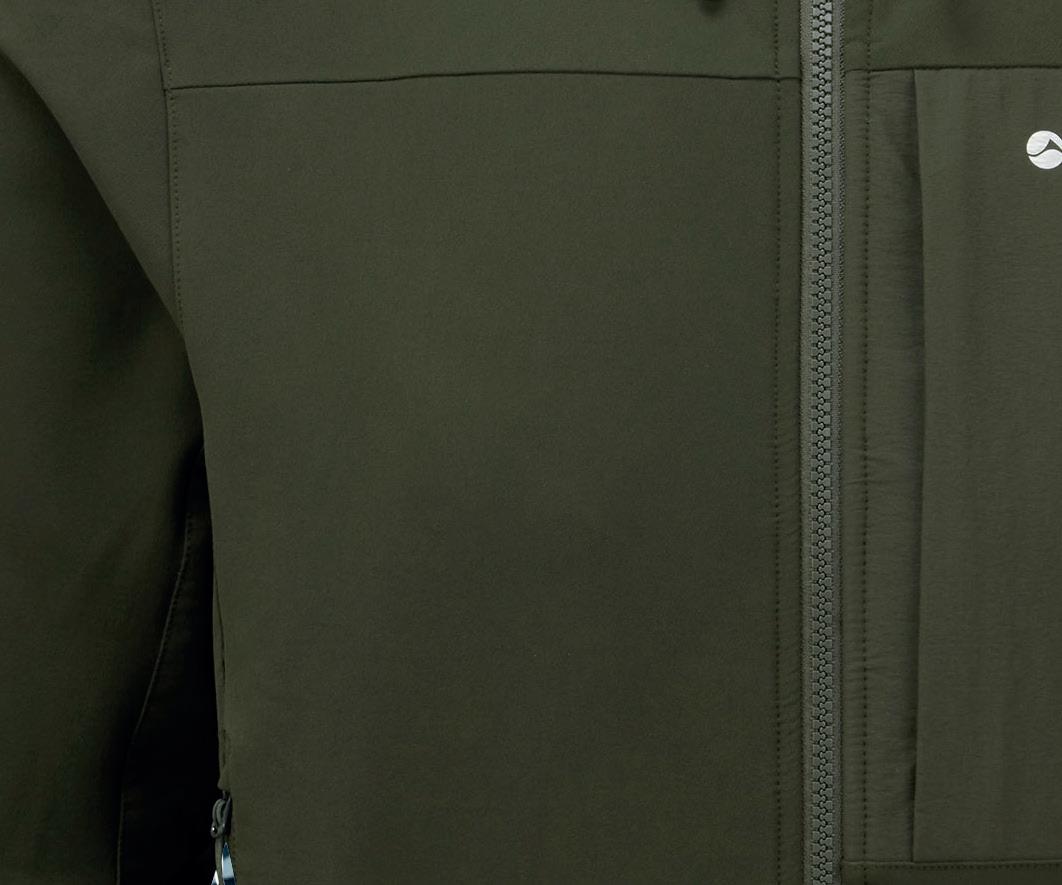

PRICE: £160
Warm, comfortable, and protective, the Tenacity XT’s double weave stretch softshell is well set to counter varied mountain conditions. It has a helmetcompatible hood with a reinforced peak, zipped pockets to keep your bits and bobs secure, and a fit that will accommodate extra layers underneath.









PRICE: £200








Weighing just 252g and designed to pack away into its own pocket, this is an insulator for those who want warmth without bulk or weight. Efforts have been taken to make it as sustainable as possible, most notably with the use of a ripstop shell made from fishing nets.






PRICE: £160






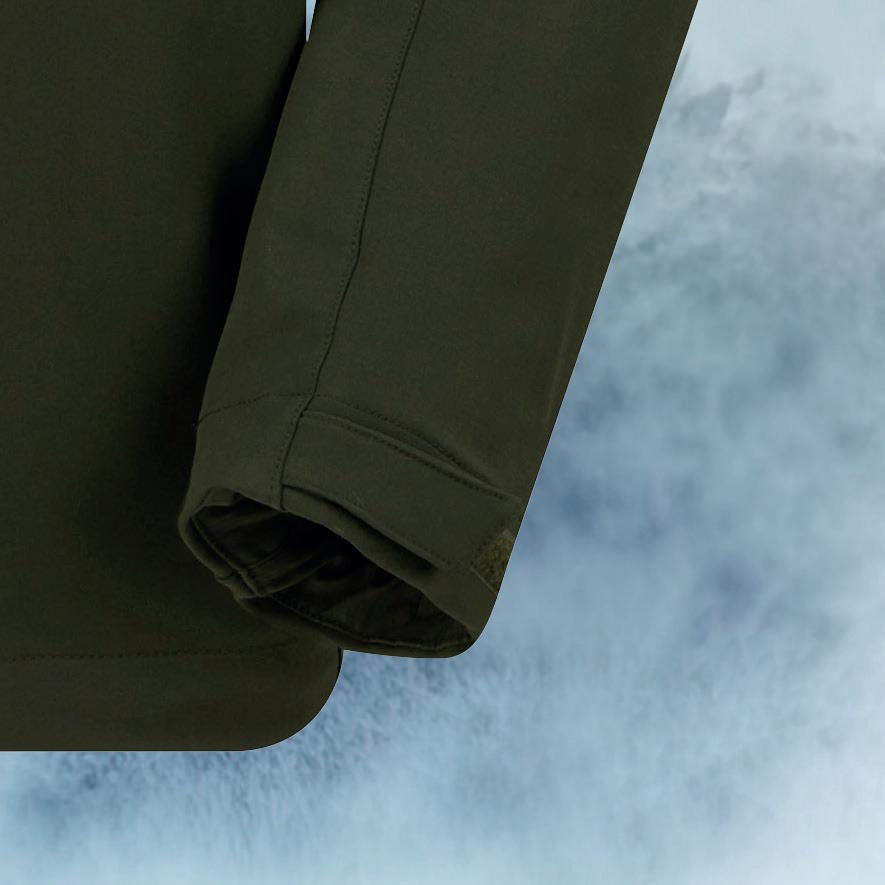



This classic, Fair Trade Sewn vest might have a laid-back style but it’s built for performance. The partially recycled high pile fabric, for instance, is windproof and warm and it’s embedded with HeiQ Pure technology to make it odour resistant.





WOMEN’S
PRICE: £175
With its excellent warmth-to-weight and temperature regulating weave, this serves as a highly effective mid layer for winter activities like mountaineering. It’s made from Polartec Thermal Pro Hi Loft fleece and has a tailored fit that still leaves space for extra base layer warmth.


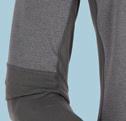
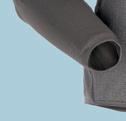
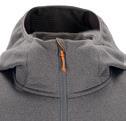

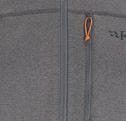


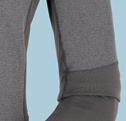

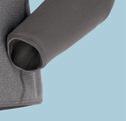
PRICE: £110
Perfect for hiking and climbing, Rab’s Ascendor sees two weights of grid backed fleece body-mapped for effective temperature regulation. It’s designed to work harmoniously under other layers and fits easily under a harness with a longer length at the back to cover the hips.
PRICE: £140


Made from recycled polyester, this midweight fleece can be worn on milder days as a standalone layer or, when the temperatures plummet, as part of a system. Its smooth heathered face lends a casual look, taking you from the hill to pub in style.


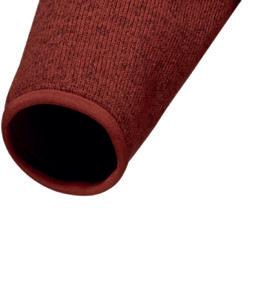












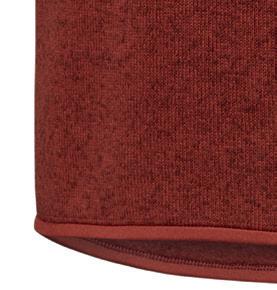




PRICE: £160
The Kyanite is a Polartec Power Stretch Pro fleece jacket. Combining a recycled nylon face with a soft brushed polyester interior, it offers durability, comfort, and warmth. Its athletic fit is cut short at the waist so that it marries perfectly with a waterproof shell.
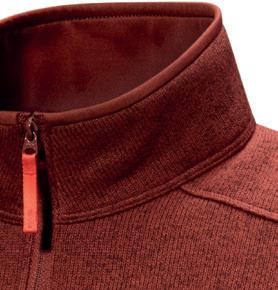















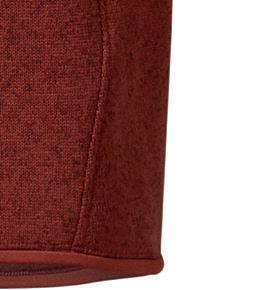




PRICE: £110
Ideal for mixed-mountain use, the Protium XT features a low-profile gridded fleece fabric which is high in warmth and low in bulk. Its smooth outer slides easily under a waterproof shell or belay jacket and the snug hood fits neatly under a helmet.



BLACK DIAMOND GLISSADE GLOVE
£75
Warm, waterproof, and grippy, this is a glove you can rely on to help you through the most challenging of mountain environments. It features a recycled fleece lining, a BD.dry waterproof and breathable membrane, plus goat leather palms with reinforcements on the high-wear areas.

























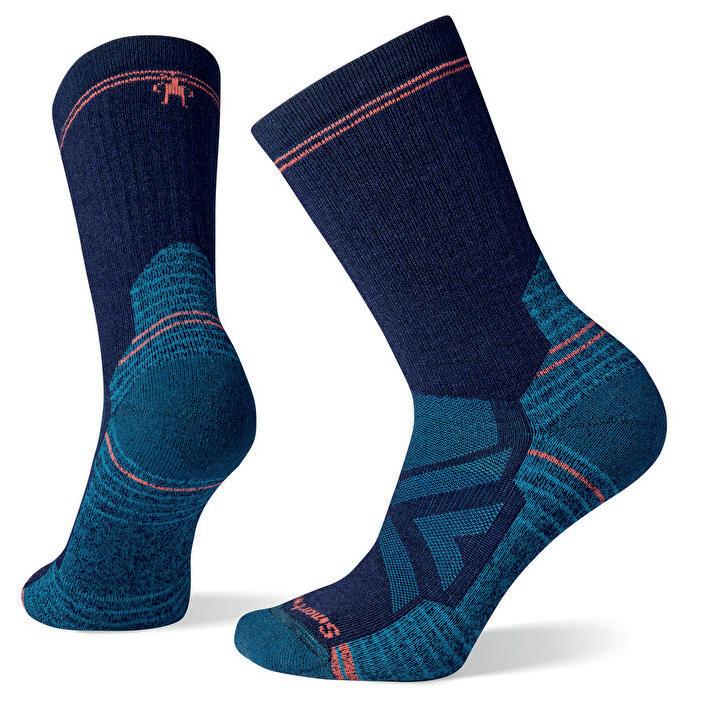
THE NORTH FACE MEN’S THERMOBALL V TRACTION MULES £65
Treat your feet with these incredibly comfortable slippers which feature lofty and warm PrimaLoft ThermoBall synthetic insulation and a cosy fleece lining. Perfect for the campsite, expect a durable outsole that’s made from 40% recycled rubber and a collapsible heel.



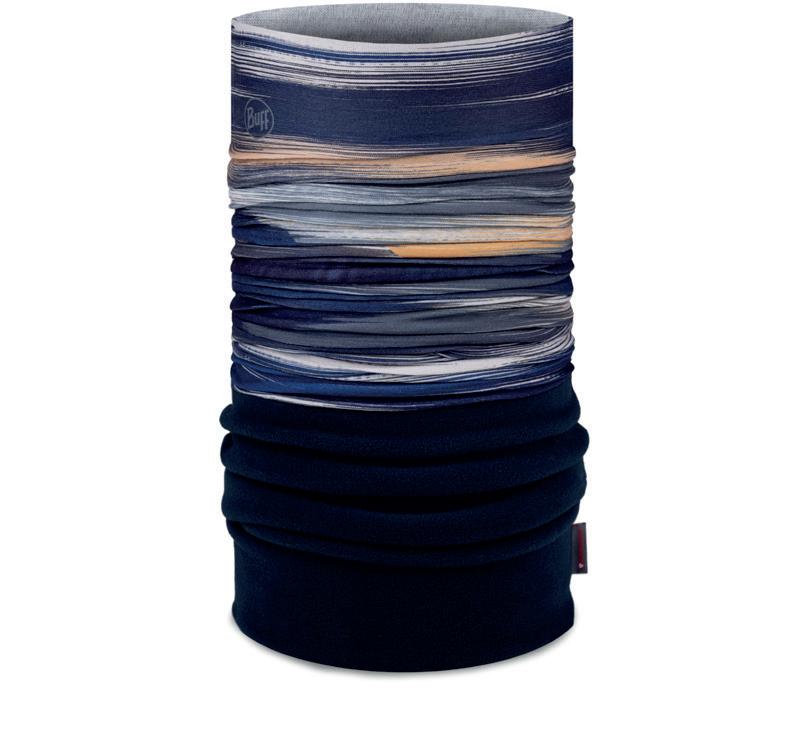
BUFF POLAR NECK WARMER £28
An item every hiker should have in their kit drawer – wear it as a neck warmer, balaclava, hat, and more. It’s made from recycled polyester and elastane, with a special fleece from PrimaLoft that will start to biodegrade if it ever happens to end up buried in a landfill.


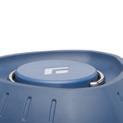


Made for winter hiking and extended backpacking trips, this sock blends merino wool, recycled nylon, and a touch of elastane for a plush, soft feel and excellent sweat-wicking and anti-odour capabilities. The weave is also cleverly mapped to put cushioning, ventilation, and durability in all the right places.








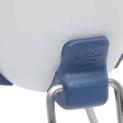






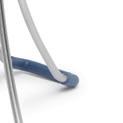




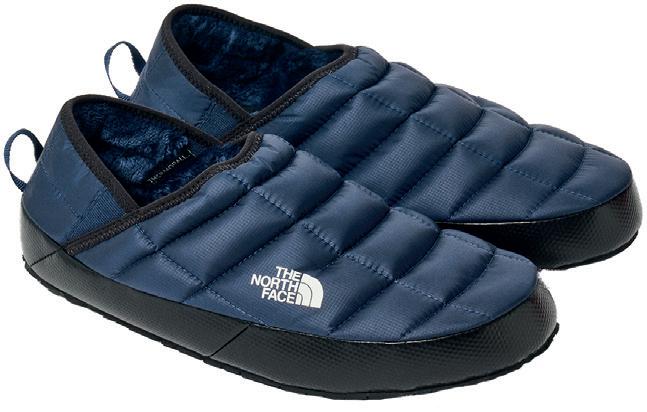




BLACK DIAMOND ORBITER 650 LANTERN £60
Elevate your camping experience with this nifty lamp which will not only illuminate your surroundings but charge up your devices too. It can create a warm glow or focussed beam for map reading and can be hung up or set on a table using its neat folding legs.





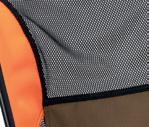










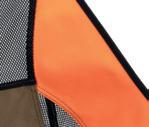


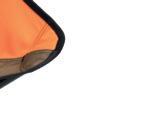





HELINOX SUNSET CHAIR £150
This might just be the ultimate camping chair. Not only is it lightweight, compact, and easy to assemble and pack away, but it’s also incredibly comfy, thanks in particular to its deep seat, high back and the storage bag which does double duty as a pillow.


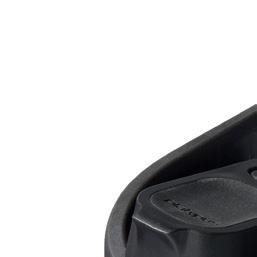

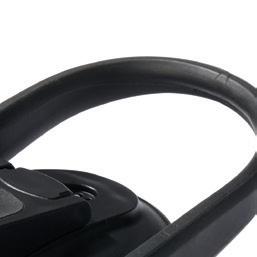





MULTITOOL £80
There aren’t many situations that this 7-in-1 stainless steel multitool can’t help you with. Need to cut a rope for your tarp? Its 6.6cm blade can help you there. Got a screw loose? Crack out the bit driver. You also get pliers, wire cutters, and a carabiner clip with built-in bottle opener functionality.
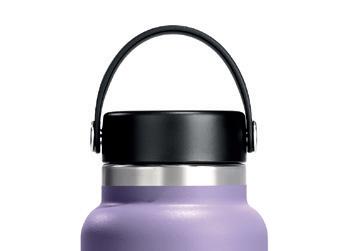
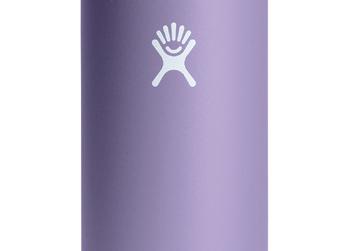

This stainless steel bottle utilises a tried and tested double wall vacuum construction that’s able to keep drinks hot for up to 12 hours, or cold for up to 24. What’s more, the wide mouth not only makes adding ice easier, but it also creates compatibility with some personal water filters.
This duffel is virtually indestructible but if some kind of accident does arise, you can be safe in the knowledge that Patagonia have designed it to be easily repairable. Recycled materials are used throughout, the outer material has a highly water-resistant coating and there are storage pockets and lash points too.
PLATYPUS DAYCAP IN-BOTTLE FILTER £40
This handy little device from Platypus can transform Nalgene, Hydro Flask, and Yeti Yonder wide mouth bottles into your own personal water filter. Using hollow fibre filtration, it’ll safely remove 99.9999% of bacteria and 99.9% of protozoa from water sources at up to a litre per minute.
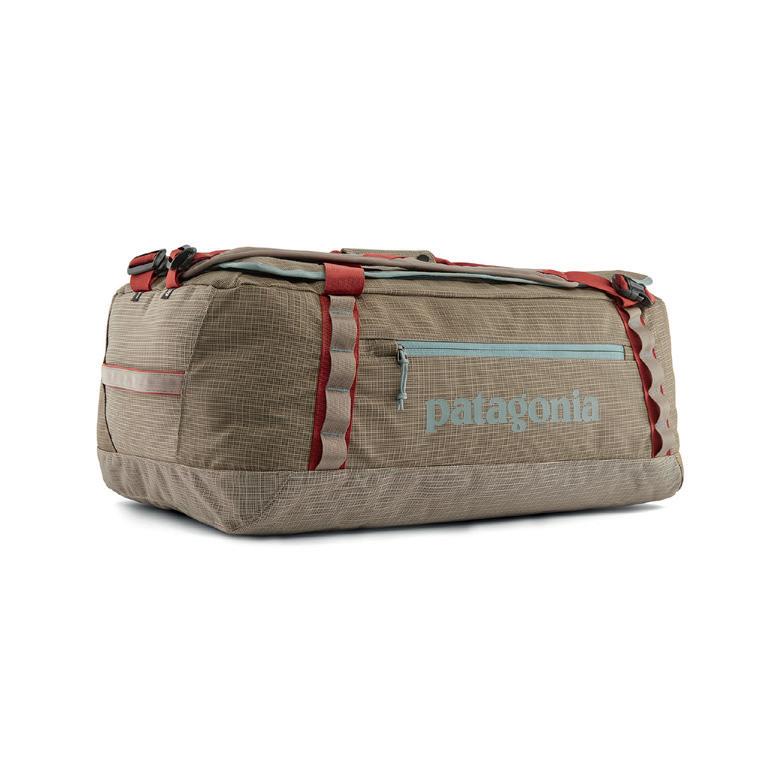
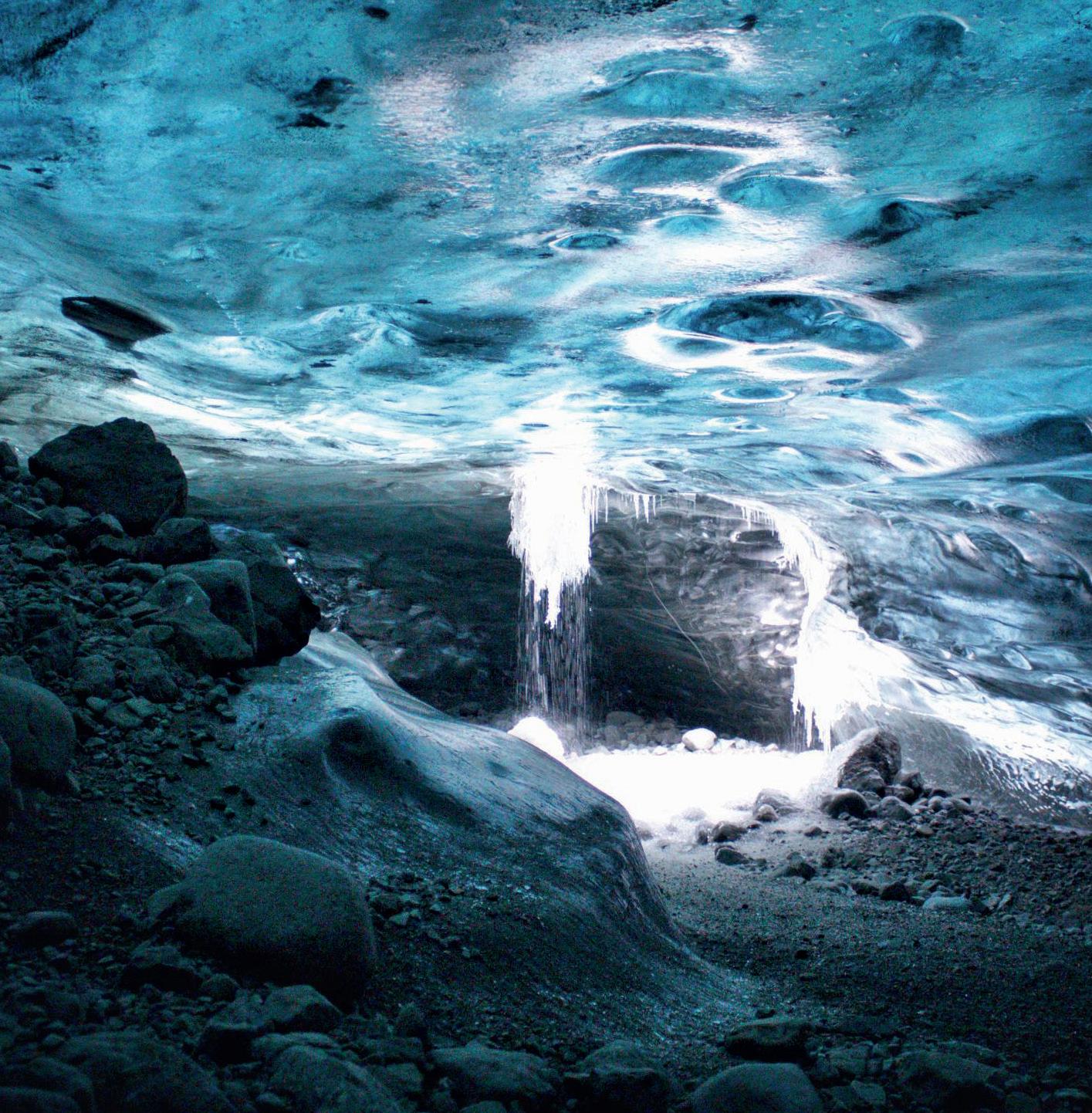
We hired a 4x4 and did a road circuit of Iceland over ten days in March this year. We’d done our research beforehand and the main aim was to capture the aurora borealis, aka the Northern Lights, and to see the various geological features of the island, including exploring the ice caves of Vatnajökull.
The weather was a real challenge. We chose the end of March because we expected manageable temperatures. There was an unseasonable amount of snowfall and very low temperatures while we were there, which made driving and hiking very difficult. The windchill was pretty incredible to be honest. But views of the north covered in snow made us pull over several times a day.
A hike on Vatnajökull glacier to explore ice caves that have formed there was incredible. With a guide, you’re able to walk and crawl in gaps between the ice, the sunlight making the caves light up an eerie blue.
Another highlight was seeing the Northern Lights dance over the Snæfellsnes Peninsula.
Preparation is key. The weather can change in an instant and frequently did. There was substantial ice on a lot of the hiking routes making for challenging conditions. Layering clothing really helped to protect us against the windchill that dropped below -20°C and we found walking spikes and a Buff to be invaluable pieces of kit throughout the whole trip.
David Davies on his road trip exploring the geological wonders of the land of fire and ice.

Name: David Davies
Job Title: Customer Services
How long at EB: 3 years
Location: Head Office
The trip: Glacier hiking and the Northern Lights in Iceland
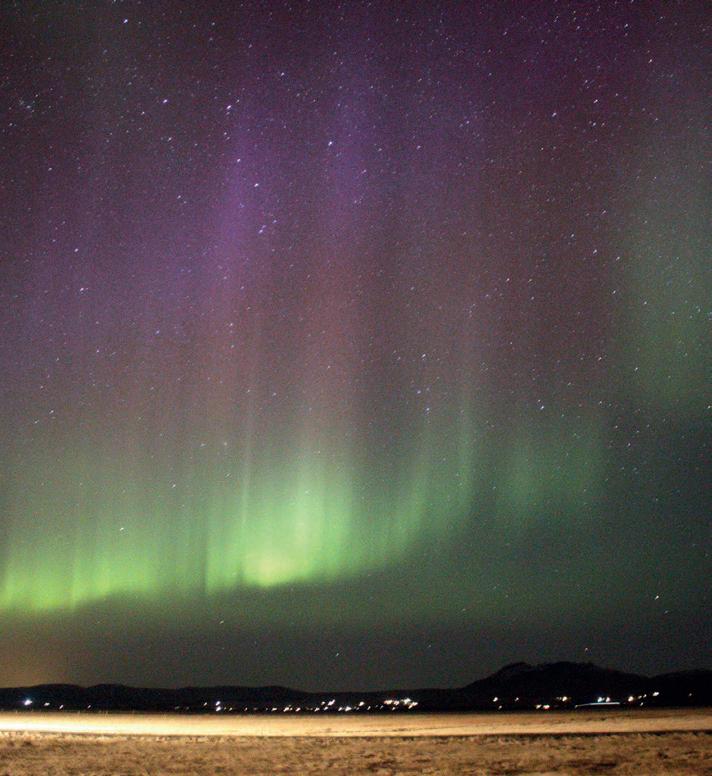
Ellis Brigham run an Expedition Grant that funds staff adventures through the year, enabling their employees to experience their dream trips.
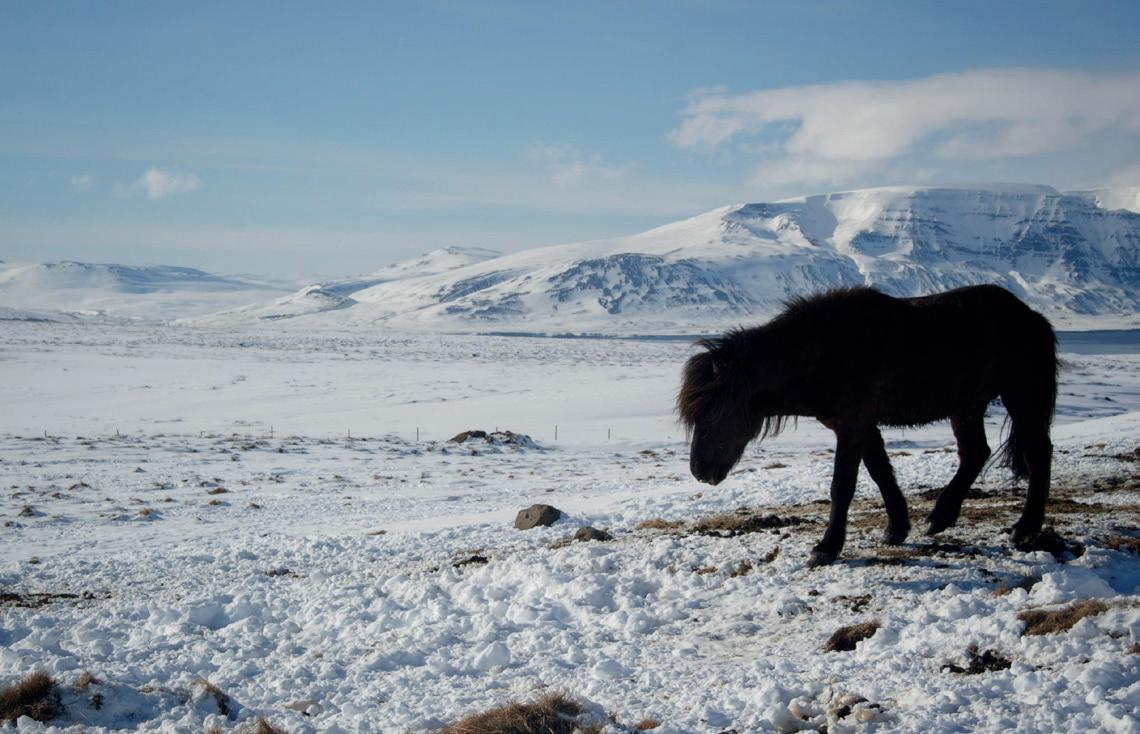
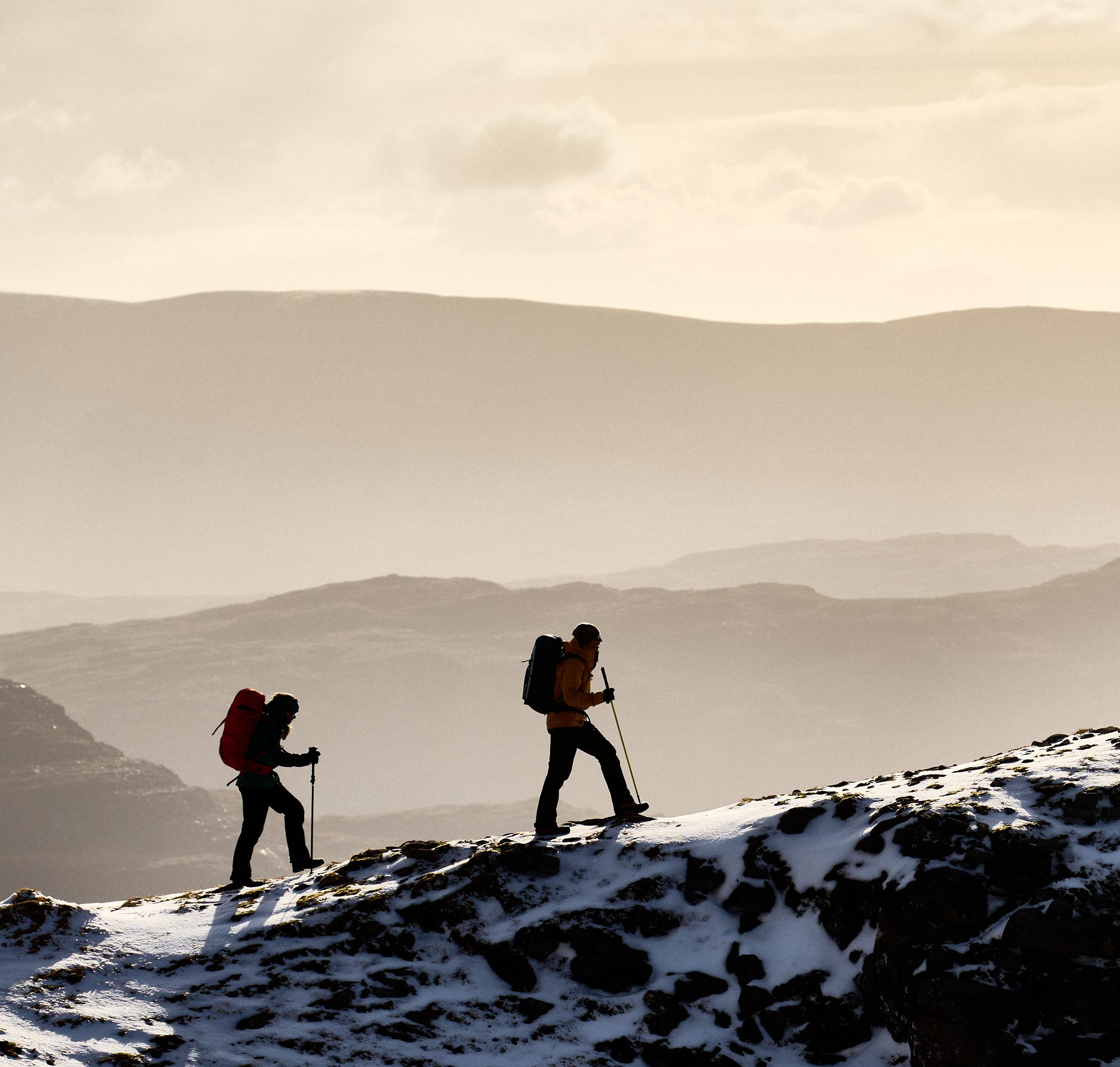
As clouds clear and the landscape thaws, the mountains become our meeting place.
Where we discover new routes together, and bonds are formed on the summit.


SERIOUS PROTECTION
WATERPROOF SHELLS WITH DRYVENT™ TECHNOLOGY PROVIDE RELIABLE PROTECTION FROM THE ELEMENTS WHEN YOU NEED IT MOST.
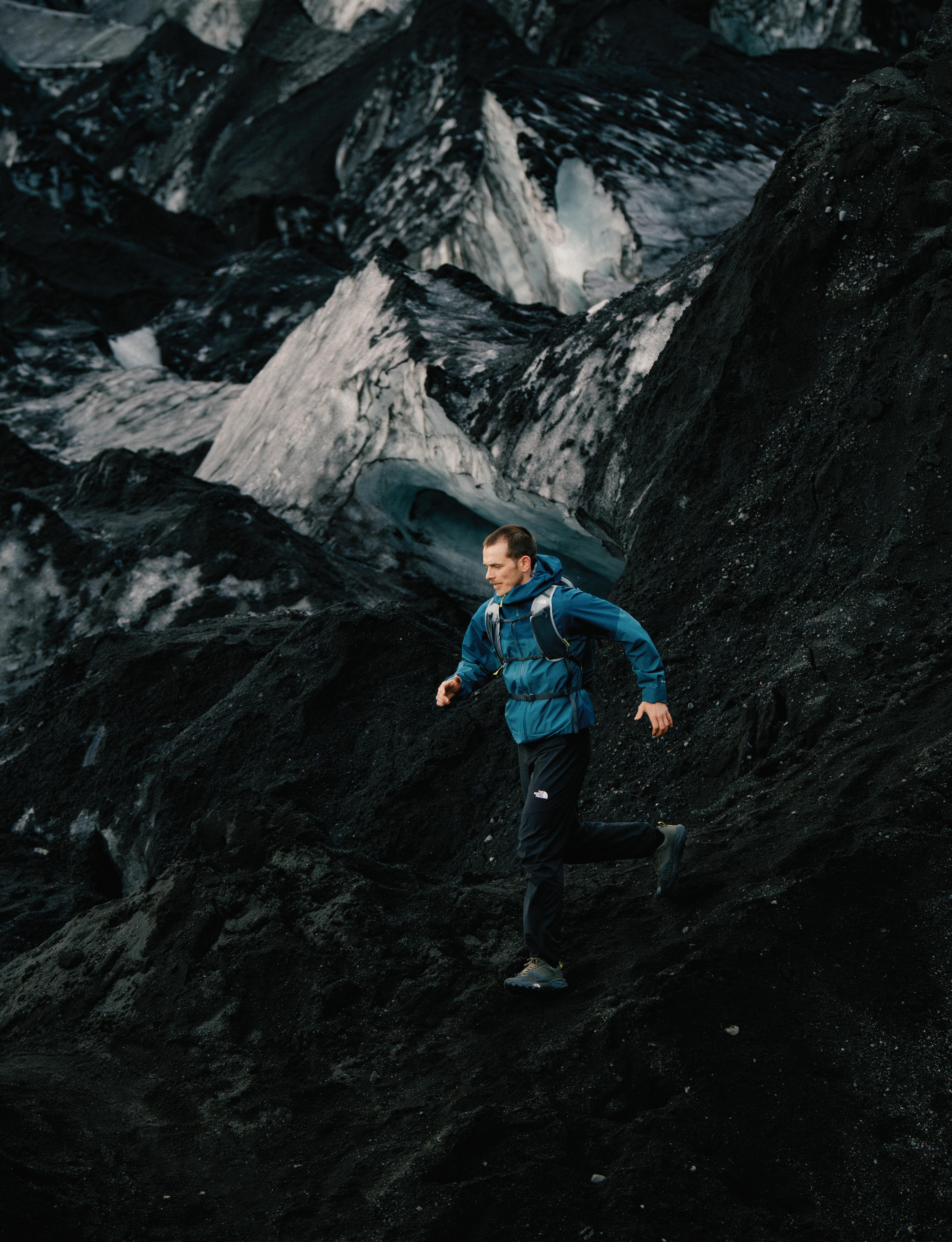
BREATHABLE WARMTH WHEN TEMPERATURES DROP ON THE TRAIL, POLARTEC® POWERGRID™ FLEECE KEEPS YOU WARM WITHOUT COMPROMISE ON BREATHABILITY.
DESIGNED TO ADAPT LIGHTWEIGHT, COMPRESSIBLE FABRICS KEEP PACK VOLUMES LOW WHEN STOWING GEAR AND SWITCHING BETWEEN ACTIVITIES.